Category: 2023
Aappo Törmänen
(ba)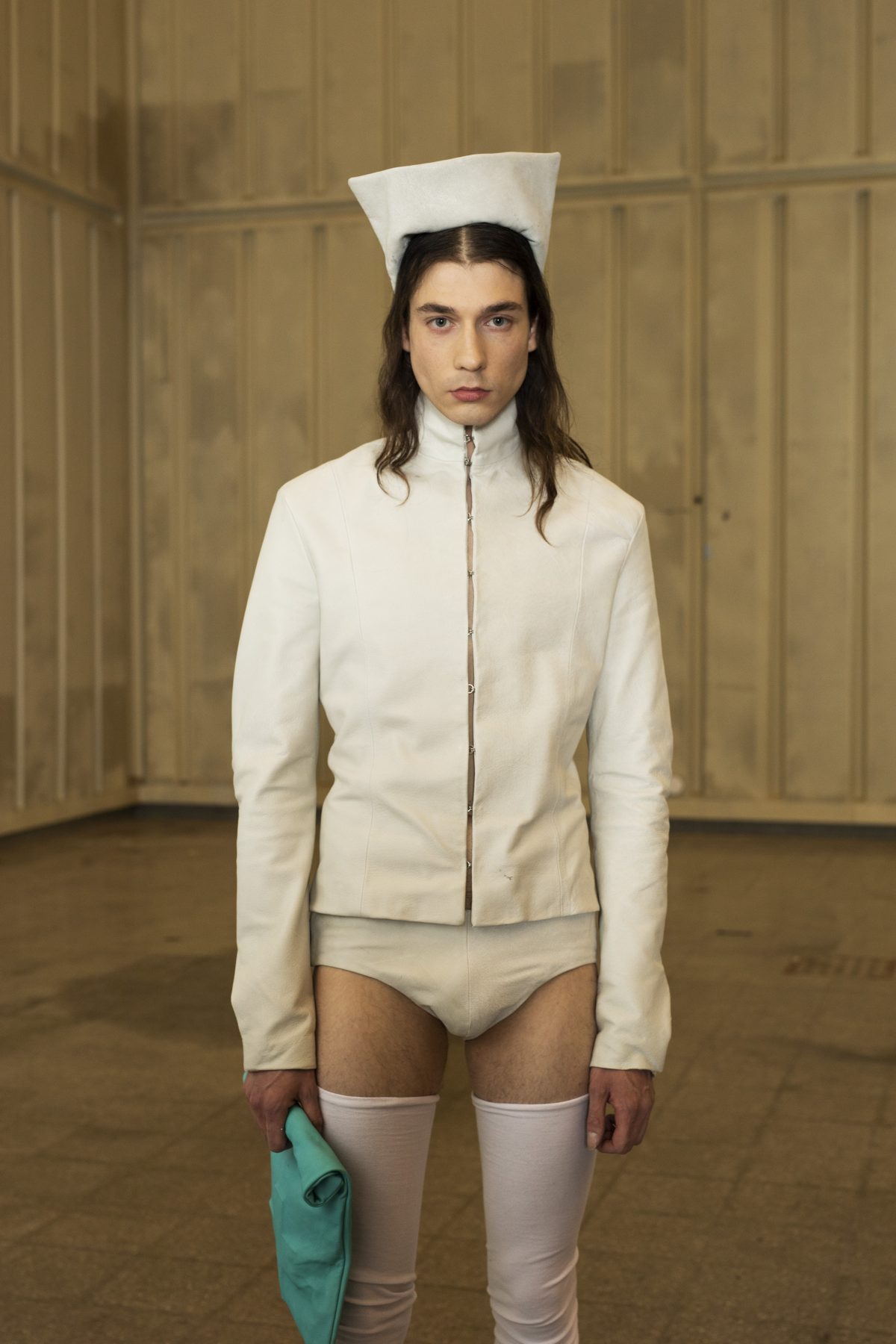 AT_01
AT_01

Aappo Törmänen BA3 Graduate collection Photographer: Sofia Okkonen Model: Appo
AT_01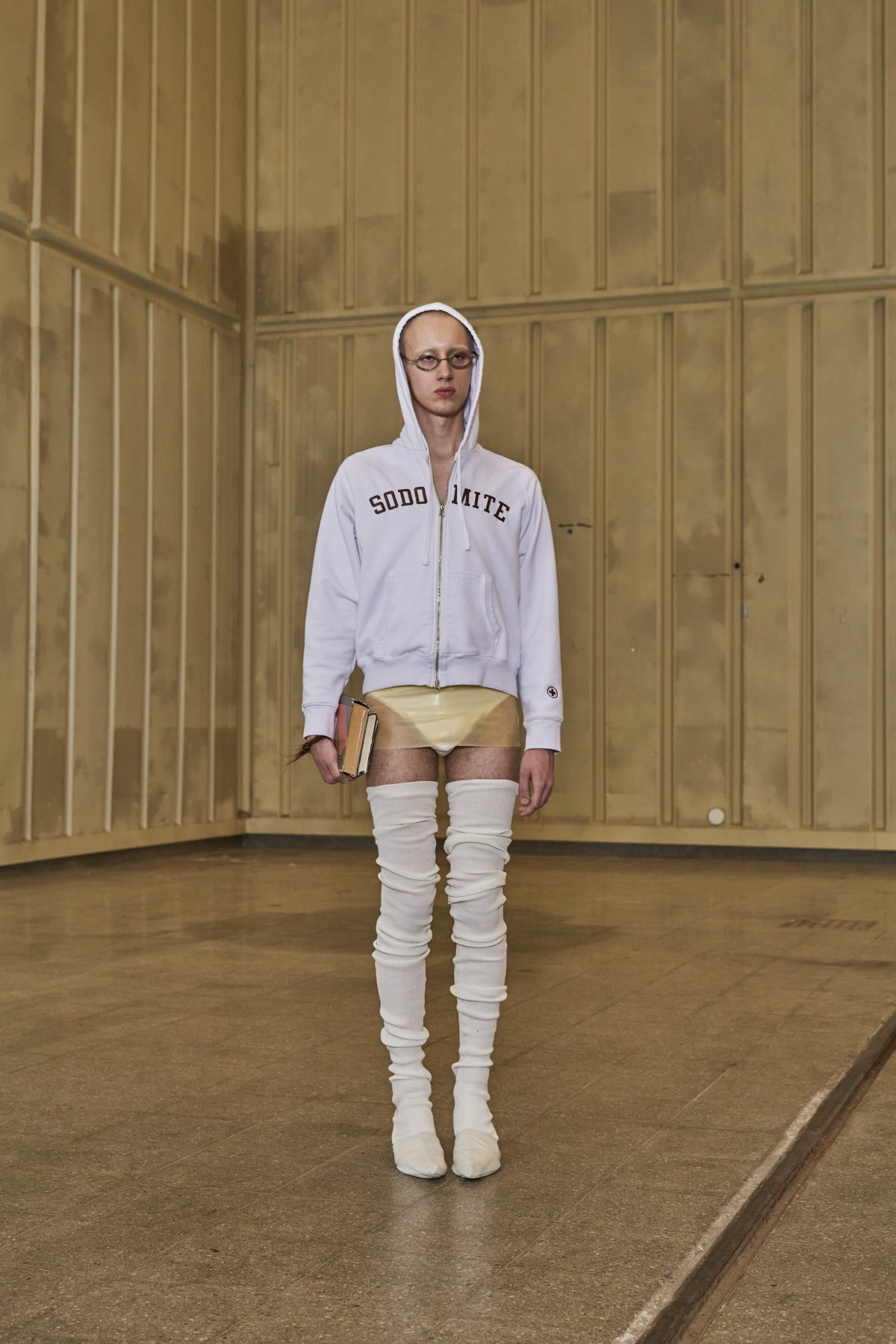 AT_02
AT_02

Aappo Törmänen BA3 Graduate collection Photographer: Sofia Okkonen Model: Ville
AT_02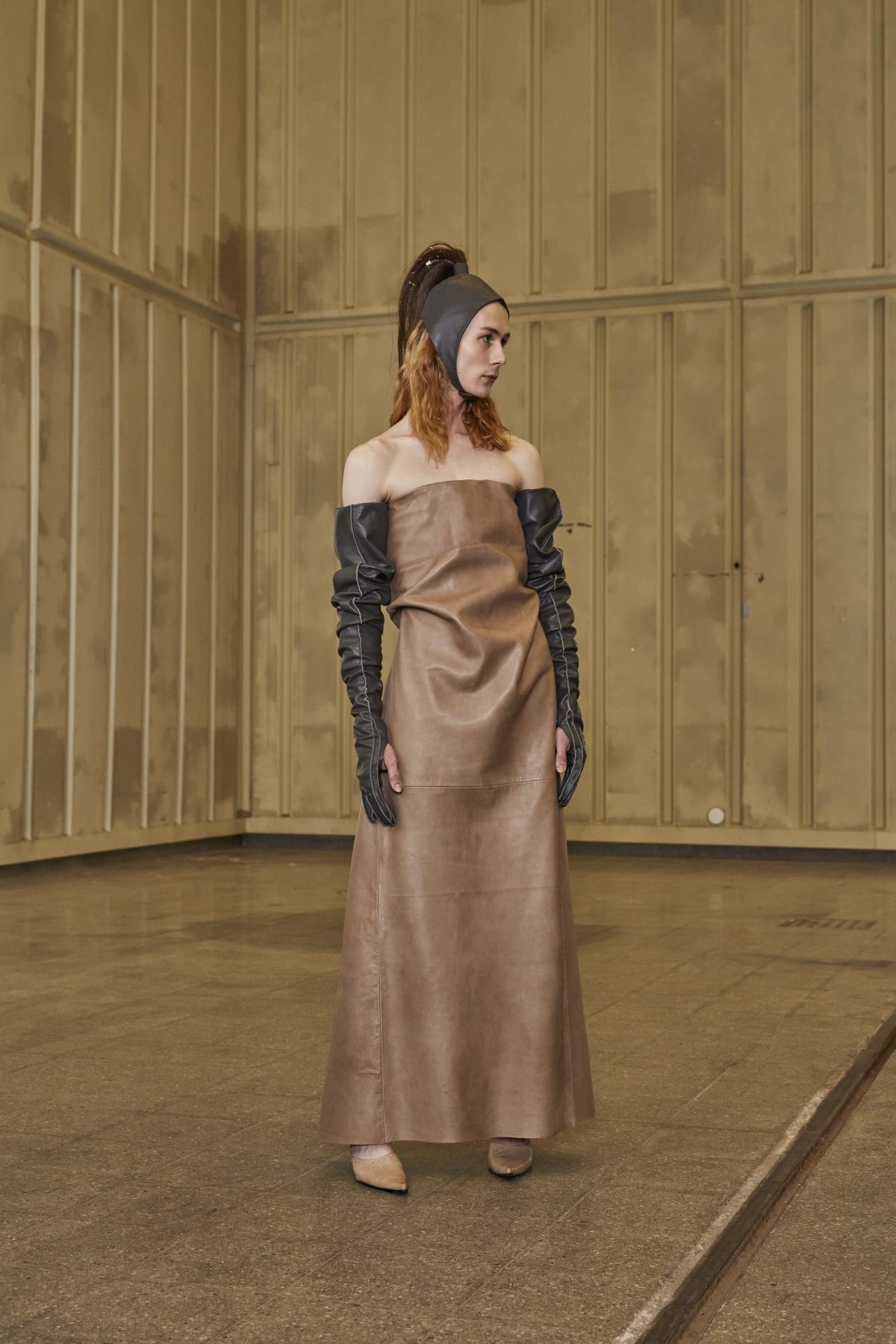 AT_03
AT_03

Aappo Törmänen BA3 Graduate collection Photographer: Sofia Okkonen Model: Marcel
AT_03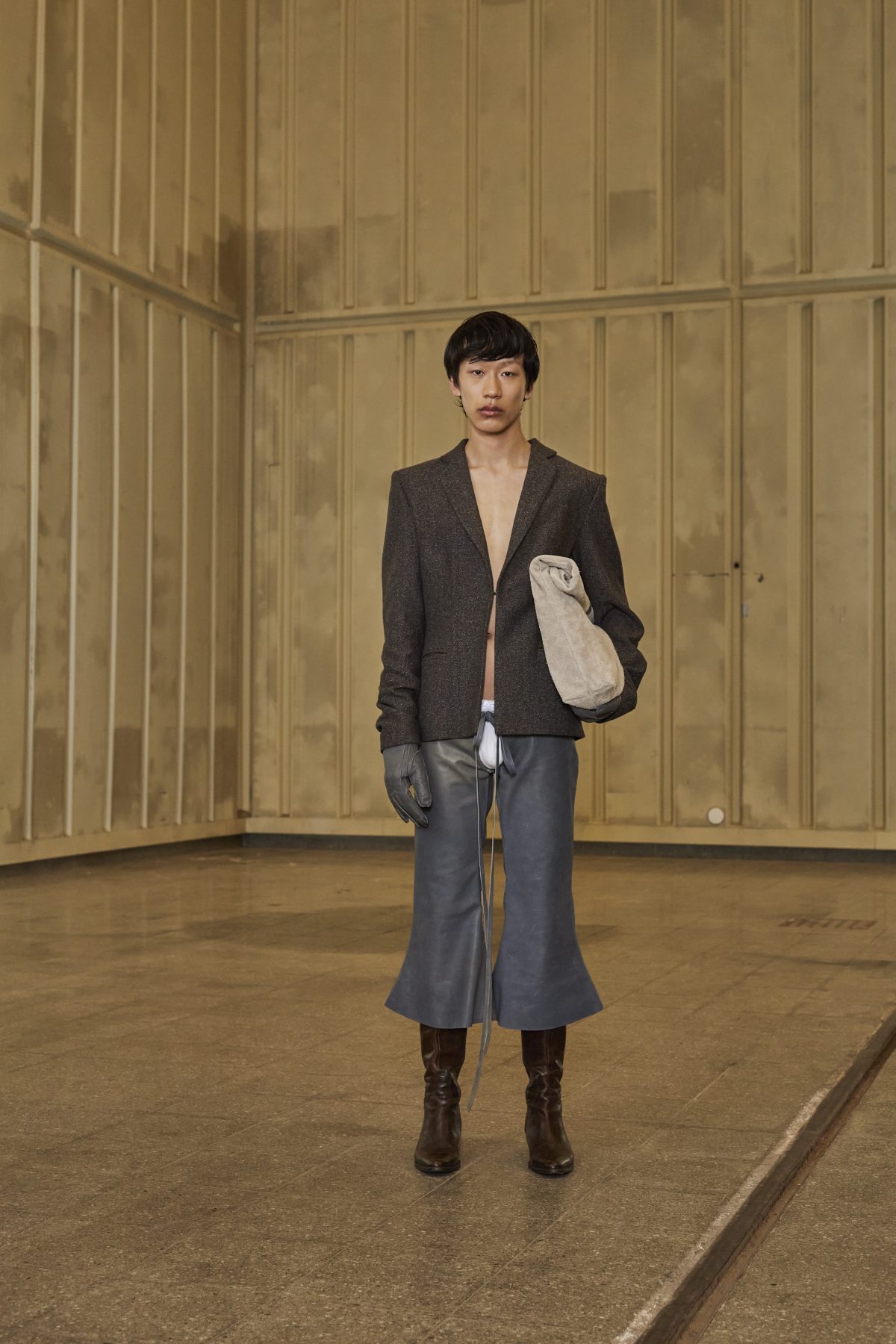 AT_04
AT_04

Aappo Törmänen BA3 Graduate collection Photographer: Sofia Okkonen Model: Jianpeng
AT_04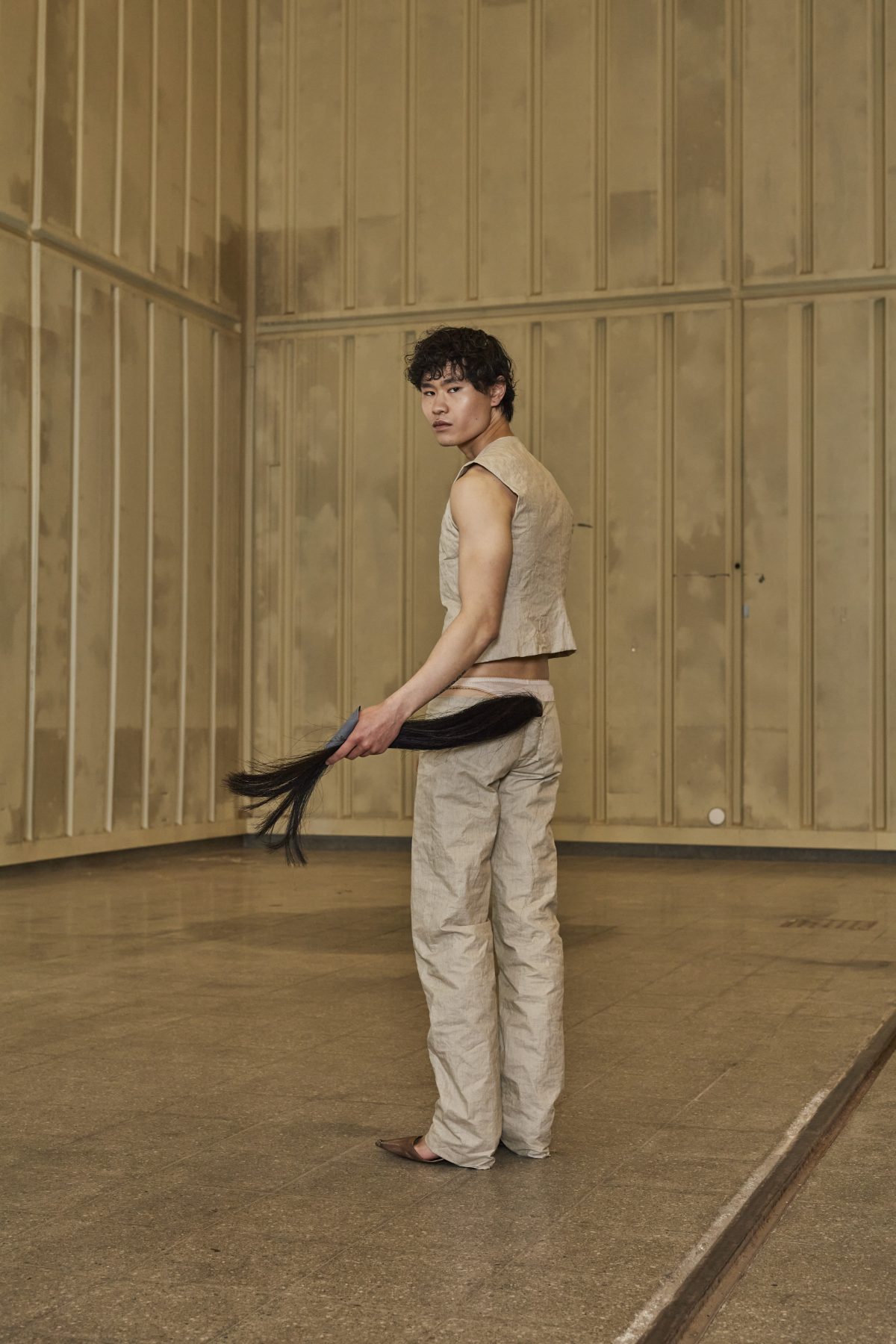 AT_05
AT_05

Aappo Törmänen BA3 Graduate collection Photographer: Sofia Okkonen Model: Antti
AT_05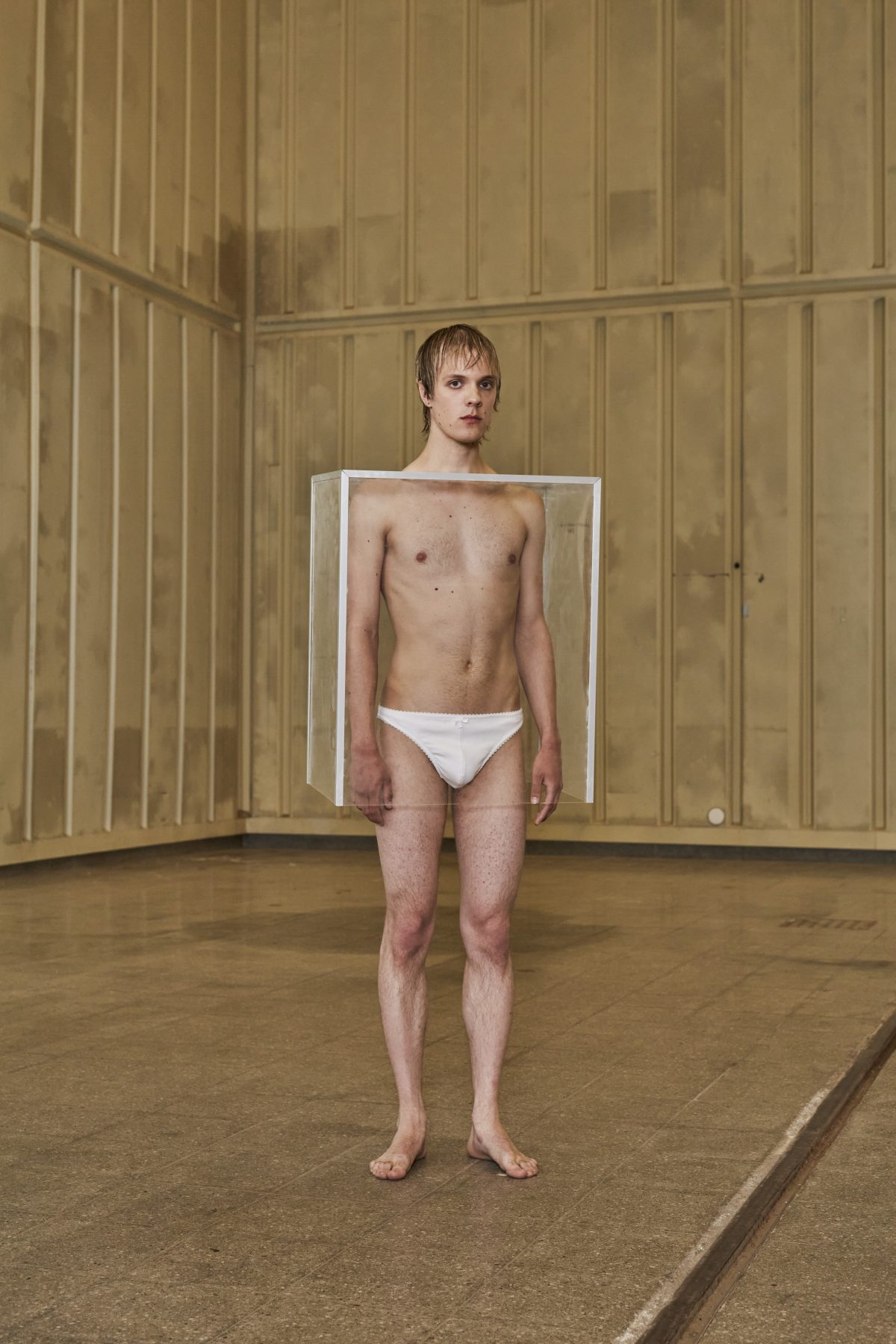 AT_06
AT_06

Aappo Törmänen BA3 Graduate collection Photographer: Sofia Okkonen Model: Jakko
AT_06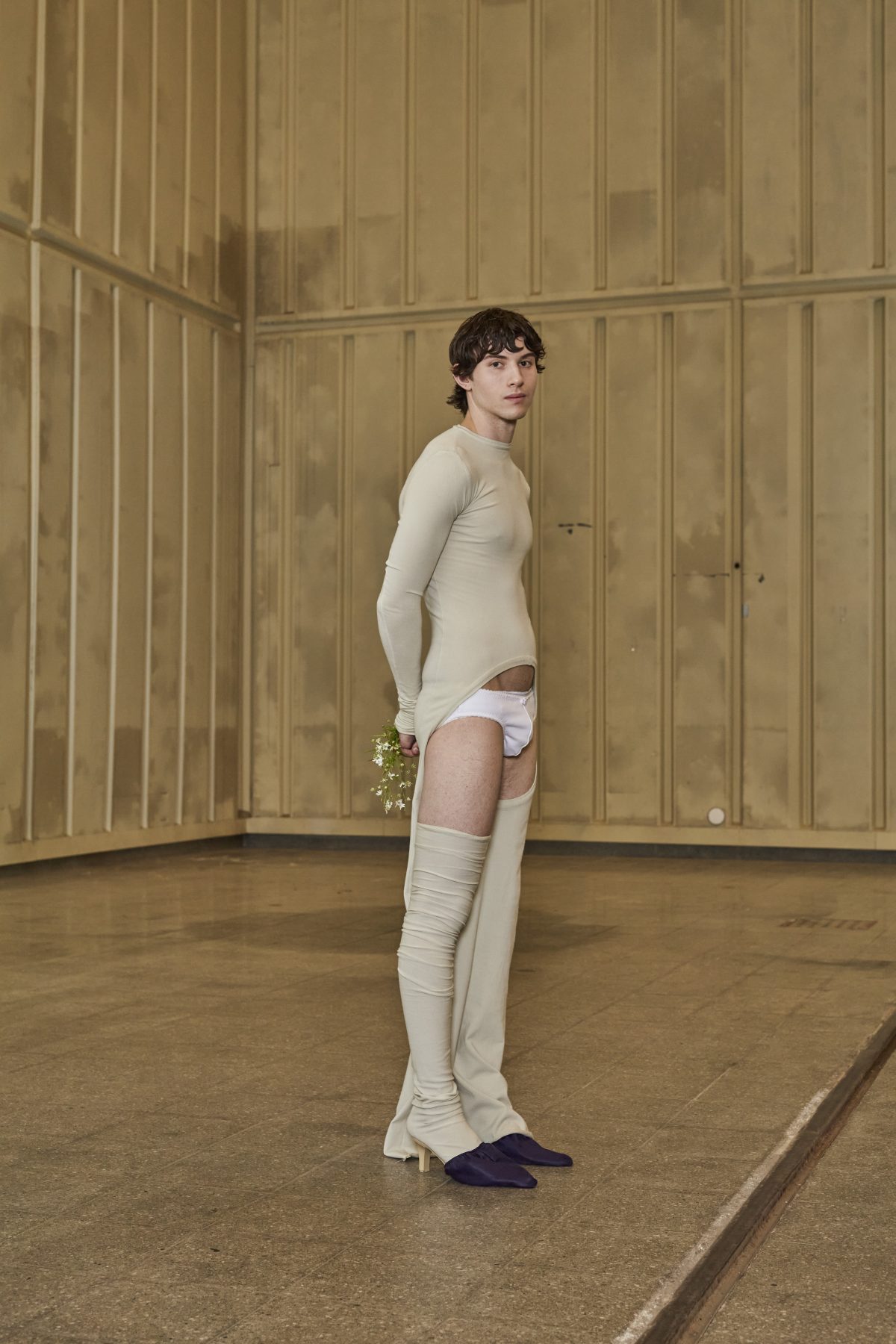 AT_07
AT_07

Aappo Törmänen BA3 Graduate collection Photographer: Sofia Okkonen Model: Csaba
AT_07This repertoire of wearable items is inviting layers of violence into sartorial form; a corrupted repertoire forming from countless interrupted processes begging the questions concerning power’s deranged relation to the dress and desire.
Through clothes, I am producing an image of confused hierarchical characters — the doctors and his hysterics, puritans and perverts — by slightly manipulating the systematic vestiary semiotics. In the image, the bodies wearing the items are deprived from their autonomy and left only breathing; however, these bodies are not disciplined, but, rather, emancipated through control.
– My intention was to find intuitive ways of working and following my vivid internal visions. The collection’s conceptual framework was done throughout and after the material process, working from outside to inside. The meaning behind the sartorial repertoire I constructed was found through films, literature, and conversations with meaningful people around me, Törmänen explains.
Törmänen is endlessly fascinated by power and control. The idea of restraining the body through clothing can be seen as the main undertone of his work.
– The materials play a pivotal role in reminding both the wearer and the spectator of the violence that they hold. I became curious about materials that possess some sense of derangement, leather turning into one of the most substantial matters in my work. In addition, I contemplated a lot with the weight and the tactility of the material while constructing pieces from acrylic, bronze and horse hair for example, conflicting them with institutional, soft knits.
– The way I see it, the clothes we wear possess tremendous power over us. Clothing seems like a fascist tool to me to some extent; it perversely enchants to take control over us, to segregate and to manipulate. Clothes have the power to conceal and reveal, restrain and set free, humiliate and celebrate.
Aki Nummela
(ba)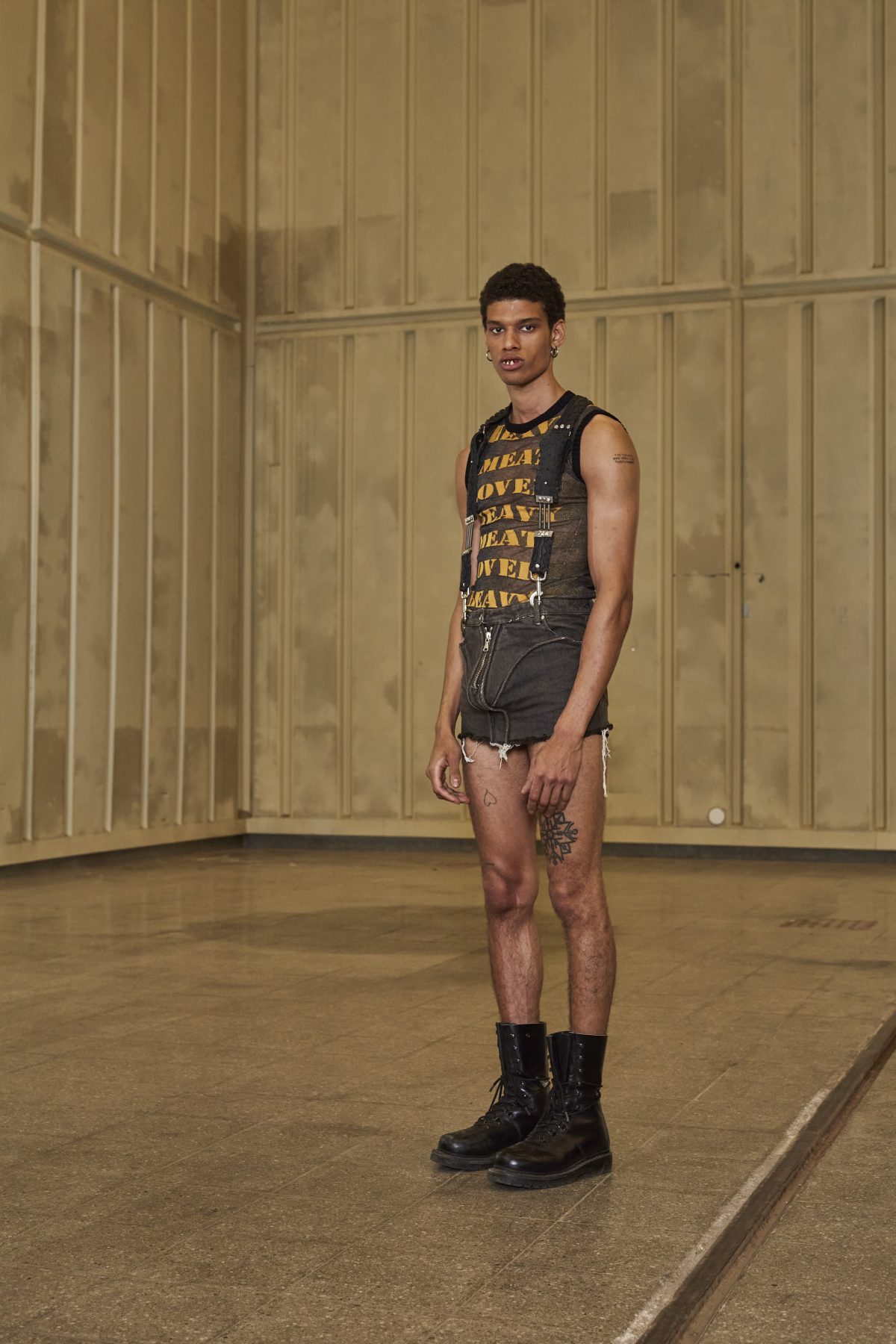 AN_01
AN_01

Aki Nummela BA 3 Graduate collection Photographer: Sofia Okkonen Model: Jay
AN_01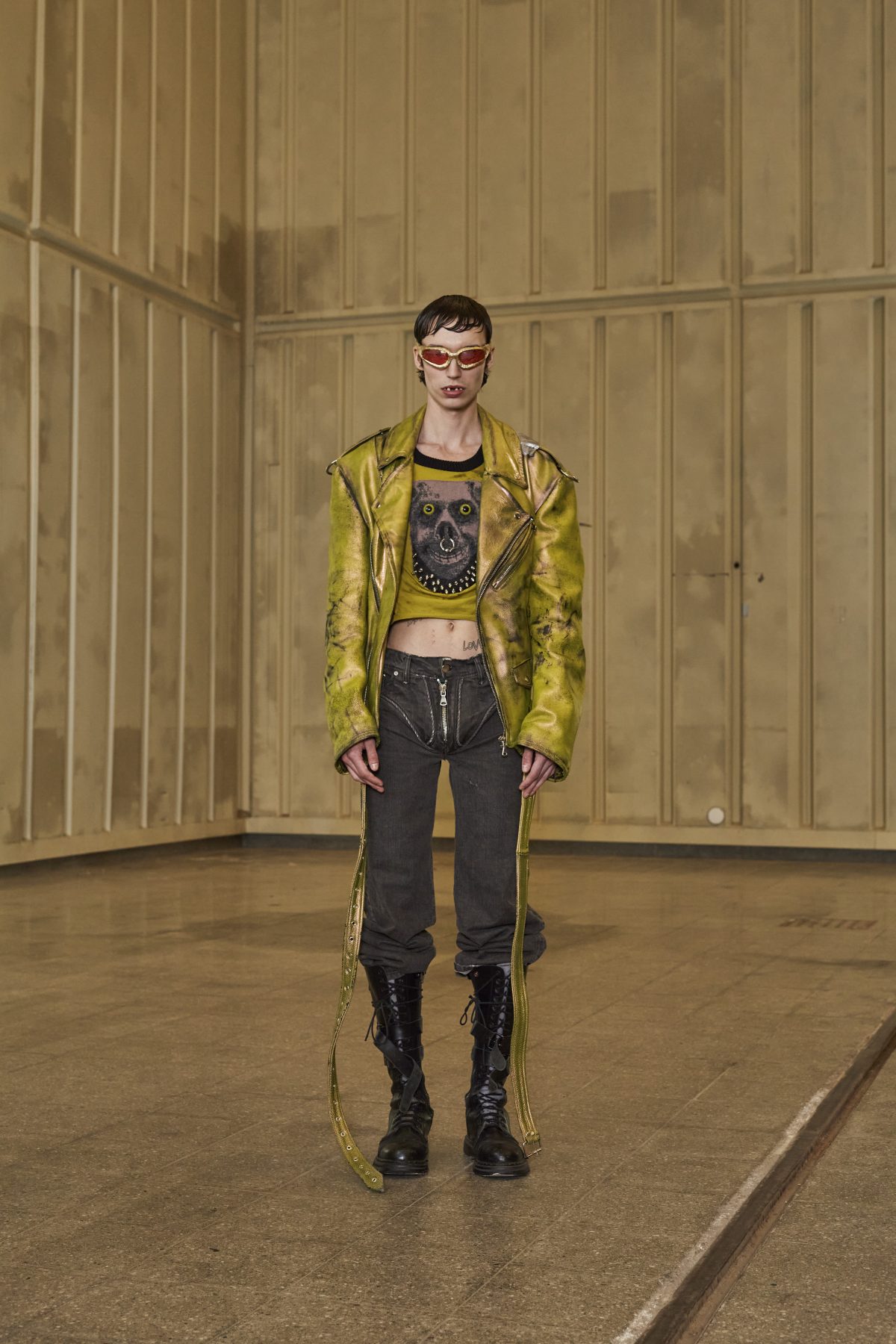 AN_02
AN_02

Aki Nummela BA 3 Graduate collection Photographer: Sofia Okkonen Model: Mauri
AN_02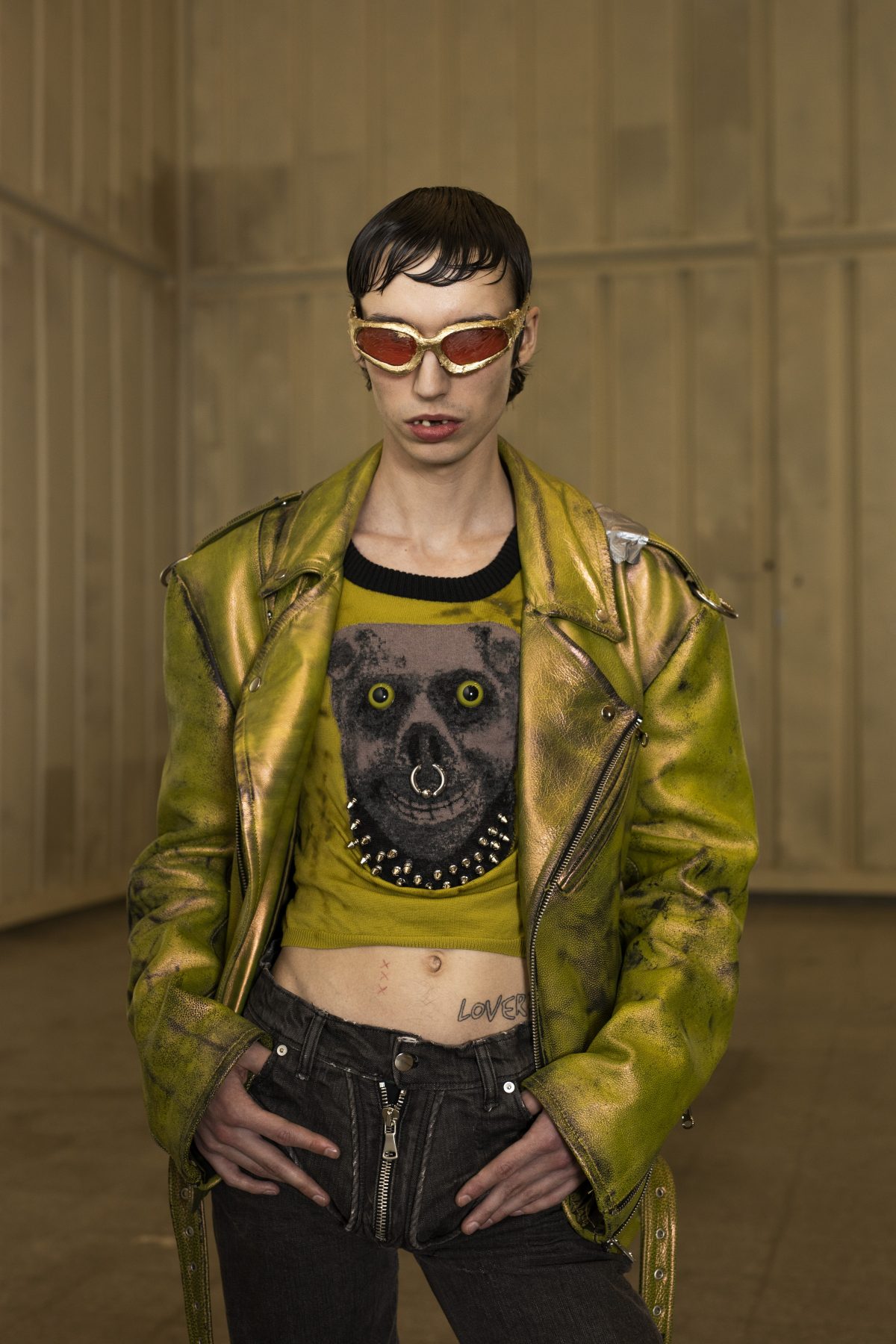 AN_03
AN_03

Aki Nummela BA 3 Graduate collection Photographer: Sofia Okkonen Model: Mauri
AN_03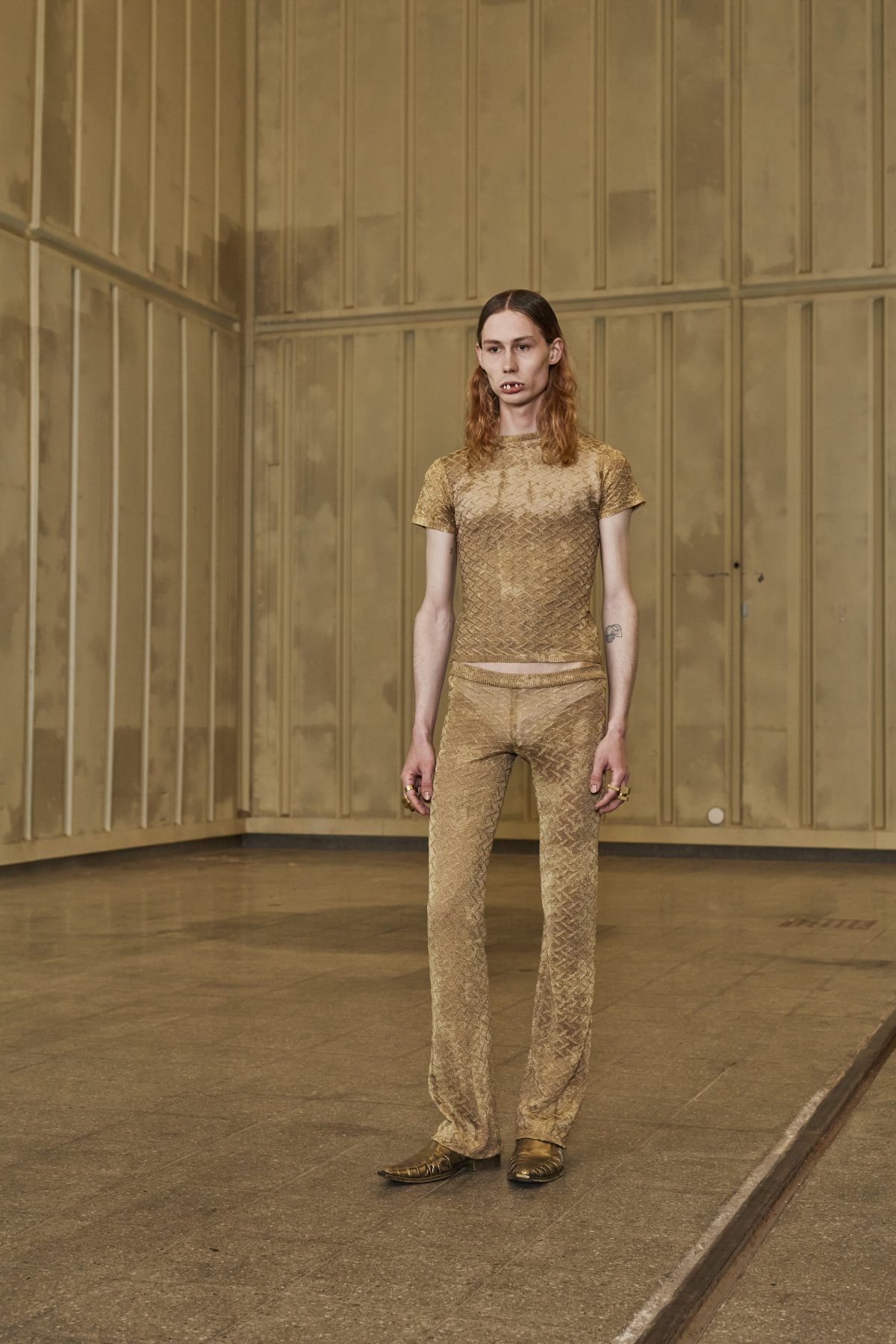 AN_04
AN_04

Aki Nummela BA 3 Graduate collection Photographer: Sofia Okkonen Model: Marcel
AN_04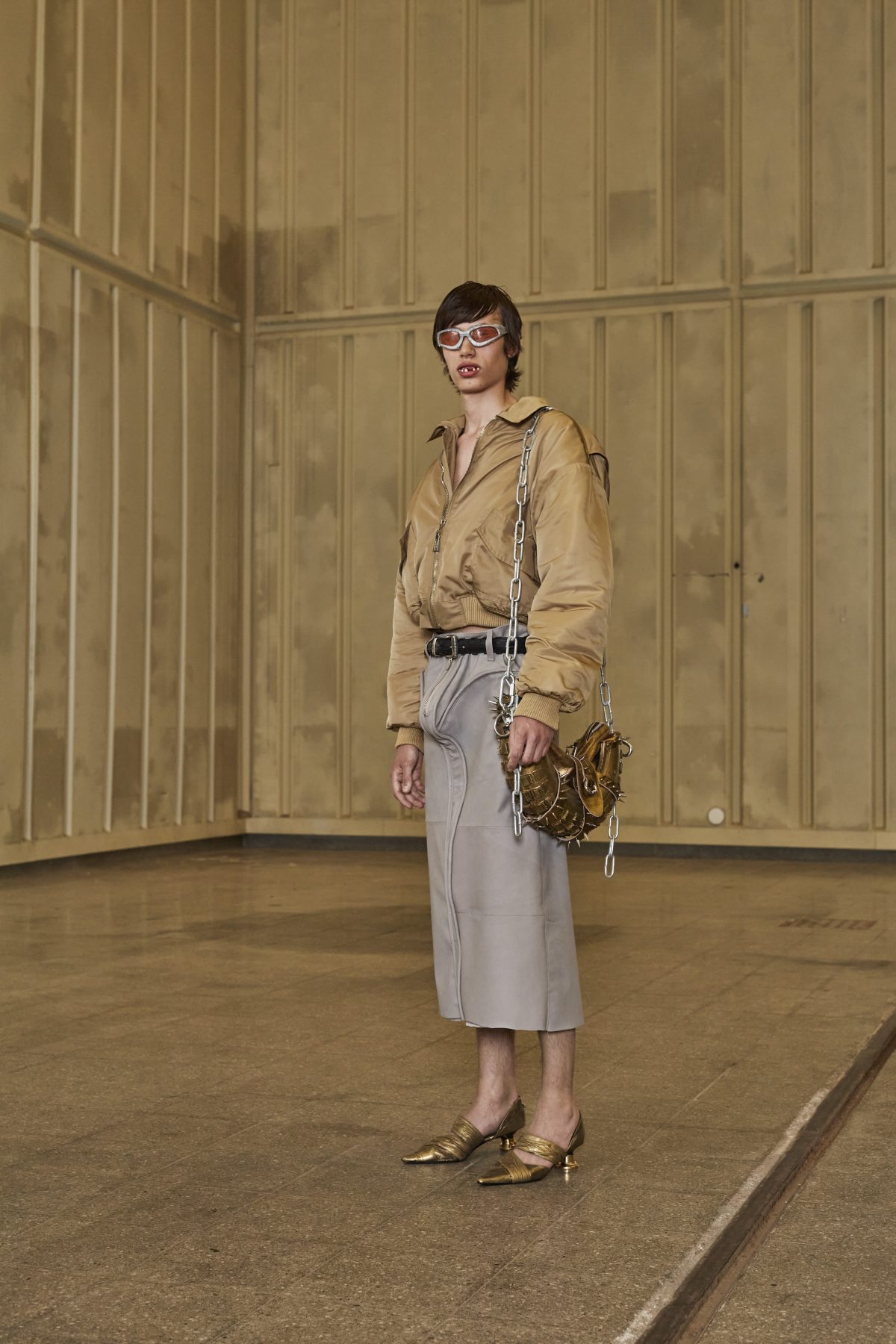 AN_05
AN_05

Aki Nummela BA 3 Graduate collection Photographer: Sofia Okkonen Model: Olavi
AN_05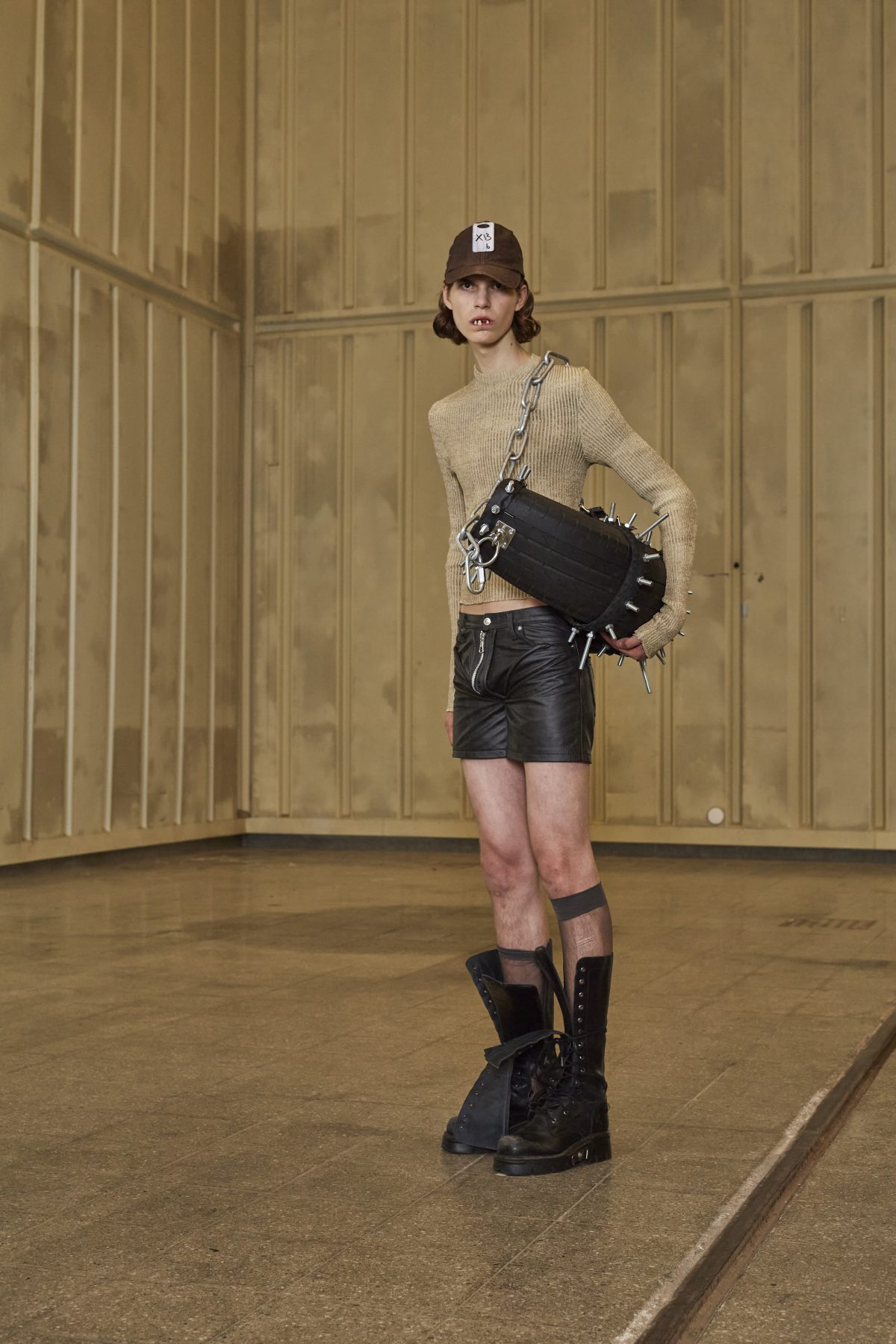 AN_06
AN_06

Aki Nummela BA 3 Graduate collection Photographer: Sofia Okkonen Model: Antti
AN_06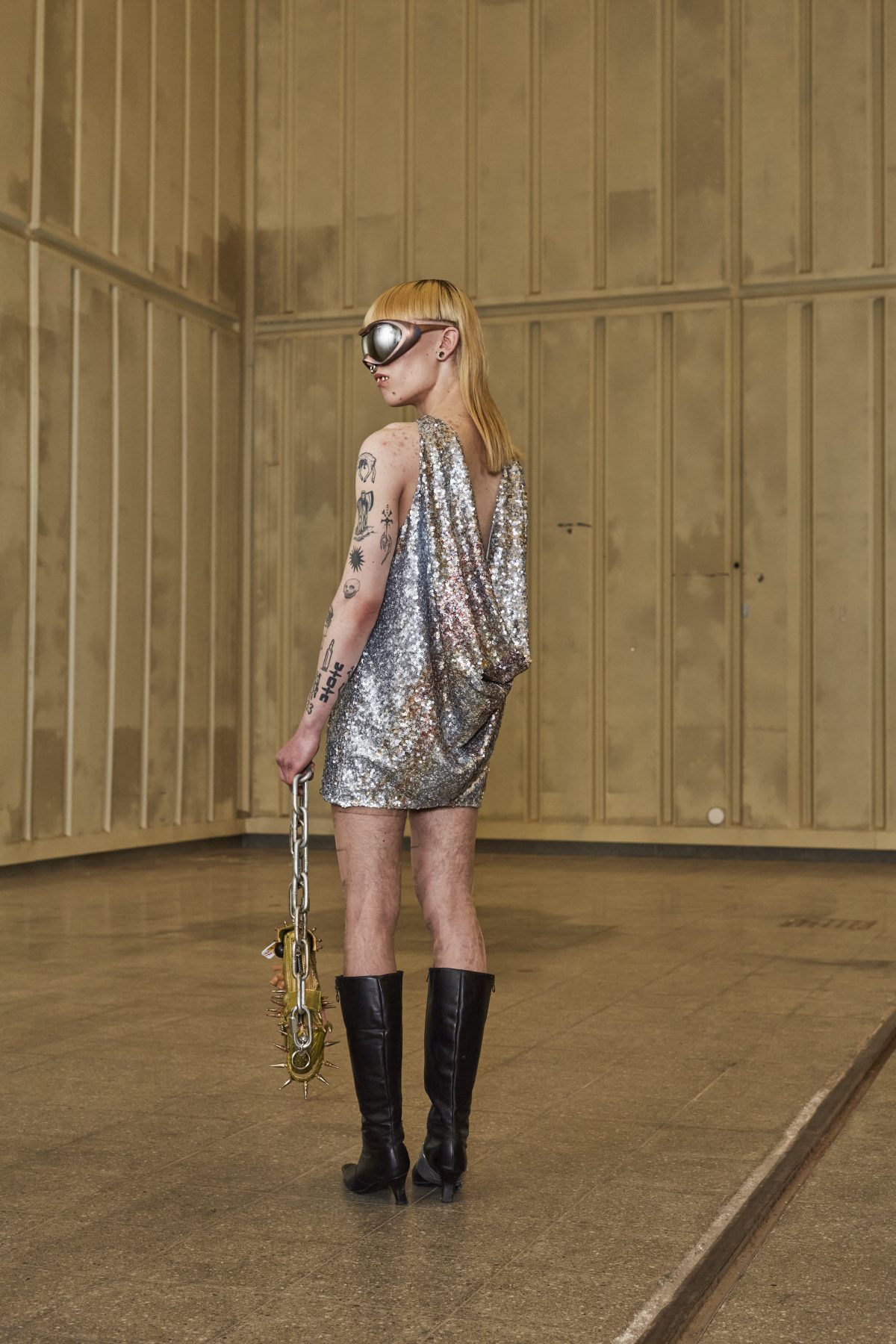 AN_07
AN_07

Aki Nummela BA 3 Graduate collection Photographer: Sofia Okkonen Model: Reko
AN_07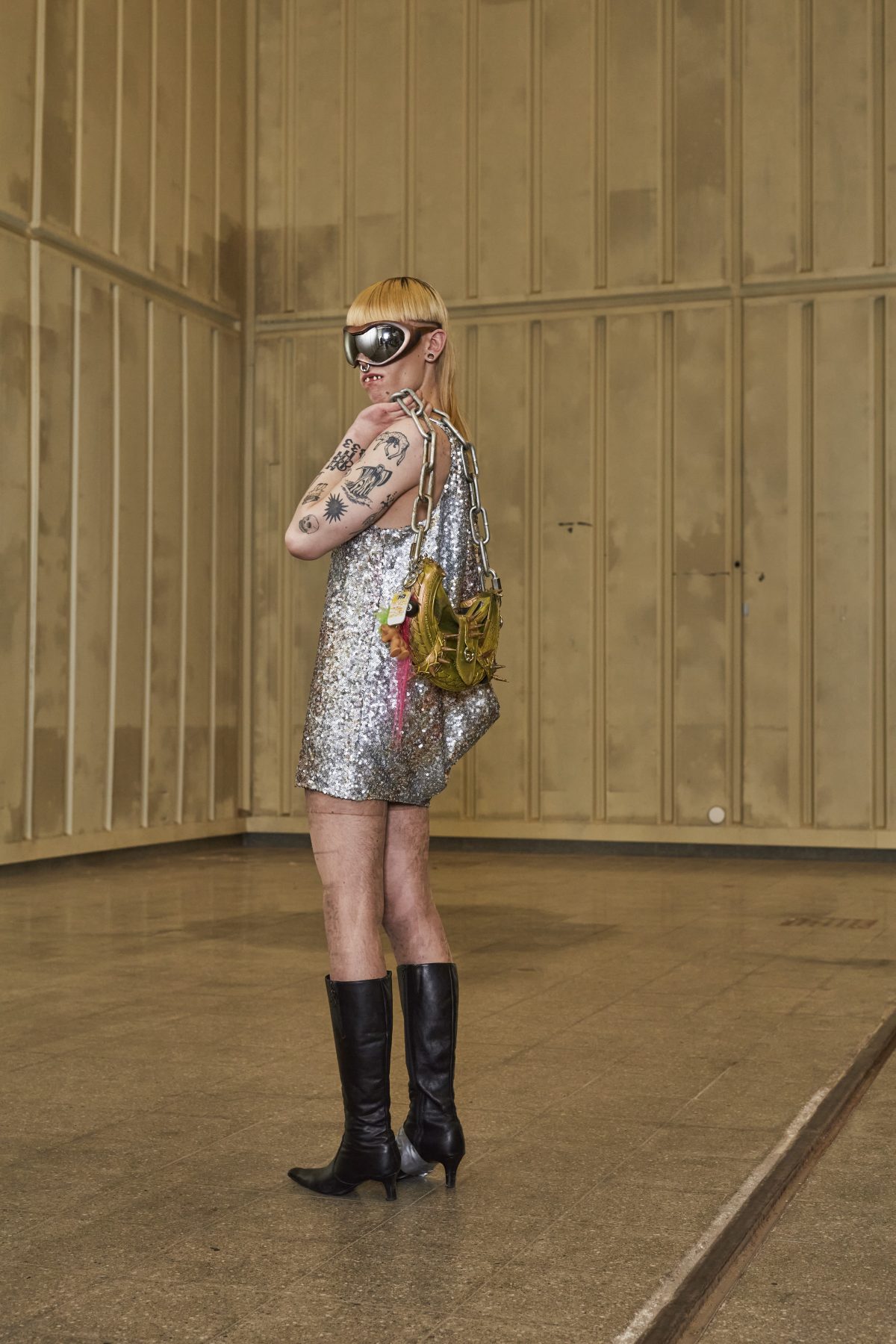 AN_08
AN_08

Aki Nummela BA 3 Graduate collection Photographer: Sofia Okkonen Model: Reko
AN_08– HEAVY MEAT LOVER is a collection of six unique looks that I have designed and put together through an emphasis on observation. The frenetic bimboesque characters I’ve brought to life are a direct result of my fascination with counterculture figures from New Queer Cinema movement and 90s industrial music, Aki Nummela explains.
The collection builds on creating new meanings for traditional classic garments and textiles by investigating the aesthetic and tactile elements of my research. I have achieved these elements by utilizing different techniques I’ve learned throughout my studies by exaggerating bodily proportions and by replicating jagged surfaces and textures that exist in a corroded and nebulous territory I have constructed based on my research.
Essential techniques in the collection include industrial machine knitting, working with heavy leather, digital printing and aging different materials.
– I’ve substituted intended usages for different objects by finding ways to accessorize them, such as tires and metal scrap.
Alex Luonto
(ma)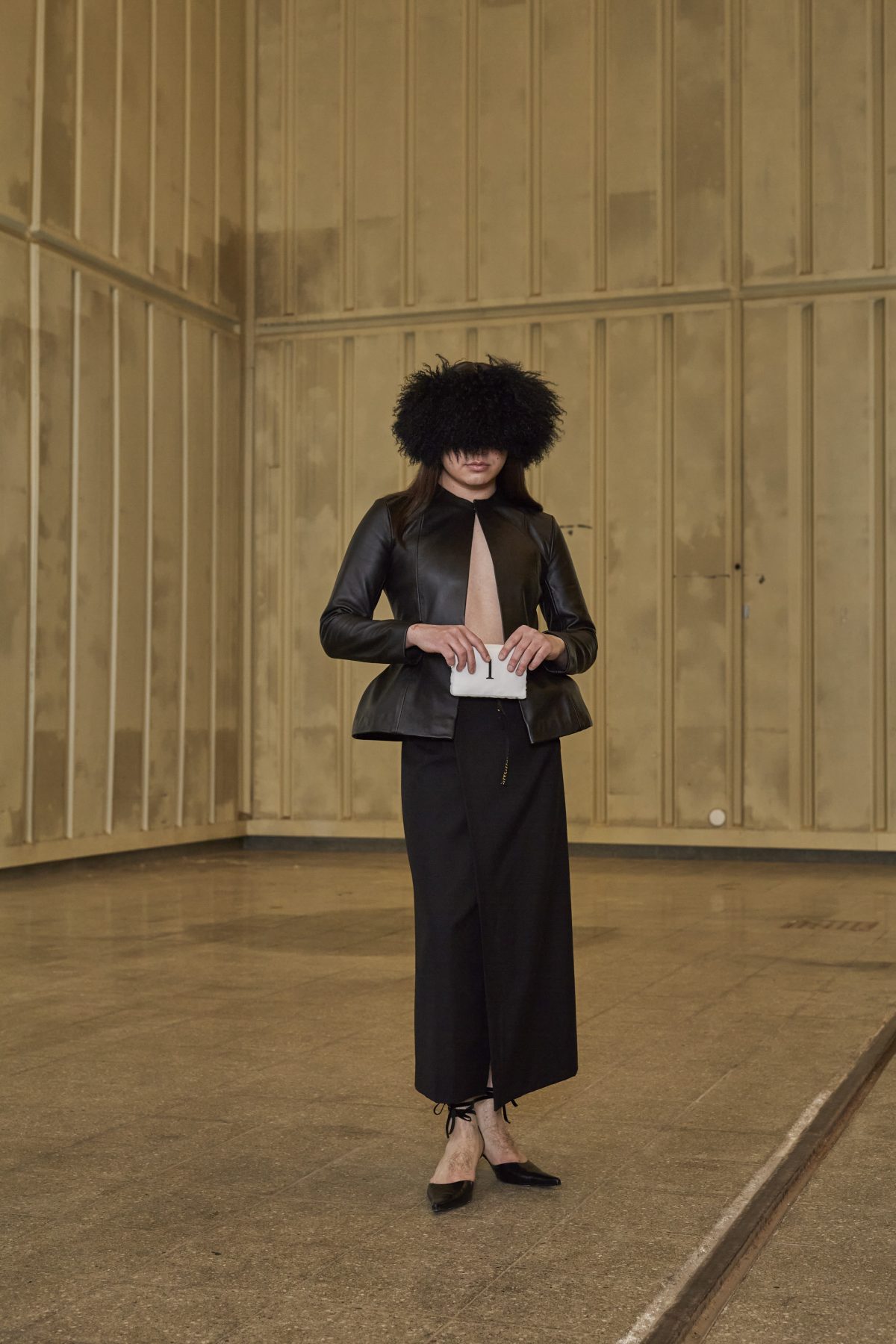 AL_01
AL_01

Alex Luonto MA2 Graduate collection Photographer: Sofia Okkonen Model: Alex
AL_01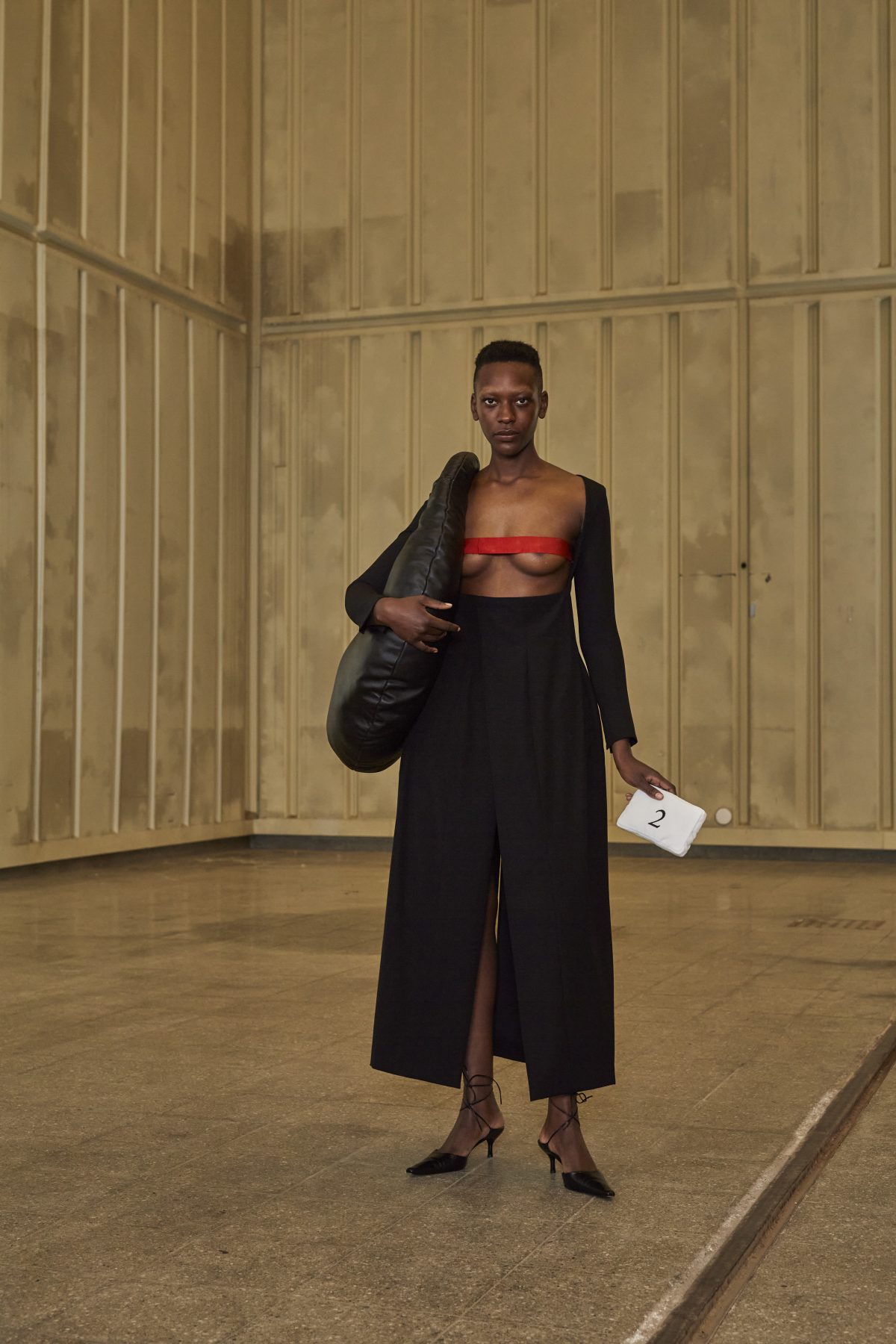 AL_02
AL_02

Alex Luonto MA2 Graduate collection Photographer: Sofia Okkonen Model: Marie
AL_02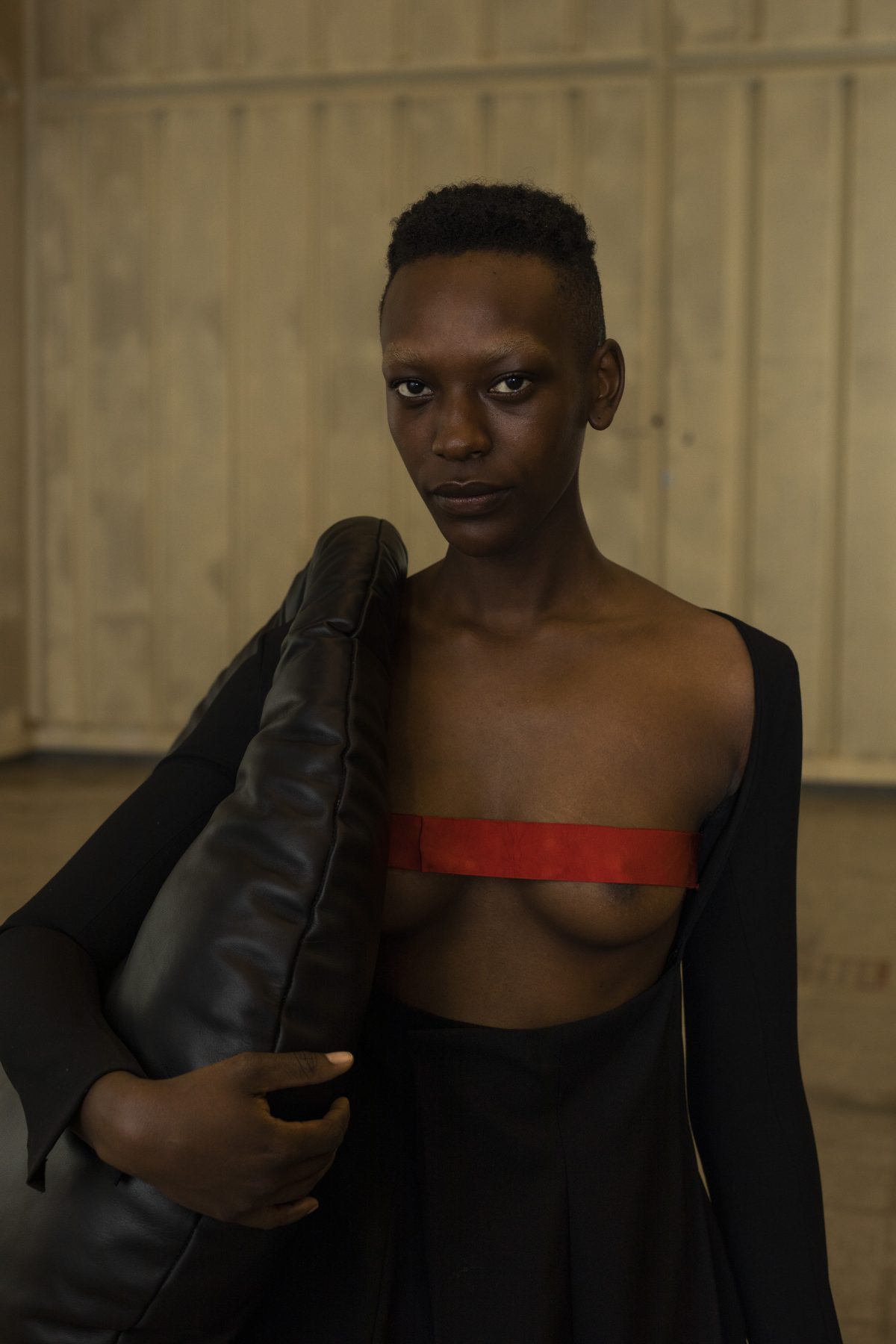 AL_03
AL_03

Alex Luonto MA2 Graduate collection Photographer: Sofia Okkonen Model: Marie
AL_03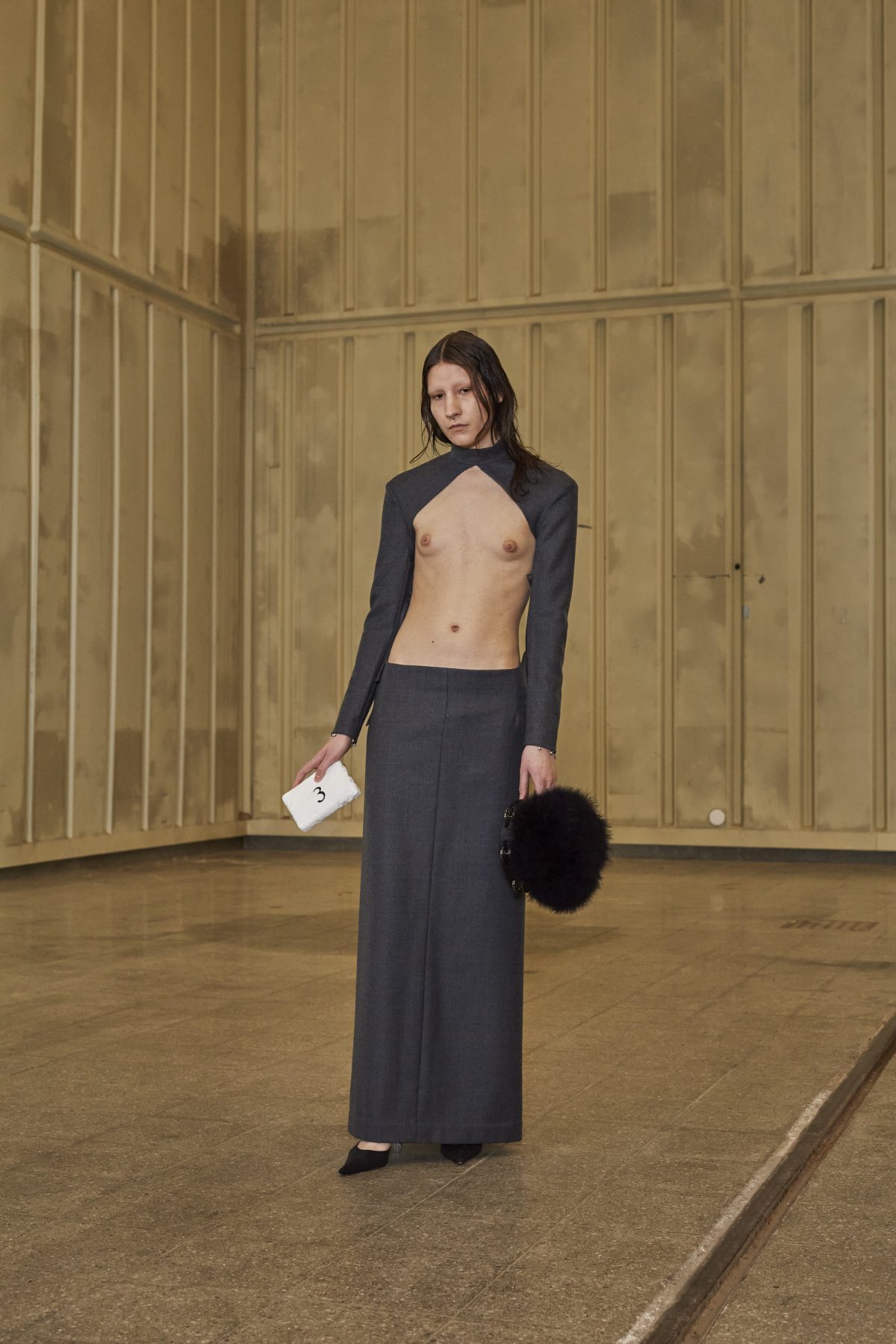 AL_03
AL_03

Alex Luonto MA2 Graduate collection Photographer: Sofia Okkonen Model: Alexa
AL_03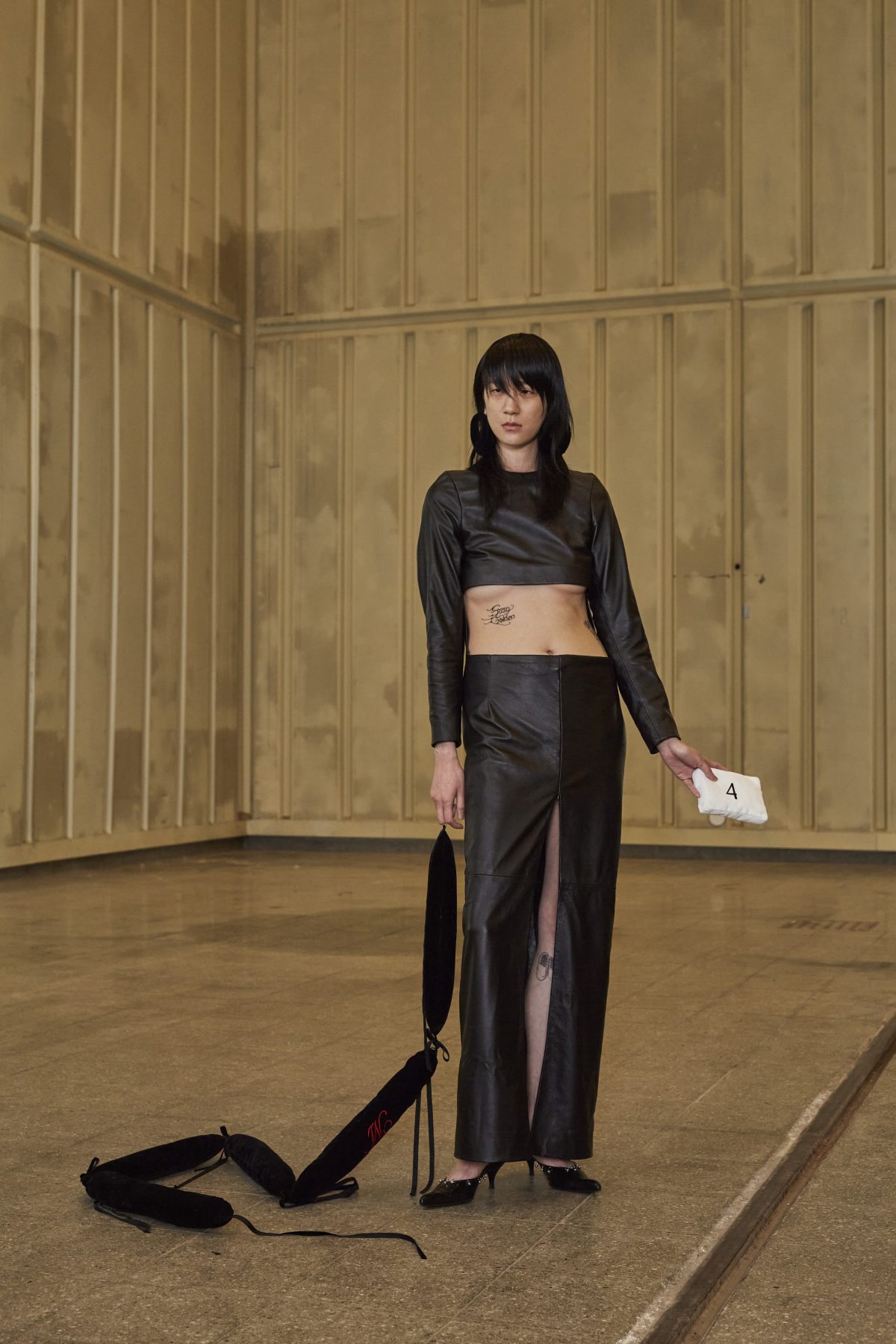 AL_05
AL_05

Alex Luonto MA2 Graduate collection Photographer: Sofia Okkonen Model: Yilin
AL_05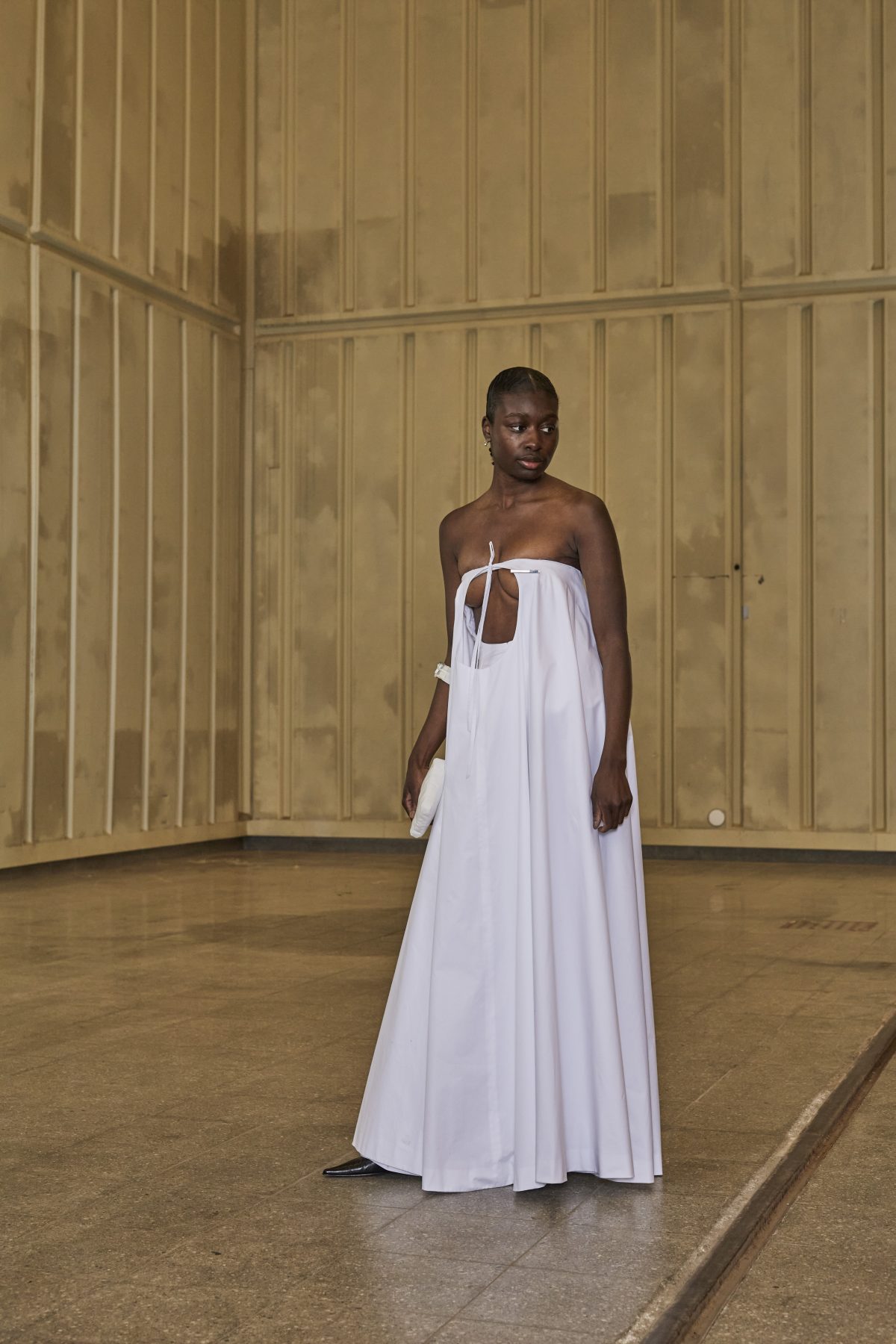 AL_06
AL_06

Alex Luonto MA2 Graduate collection Photographer: Sofia Okkonen Model: Ama
AL_06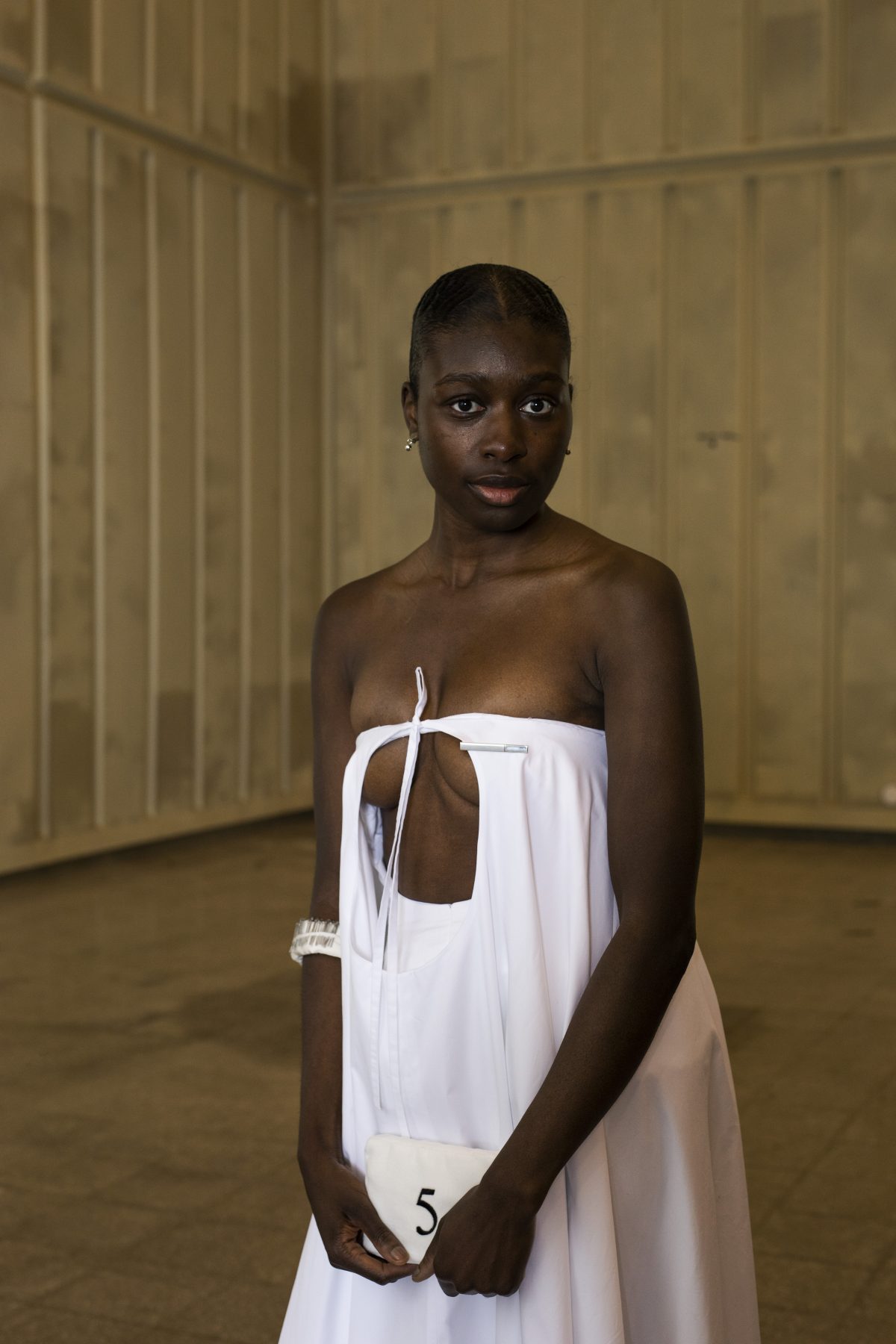 AL_07
AL_07

Alex Luonto MA2 Graduate collection Photographer: Sofia Okkonen Model: Ama
AL_07Objects of Desire utilizes Luonto’s own past works created during the fashion design studies. This is combined with an investigation of personal curated wardrobe of vintage treasures to create the blueprint for the collection. The collection acts as Luonto’s personal culmination to the studies; a collection of garments that have been born out of desire. Certain things are highlighted: craftmanship, tailoring, materials, attention to detail as well as the boundaries of a garment.
– I use the term “anti-garment” (epävaate in Finnish) to describe how I see these garments: they retain the minimum number of qualities to be actually worn, like sleeves and inner structures that either shape or support the body. I have also stripped off all unnecessary embellishments that make the clothes viable for example for everyday use, Luonto explains.
In the collection there is a conservation-like mindset to approaching the garments, valuing the seen and unseen; the construction of a garment is as important as the outer layer. Everything in the collection has its reason to be there, whether it’s purely for visual pleasure or for the humoristic edge.
History weaves its way into the garments in small details that adds to the personal approach of the curated collection. Small obscure and understated details such as white gold family heirloom bracelets from Thailand sewn into the sleeve of the garment acts as a physical attachment of the designer into the ensemble, that not only enriches the experience but also adds a layer of aura to it.
Every ensemble in the collection has been made-to-measure. Luonto has worked closely with friends for whom the garments have been made; the chosen models carry the garments to strengthen the world-building of the collection where every detail from the posture of a model to the heel-cap of a shoe has been well thought through.
Luonto has developed his own way of stitching which is largely used in the collection: a hidden stitch that allows one to control the quality of hand-sewing even without years of training said skill. This is where the manual and mechanical meet. This “semi-couture-stitch” utilizes machine-sewed tracks where hand-stitching is added in between them, and tightened like a corset. Making Luonto’s own methods and ways of achieving desired couture-like outcome in his own manner plays a big part in the collection.
The collection challenges the viewer not only with its extremely minimalistic approach but also with normalizing the way we see bodies. Bodily freedom with the artistic freedom creates the desired challenge for the viewer; Luonto proposes for us as the viewers to turn back our attention to the garments.
Anni Salonen
(ma)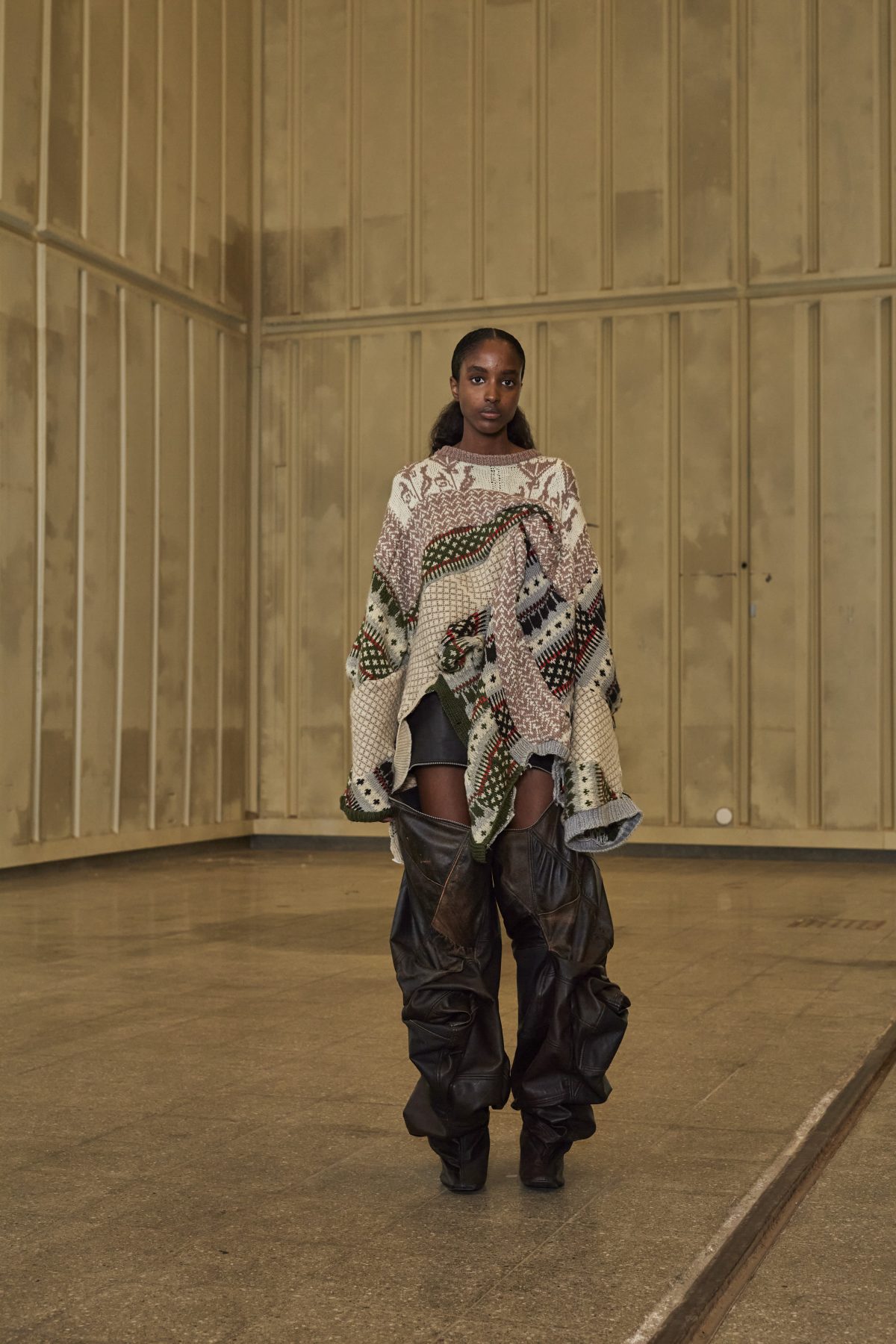 AS_01
AS_01

Anni Salonen MA2 Graduate collection Photographer: Sofia Okkonen Model:ZamZam
AS_01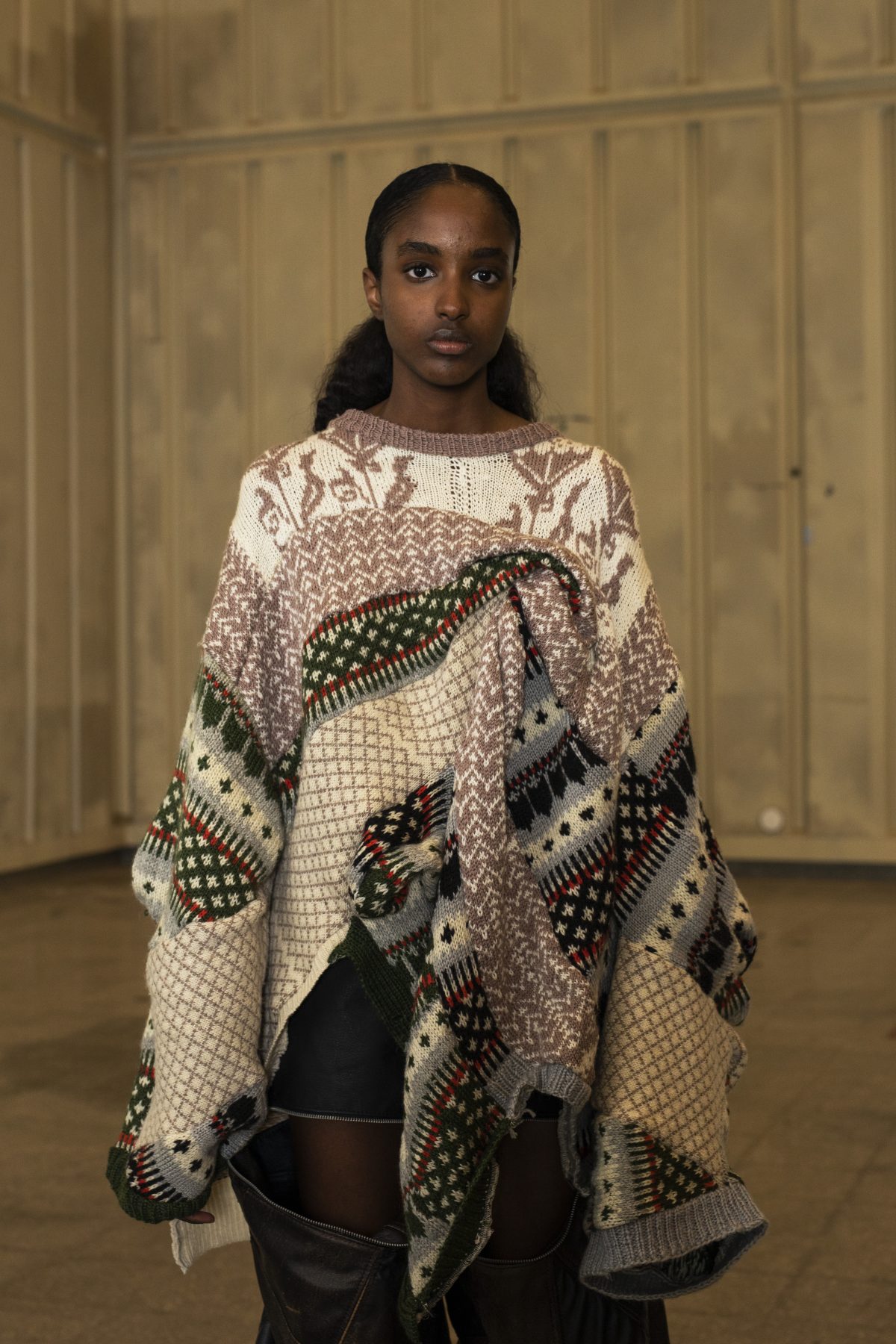 AS_02
AS_02

Anni Salonen MA2 Graduate collection Photographer: Sofia Okkonen Model: ZamZam
AS_02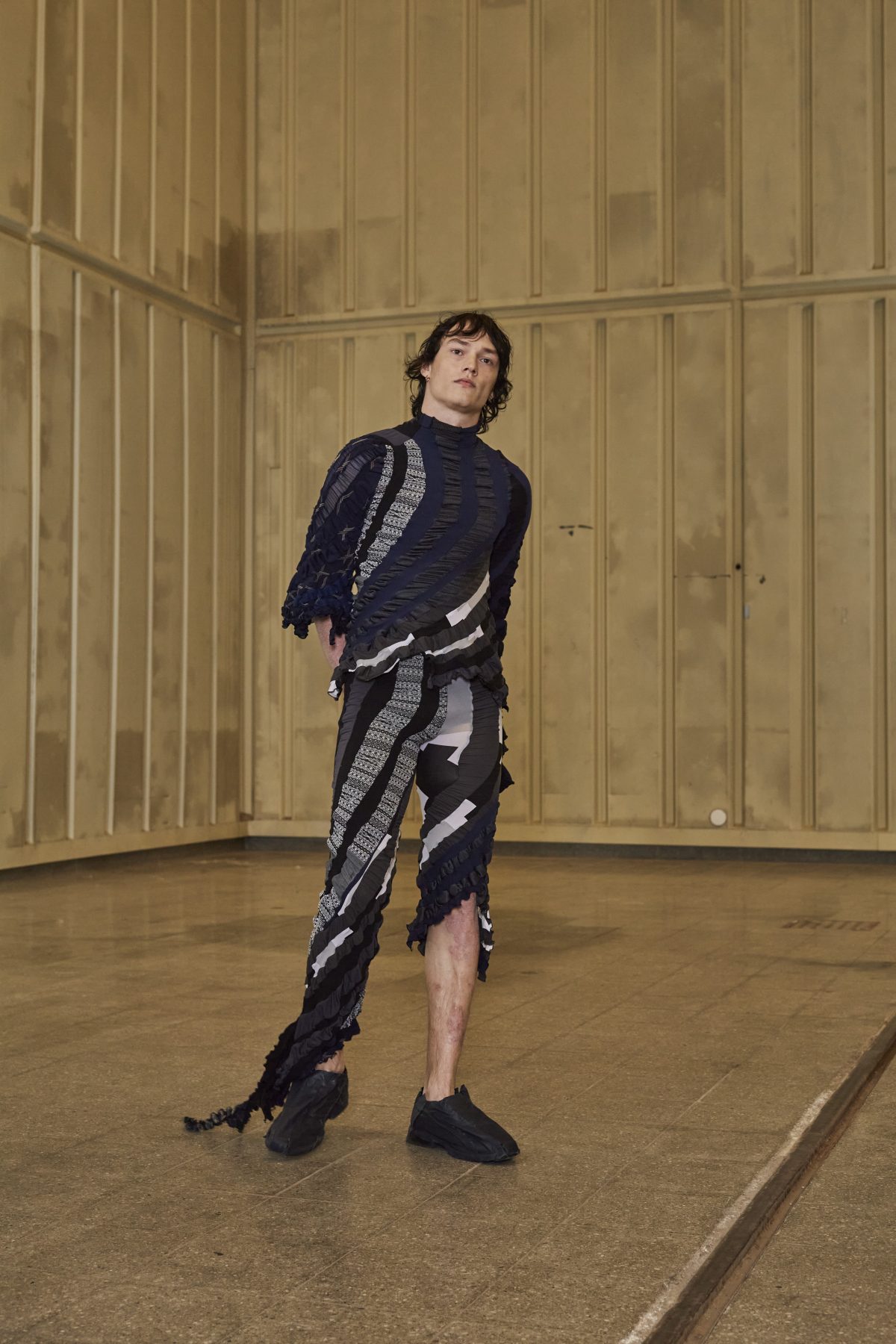 AS_03
AS_03

Anni Salonen MA2 Graduate collection Photographer: Sofia Okkonen Model:
AS_03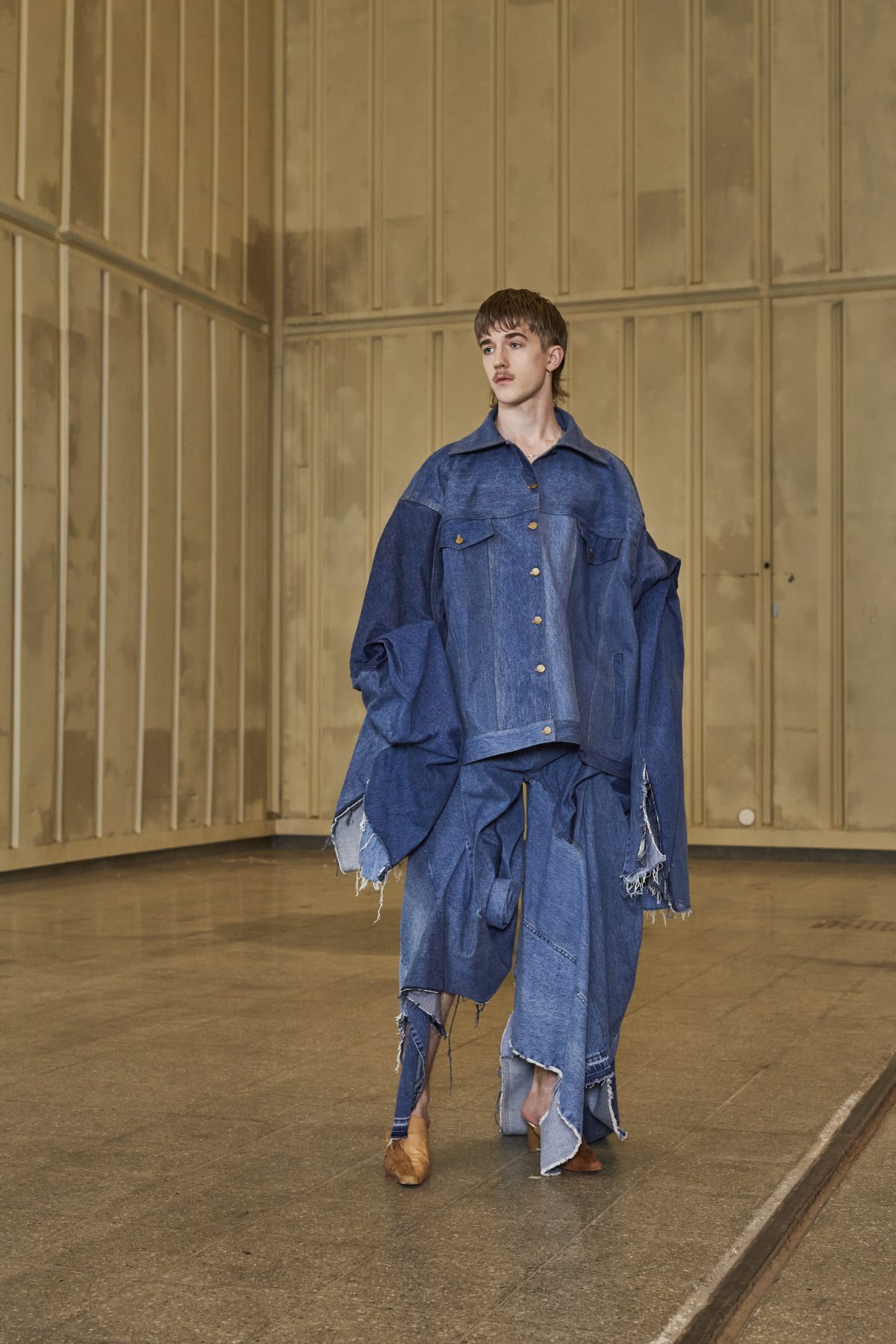 AN_04
AN_04

Anni Salonen MA2 Graduate collection Photographer: Sofia Okkonen Model:Bernhard
AN_04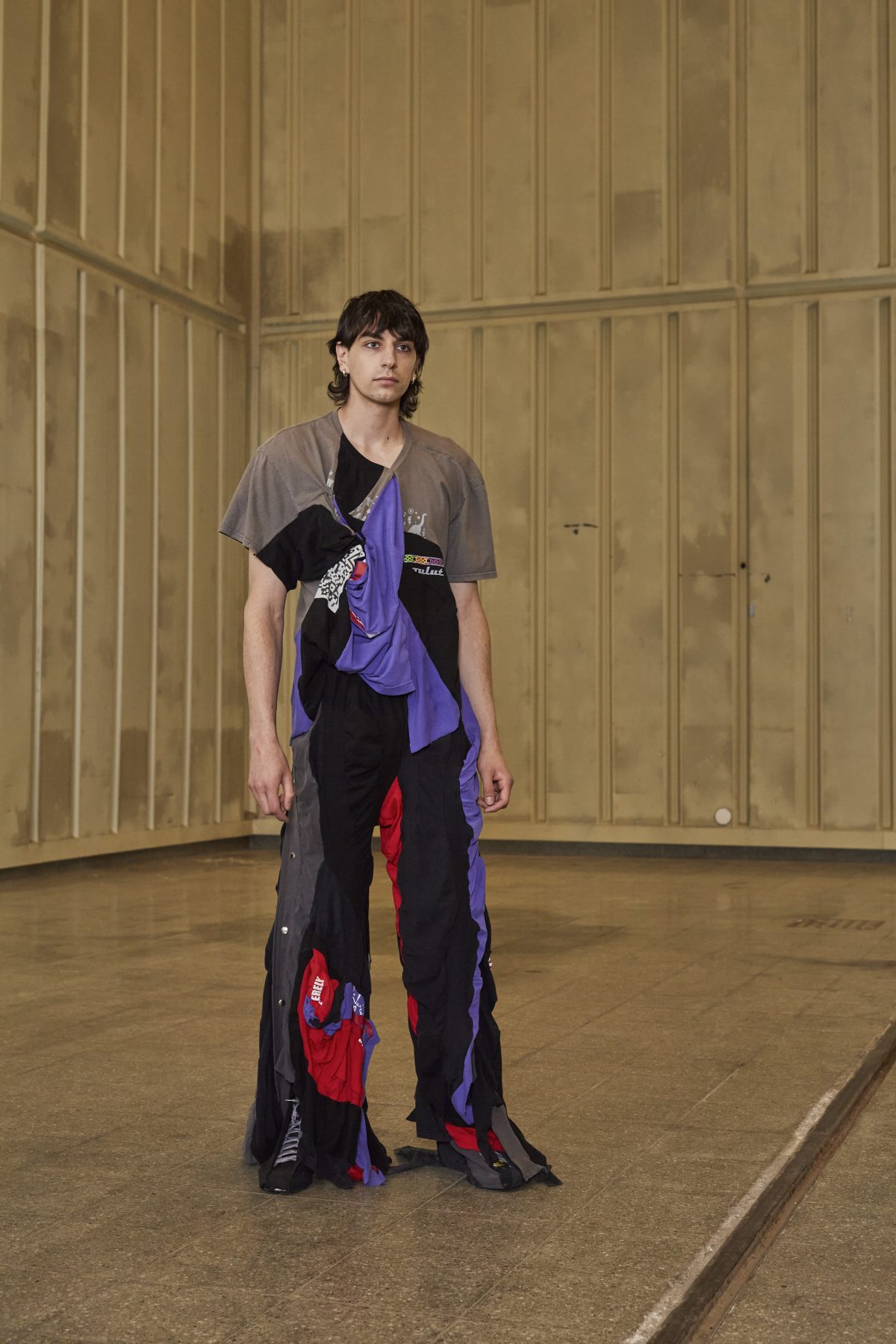 AS_06
AS_06

Anni Salonen MA2 Graduate collection Photographer: Sofia Okkonen Model: Rami
AS_06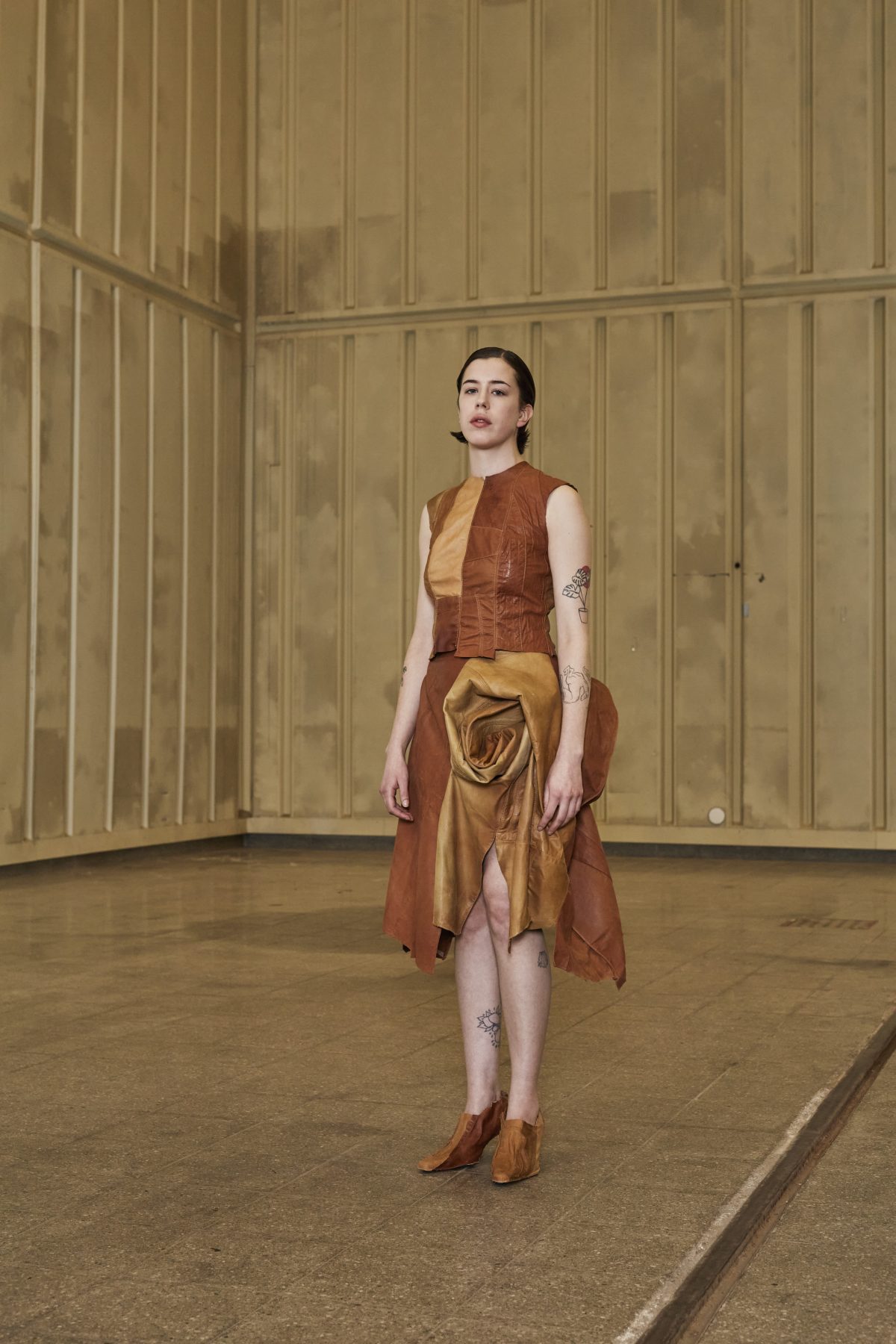 AS_06
AS_06

Anni Salonen MA2 Graduate collection Photographer: Sofia Okkonen Model: Marine
AS_06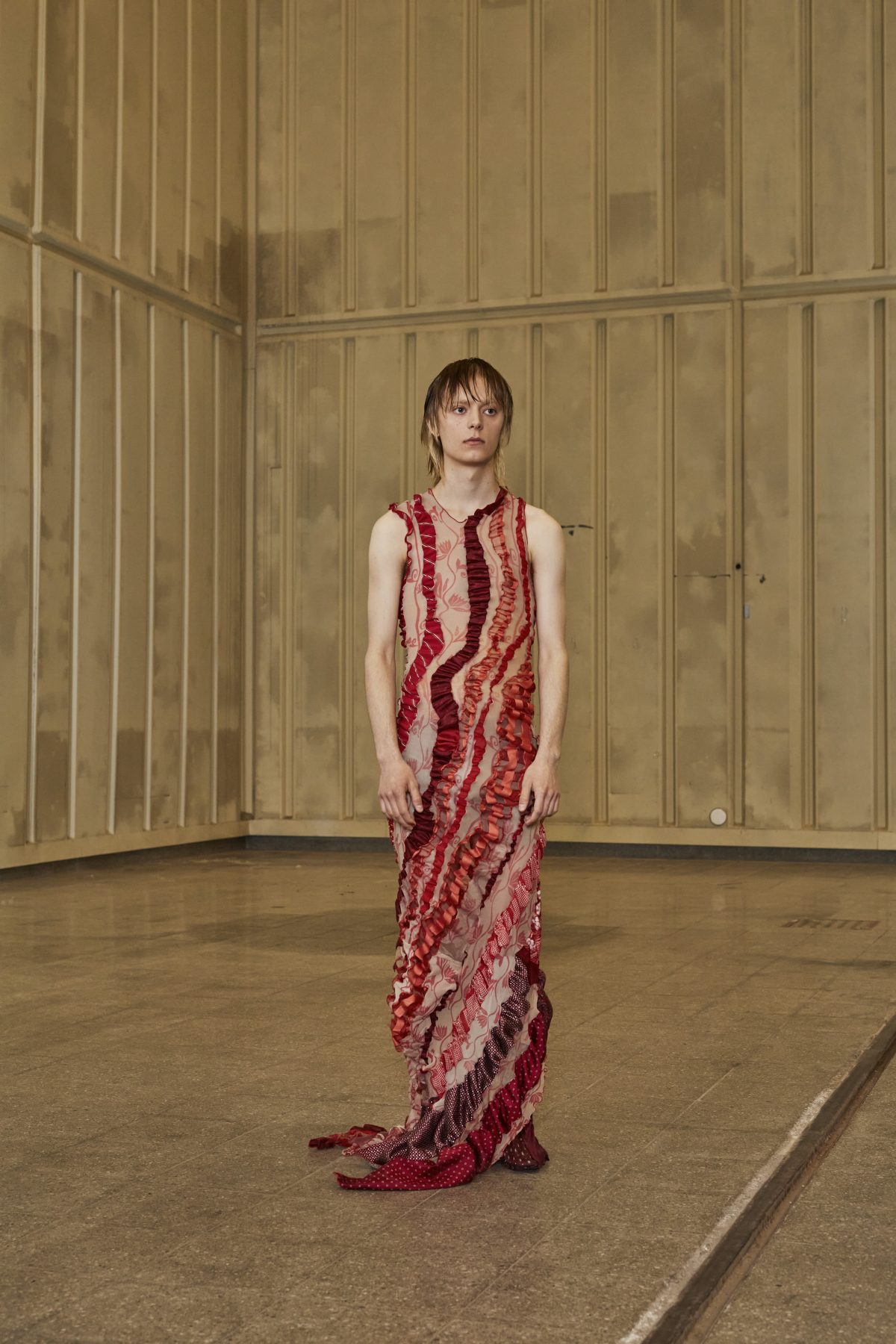 AS_07
AS_07

Anni Salonen MA2 Graduate collection Photographer: Sofia Okkonen Model: Oscar
AS_07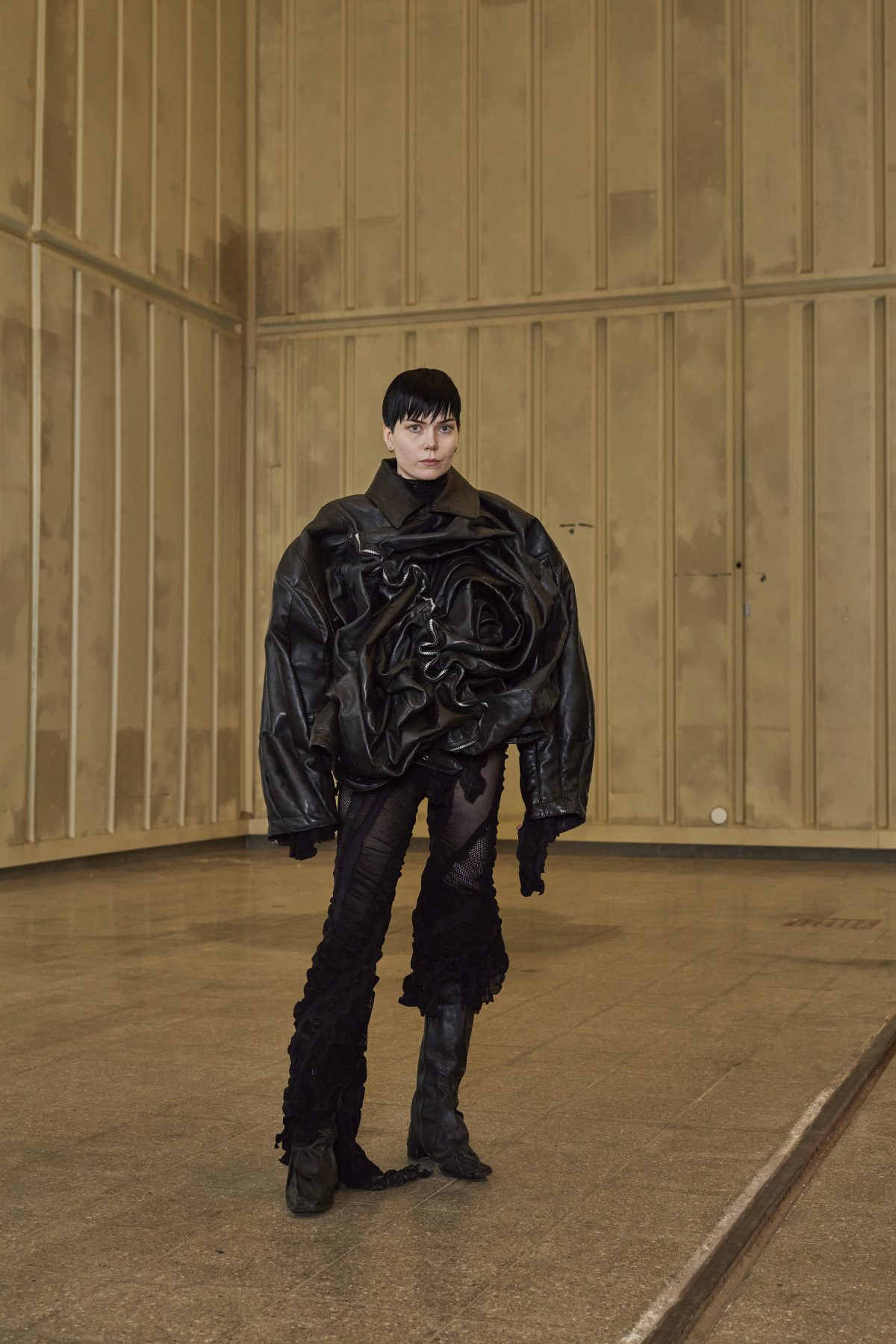 AS_08
AS_08

Anni Salonen MA2 Graduate collection Photographer: Sofia Okkonen Model: Ronja
AS_08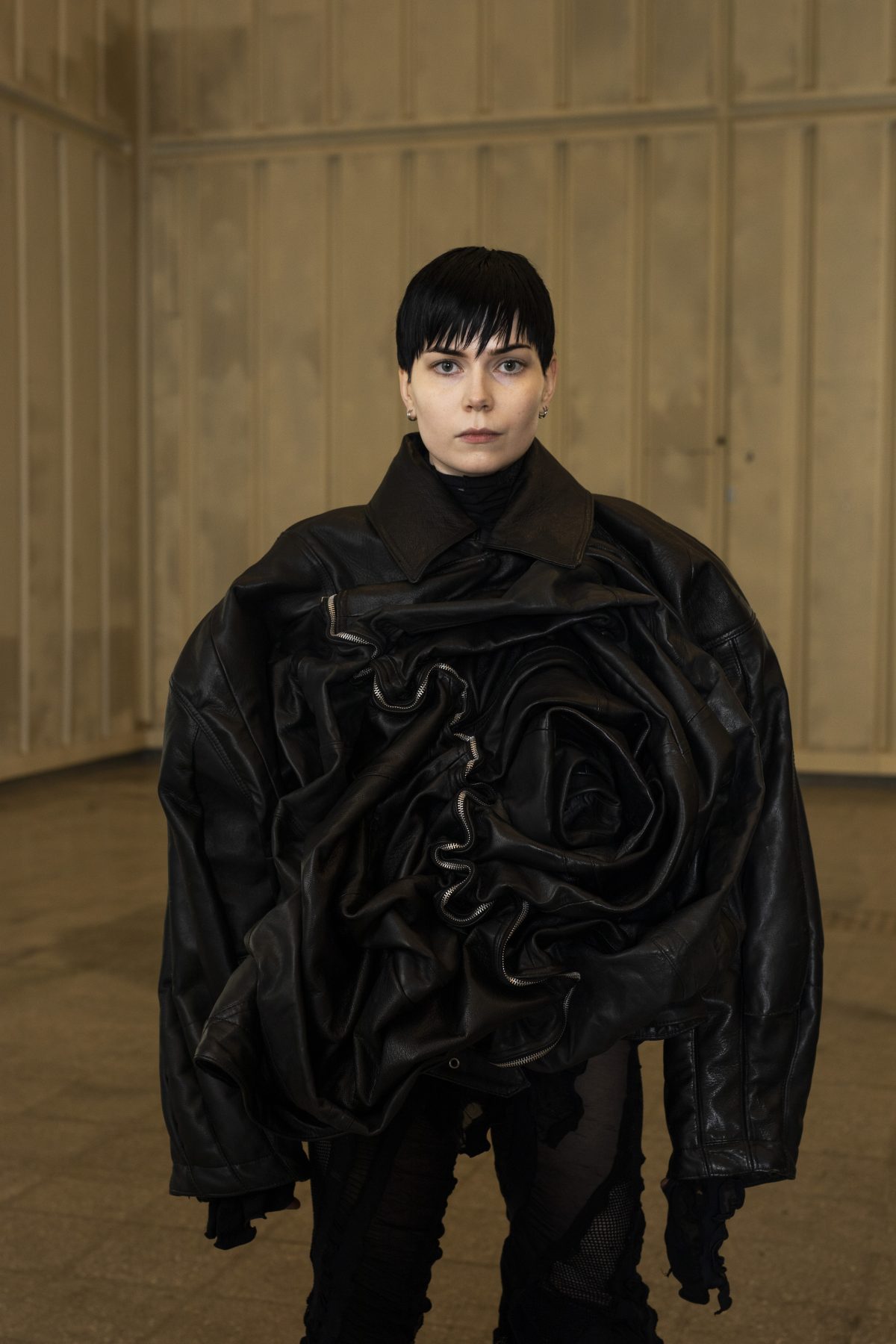 AS_09
AS_09

Anni Salonen MA2 Graduate collection Photographer: Sofia Okkonen Model: Ronja
AS_09Anni Salonen’s MA thesis collection is inspired by and made of worn and discarded clothes. Worn garments were collected from dumpsters, recycling centers, flea markets and other people’s wardrobes. With her work, Salonen seeks to answer the question of what it would look like if we could not get rid of any material possessions, but instead had to find ways to repurpose everything. Finding new meanings in old clothes is at the heart of her work.
Salonen aims to treat the materials as collaborators to work with rather than passive objects. Signs of wear, fading of colors and details of the original salvaged garments function as inspiration rather than something that should be erased.
– The materials I use in my work don’t necessarily agree with the ideas I have in my head, so I find it more interesting to start from the material and experiment with it to see where it takes me, rather than being disappointed when it doesn’t behave how I want it to, Salonen explains.
The emphasis is on materials that exist in such large quantities that they have lost their value, such as jeans, leather jackets and nylon tights. For the sake of using the most unwanted things, a price limit of seven euros per piece was decided. The majority of the garments were found for free.
Besides the more anonymous, mass-produced clothes, vintage sweaters handmade by family members were salvaged from gathering dust in a storage. All the items have been treated with care to prove a point: these materials are not trash, and even in a state of wornness they can be desirable and luxurious.
– I don’t consider this a sustainable fashion collection, because in a sustainable system based on a closed loop it wouldn’t be possible to work like this. I think it shouldn’t be possible to make these kinds of clothes from other people’s trash, because in an ideal world these garments wouldn’t be discarded so carelessly.
Elina Silina
(ma)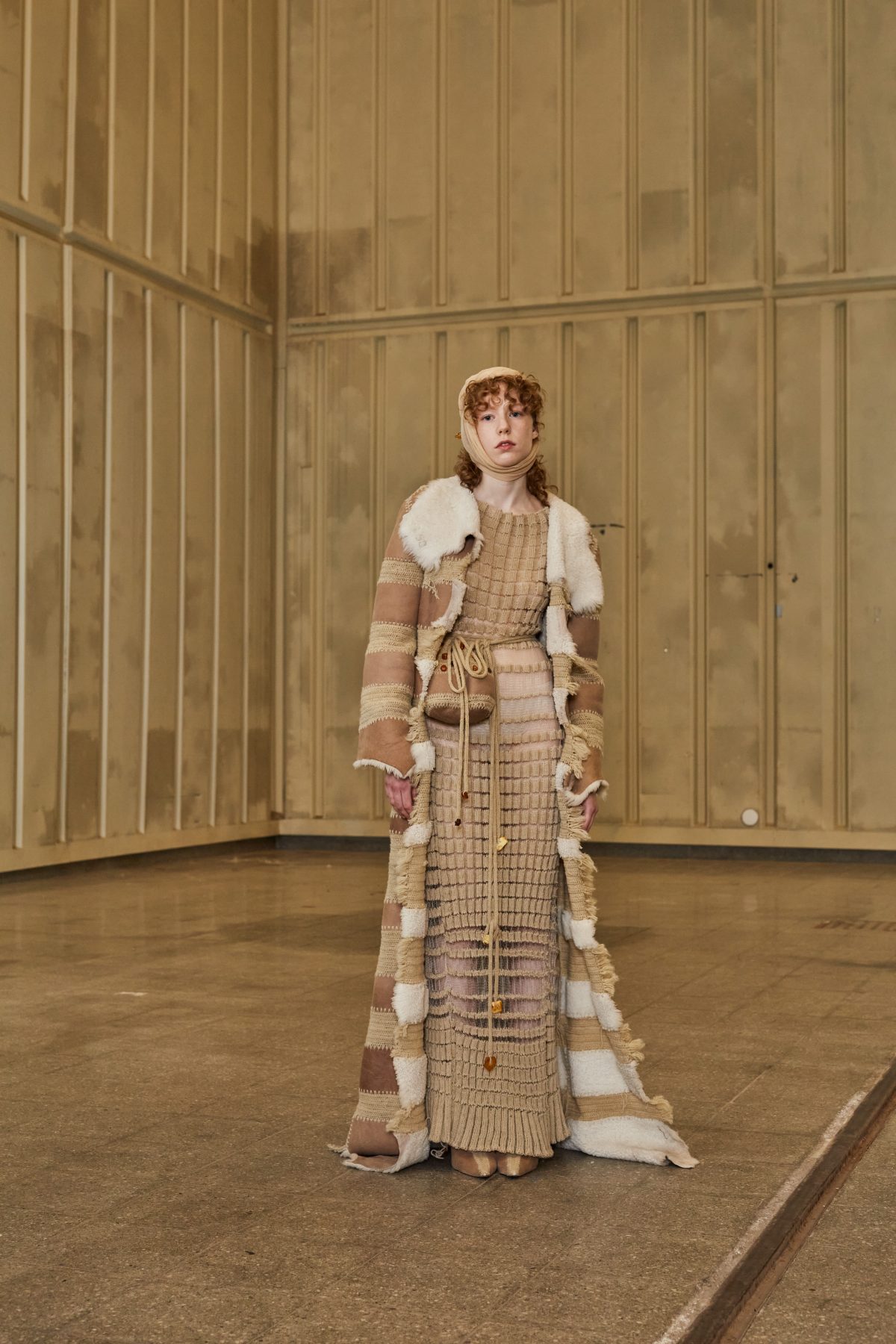 ES_01
ES_01

Elina Silina MA2 Graduate collection Photographer: Sofia Okkonen Model: Erica
ES_01 ES_02
ES_02

Elina Silina MA2 Graduate collection Photographer: Sofia Okkonen Model: Santi
ES_02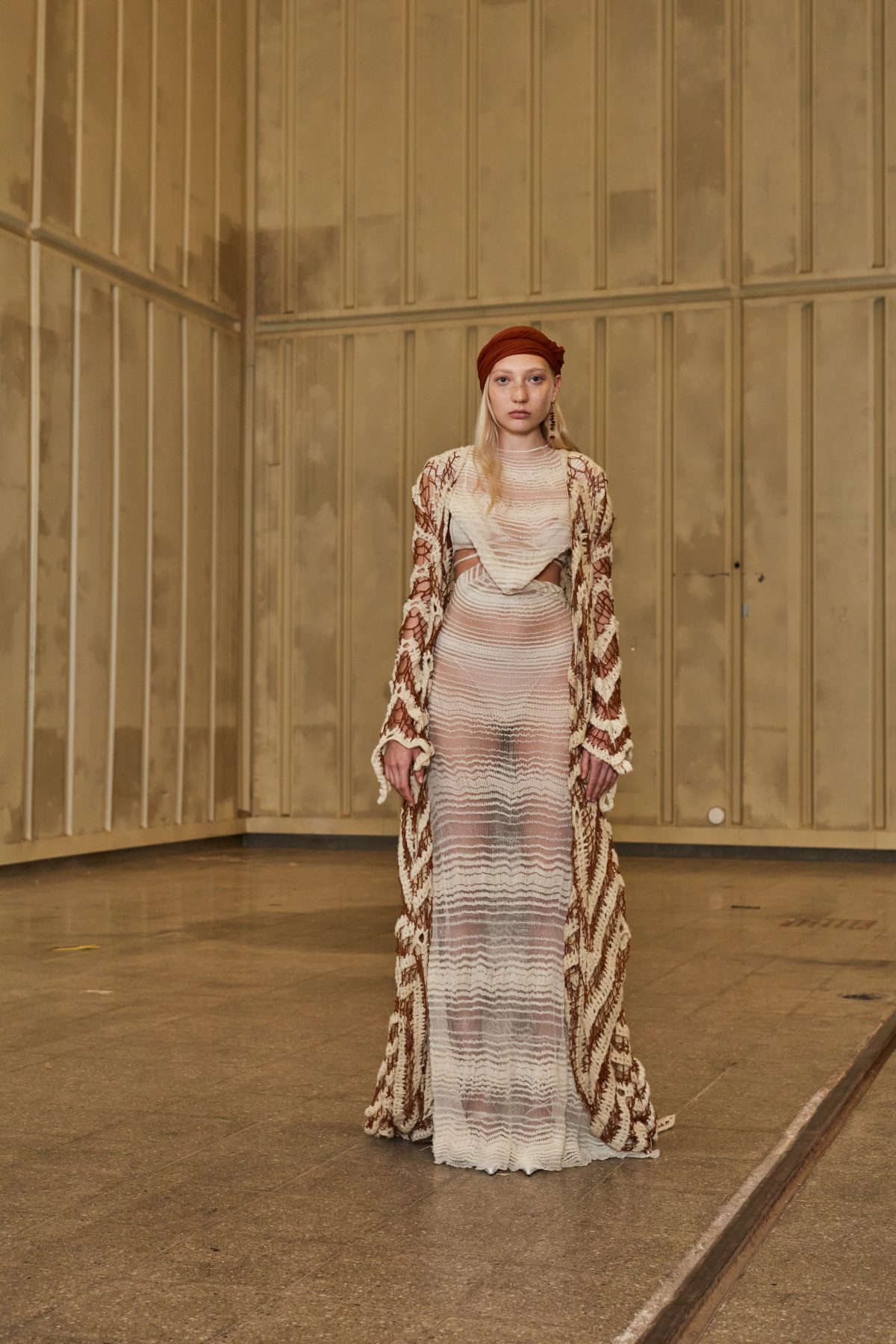 ES_03
ES_03

Elina Silina MA2 Graduate collection Photographer: Sofia Okkonen Model: Stefania
ES_03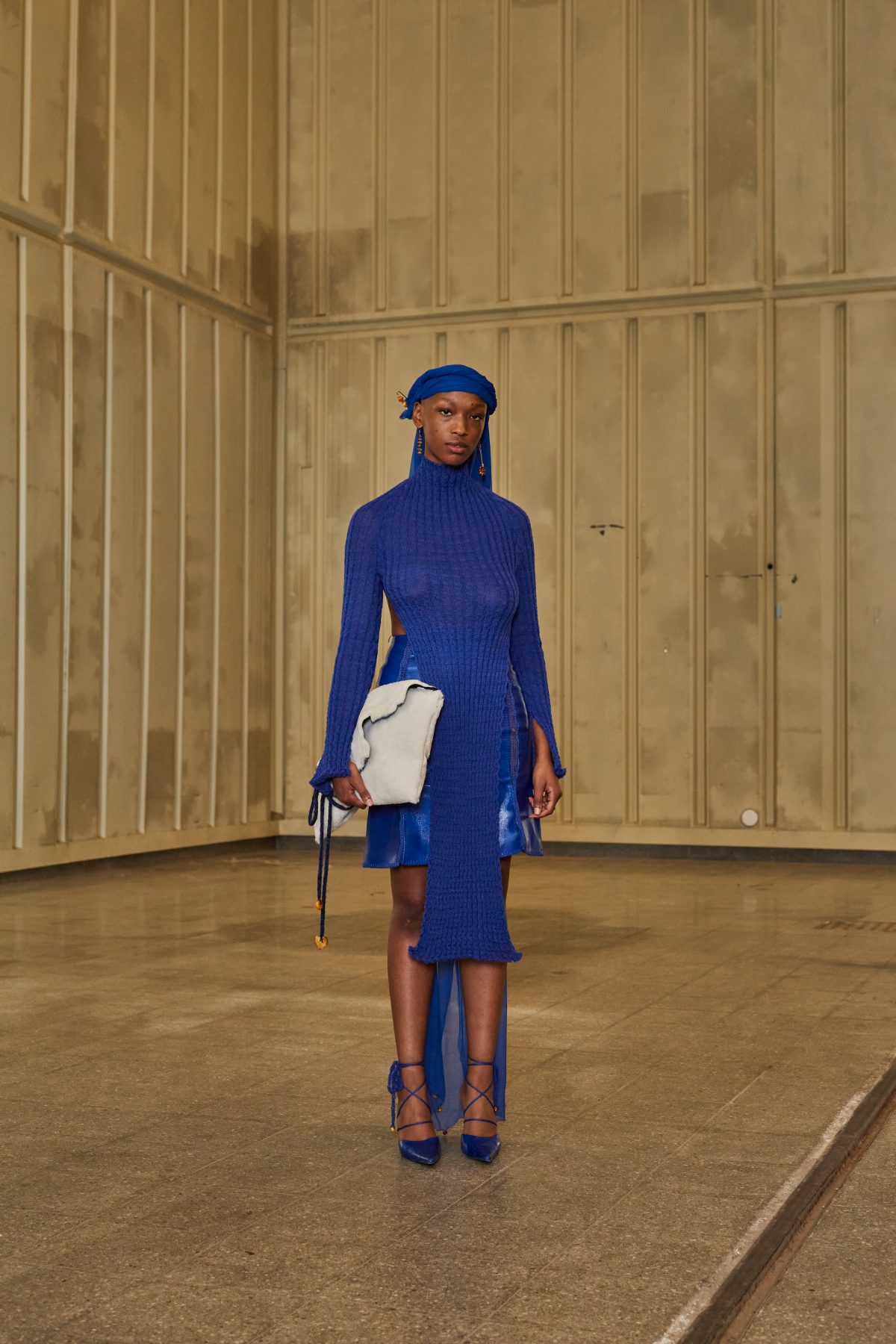 ES_04
ES_04

Elina Silina MA2 Graduate collection Photographer: Sofia Okkonen Model: Kei
ES_04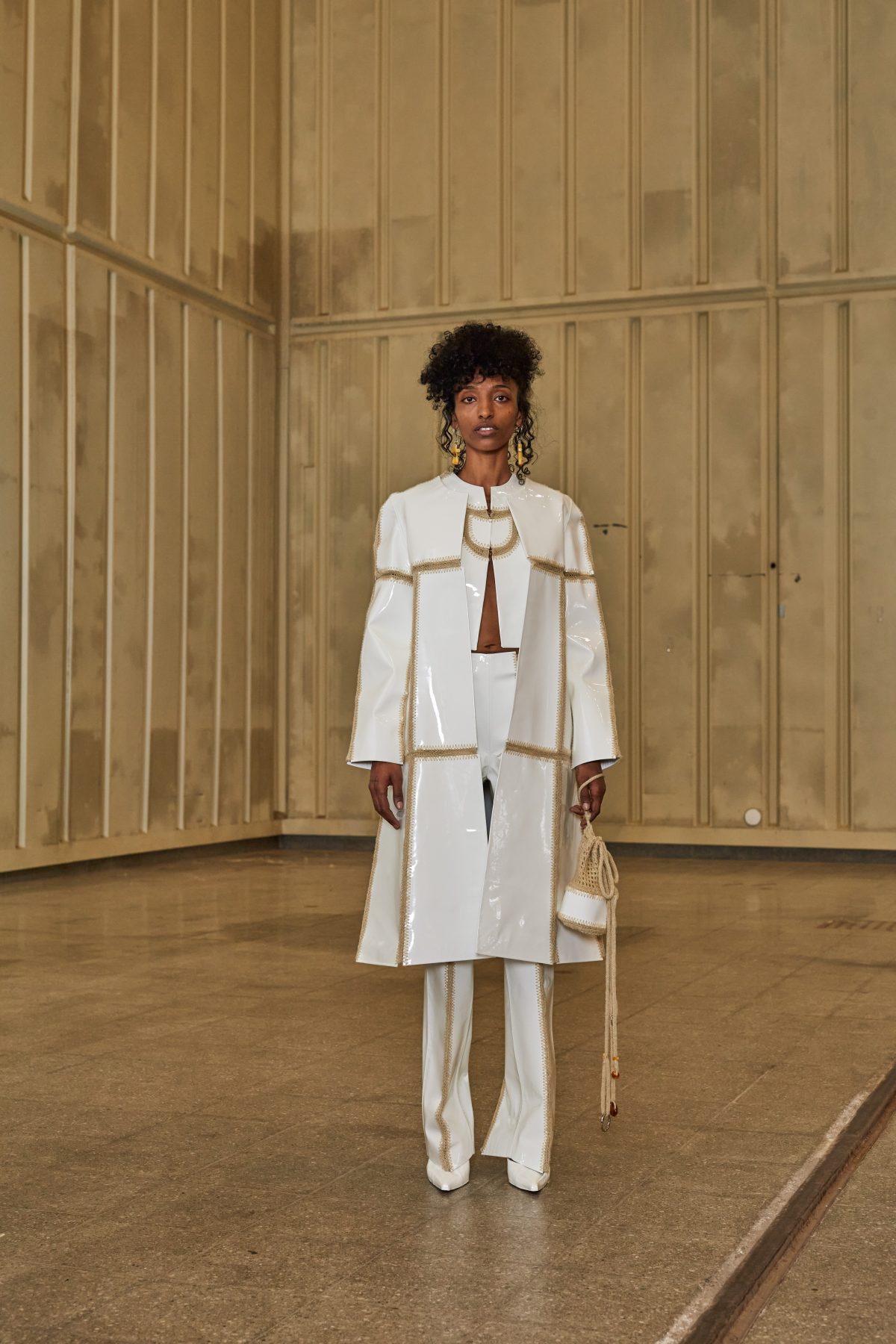 ES_05
ES_05

Elina Silina MA2 Graduate collection Photographer: Sofia Okkonen Model: Erina
ES_05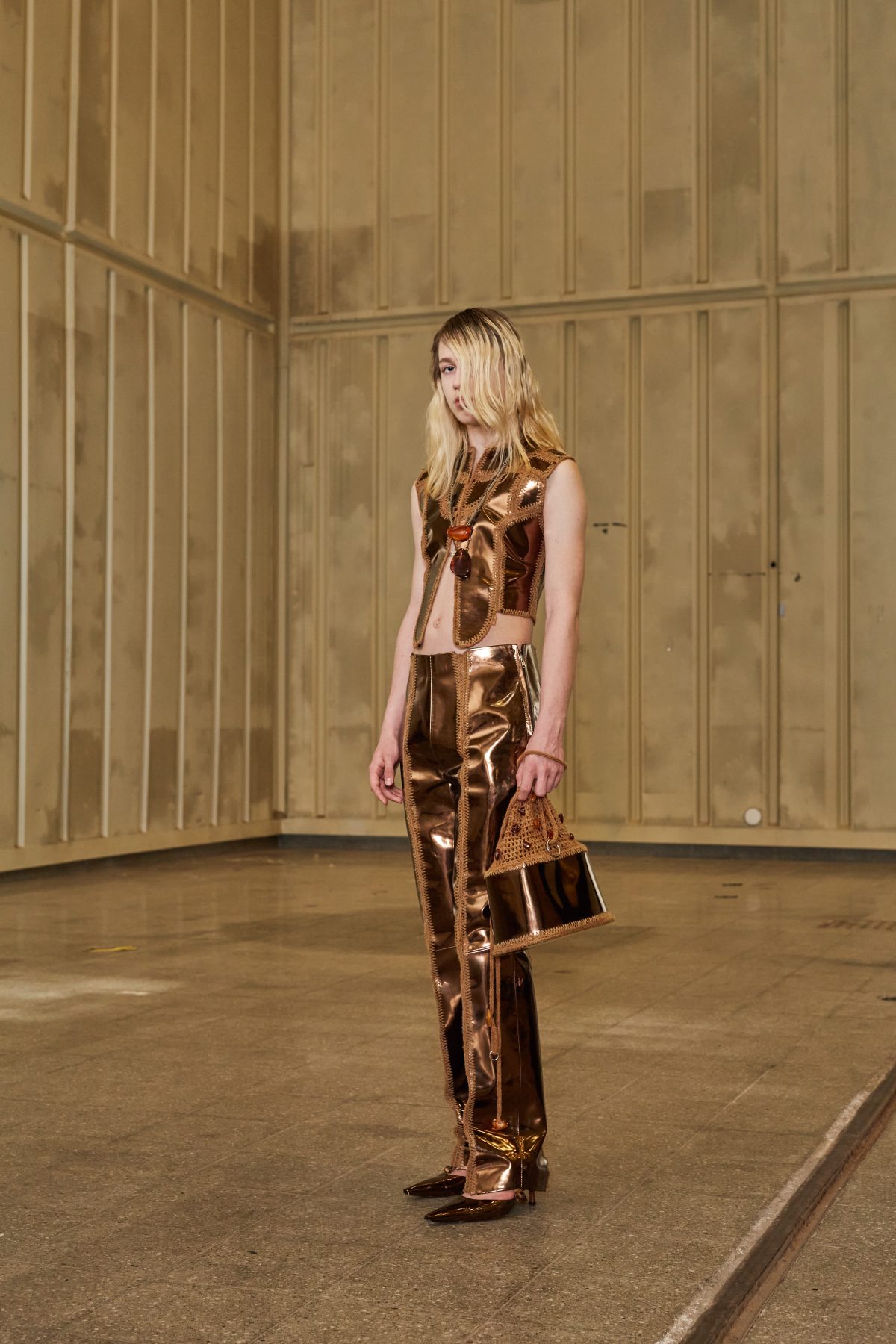 ES_06
ES_06

Elina Silina MA2 Graduate collection Photographer: Sofia Okkonen Model: Ralf
ES_06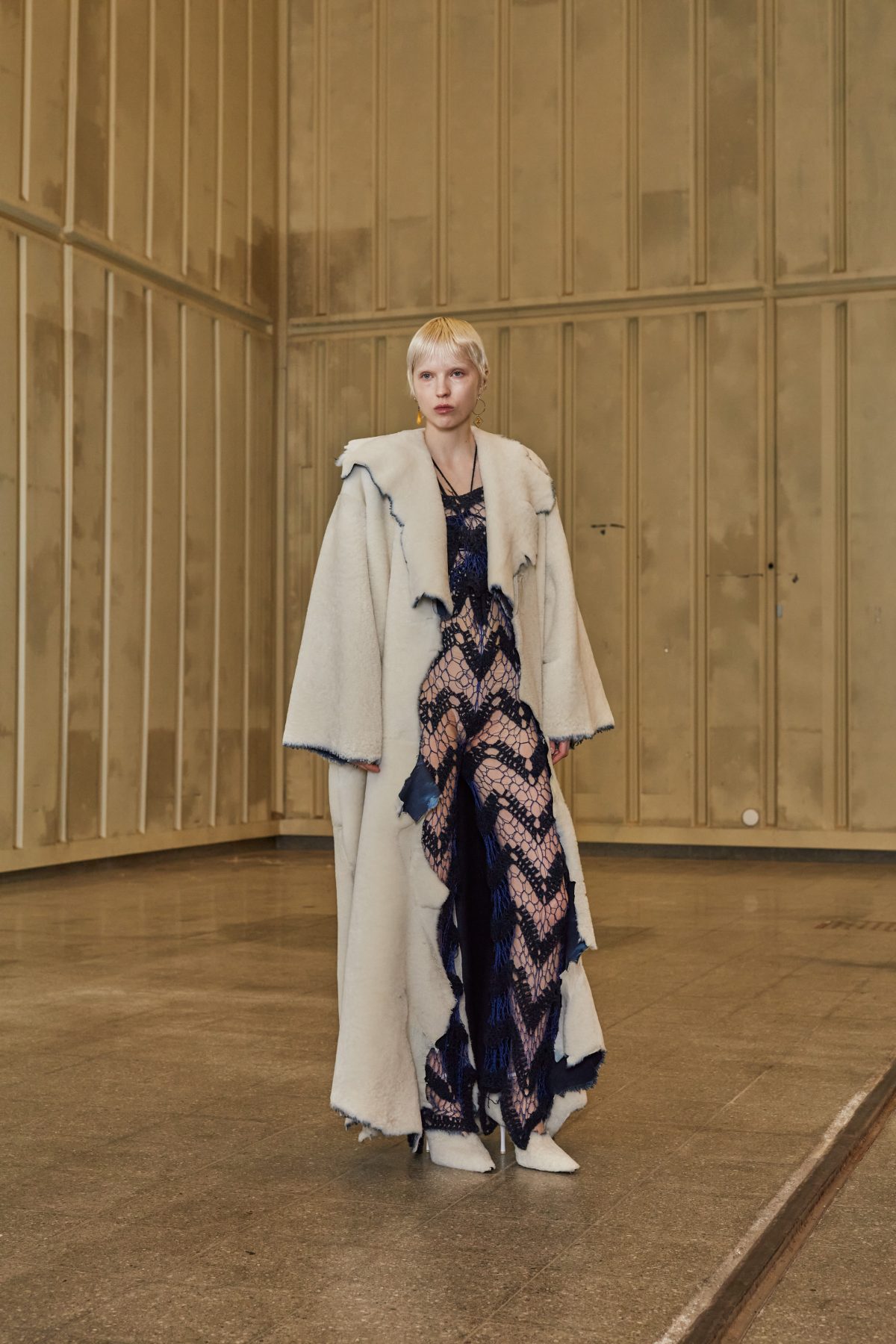 ES_07
ES_07

Elina Silina MA2 Graduate collection Photographer: Sofia Okkonen Model: Katarina
ES_07The essence of Elina Silina’s MA-thesis women’s wear collection lies in researching the handover of Latvian ancestral knowledge through textiles and craftsmanship. It is a deep dive into Latvian folk symbols, their meaning and practical uses.
– I aim to convey the role of textiles as being much more than merely a material. I see cloth as a way to express one’s beliefs and identity, as a means of communication, Silina says.
She also tells that the studies of textile and fashion design at Aalto University broadened her understanding of the unique role of fabrics in connecting people within their culture and other cultures globally.
– The studies also provided a fresh perspective on my own culture, which I wished to explore in this collection, Silina explains.
Researching Latvian ethnography highlights the intricate balance between color, pattern and material in designing surfaces and overall silhouettes. Sourcing right materials and highlighting traditional craftsmanship was part of the process. This included, for example, knitting and crocheting with hand-spun raw wool from locally grown sheep and goats as well as dying raw wool in mushrooms and onion skins and combining it in knitwear with a specialty yarn made from Baltic amber (AMBELIKA®).
– It was also important to me to showcase the unique role ethnographic symbols have in Latvian culture. The geometrical signs are arranged in patterns that prophesize one’s fate and serve as protection from evil. I collaborated with local artisans back home to create hand-woven wool belts with symbolic messages woven into them and craft hand-made Baltic Sea amber buttons and accessories.
Erika Airo
(ba)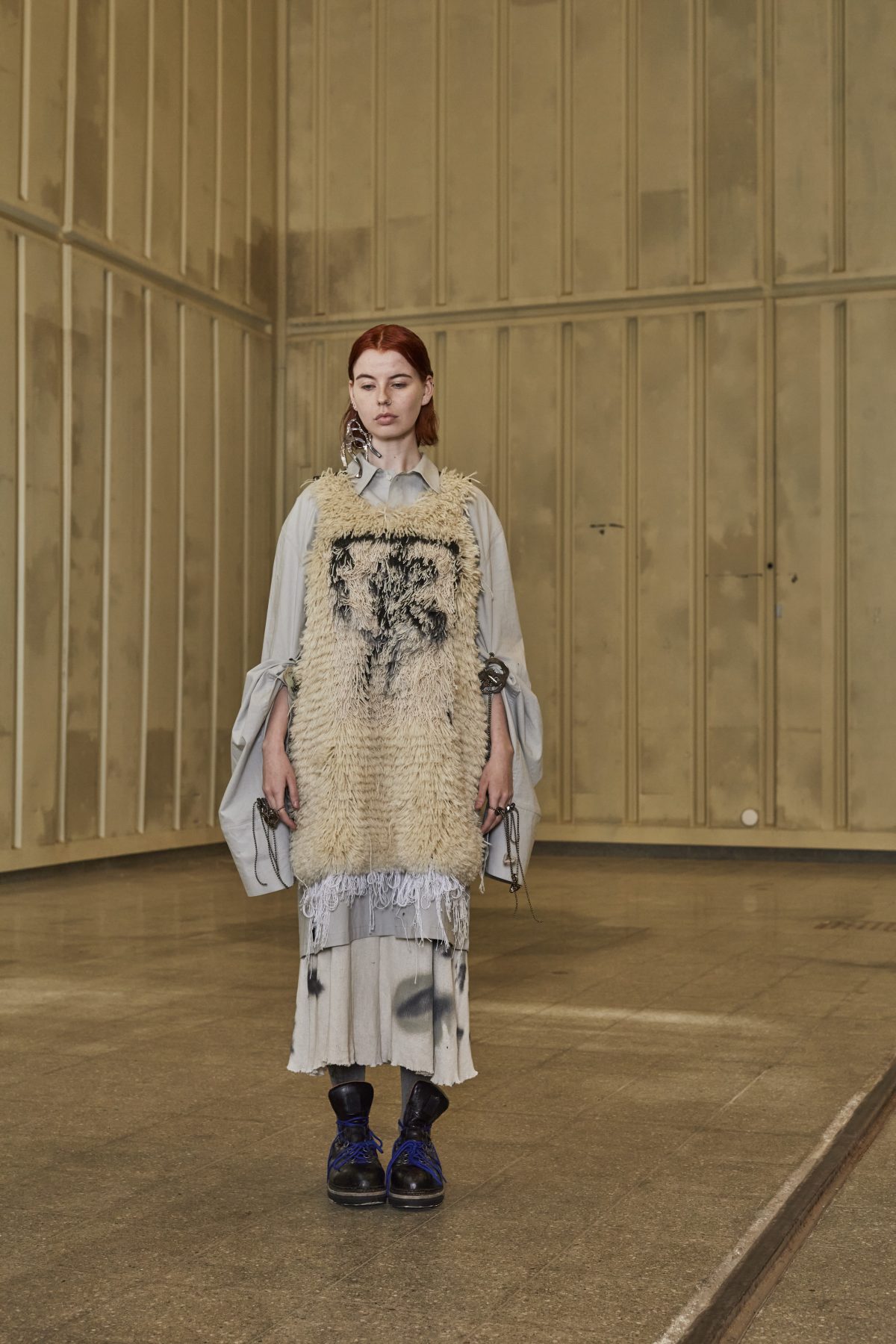 EA_01
EA_01

Erika Airo BA3 Graduate collection Photographer: Sofia Okkonen Model: Alva
EA_01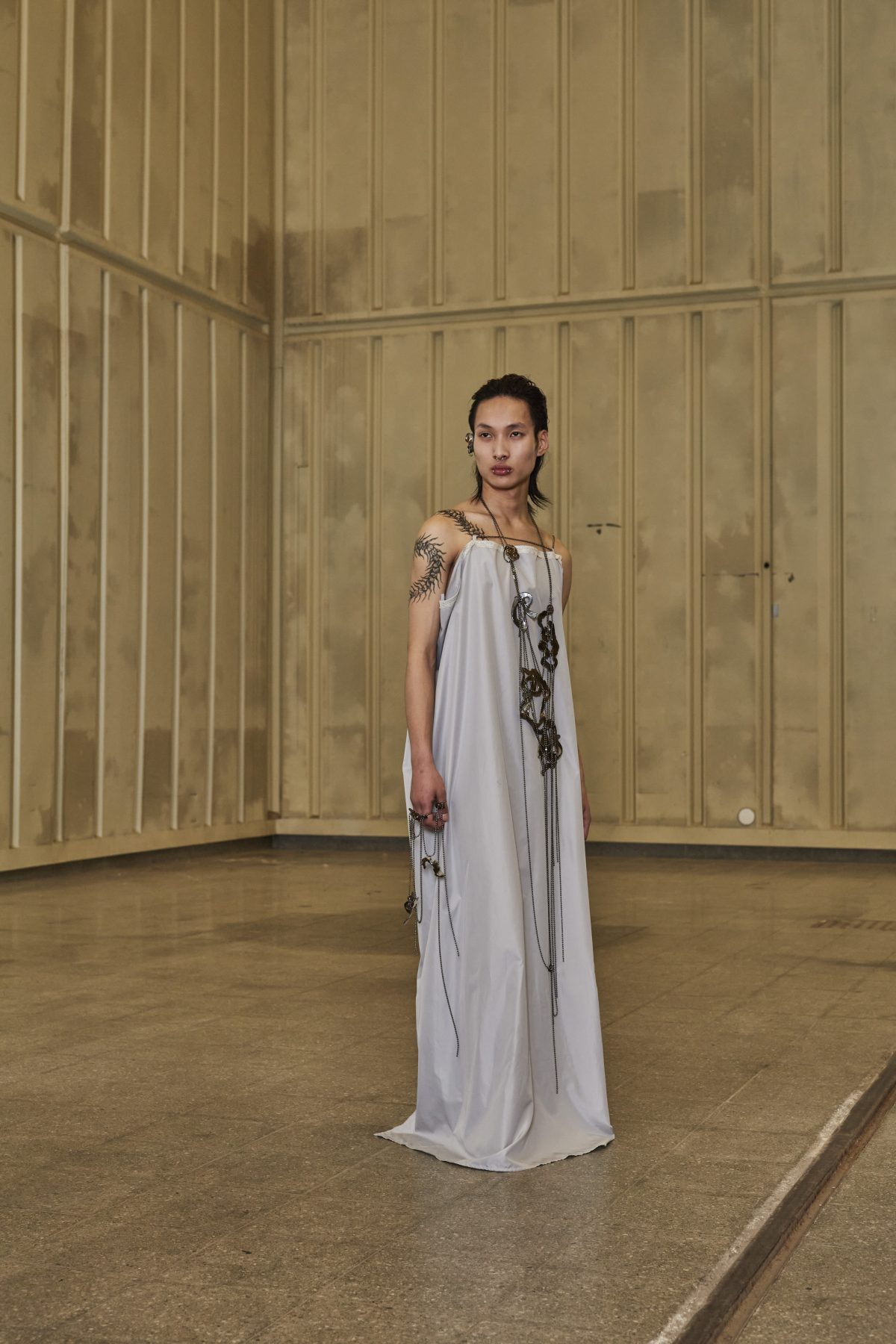 EA_02
EA_02

Erika Airo BA3 Graduate collection Photographer: Sofia Okkonen Model: Kimi
EA_02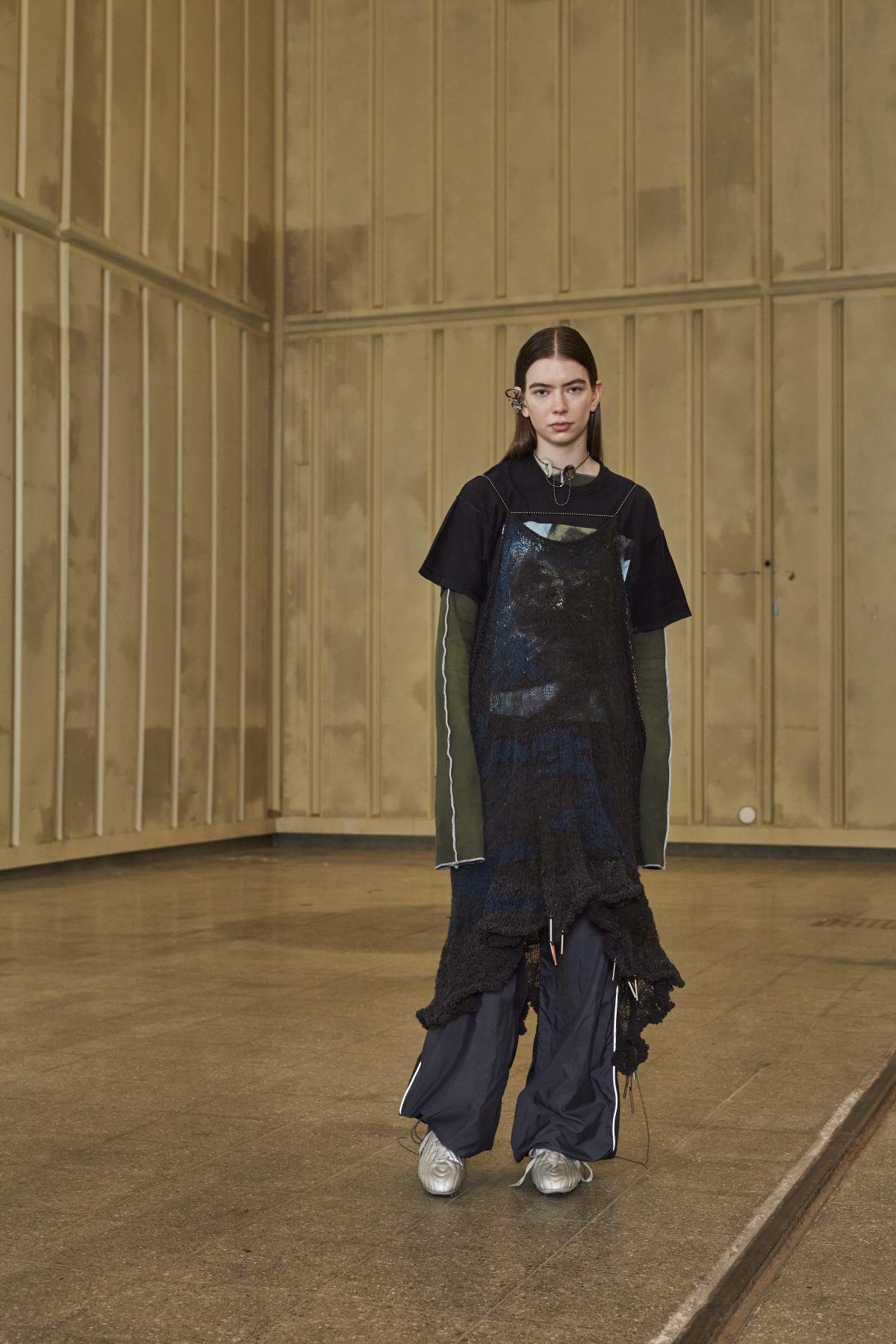 EA_03
EA_03

Erika Airo BA3 Graduate collection Photographer: Sofia Okkonen Model: Olivia
EA_03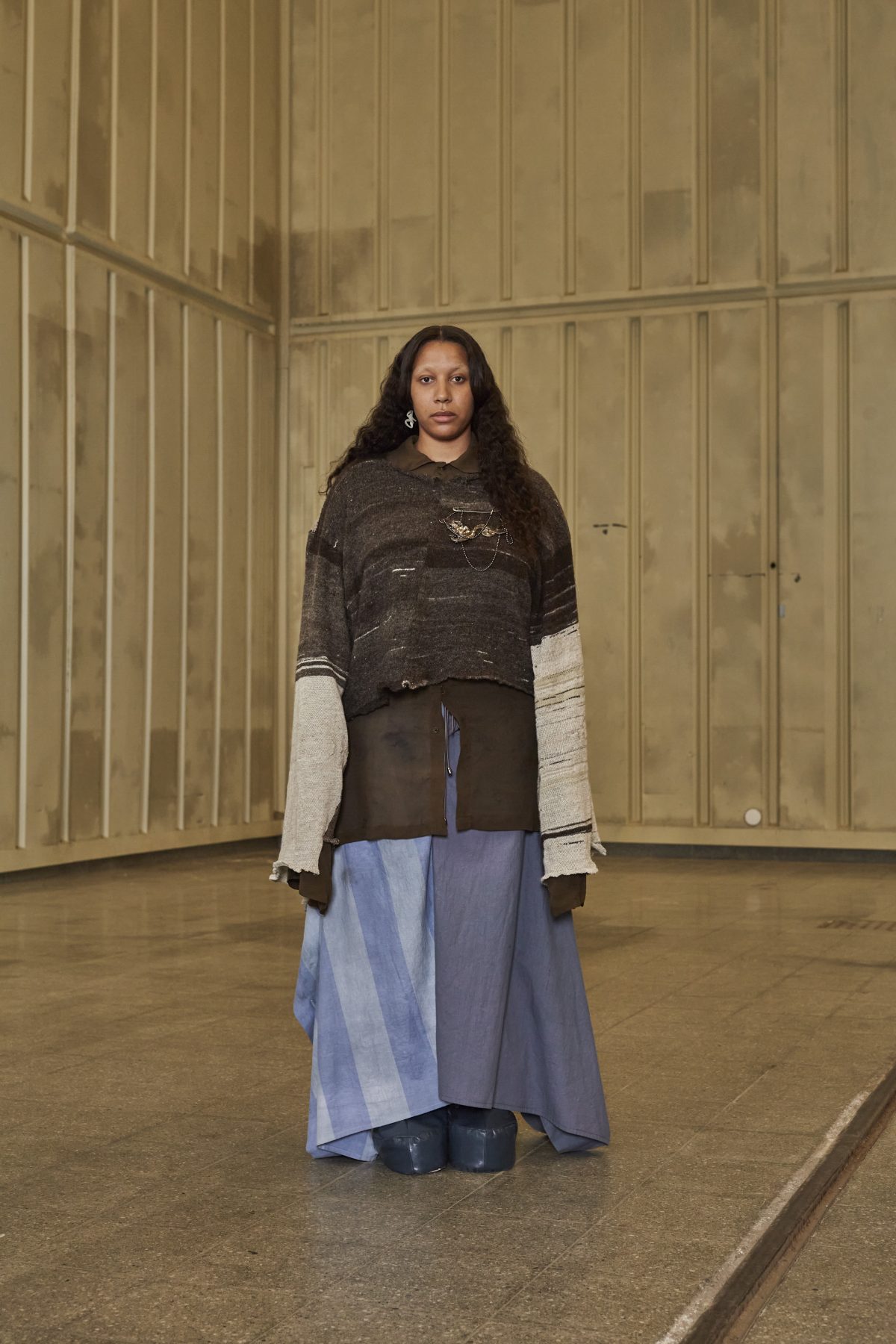 EA_04
EA_04

Erika Airo BA3 Graduate collection Photographer: Sofia Okkonen Model: Maia
EA_04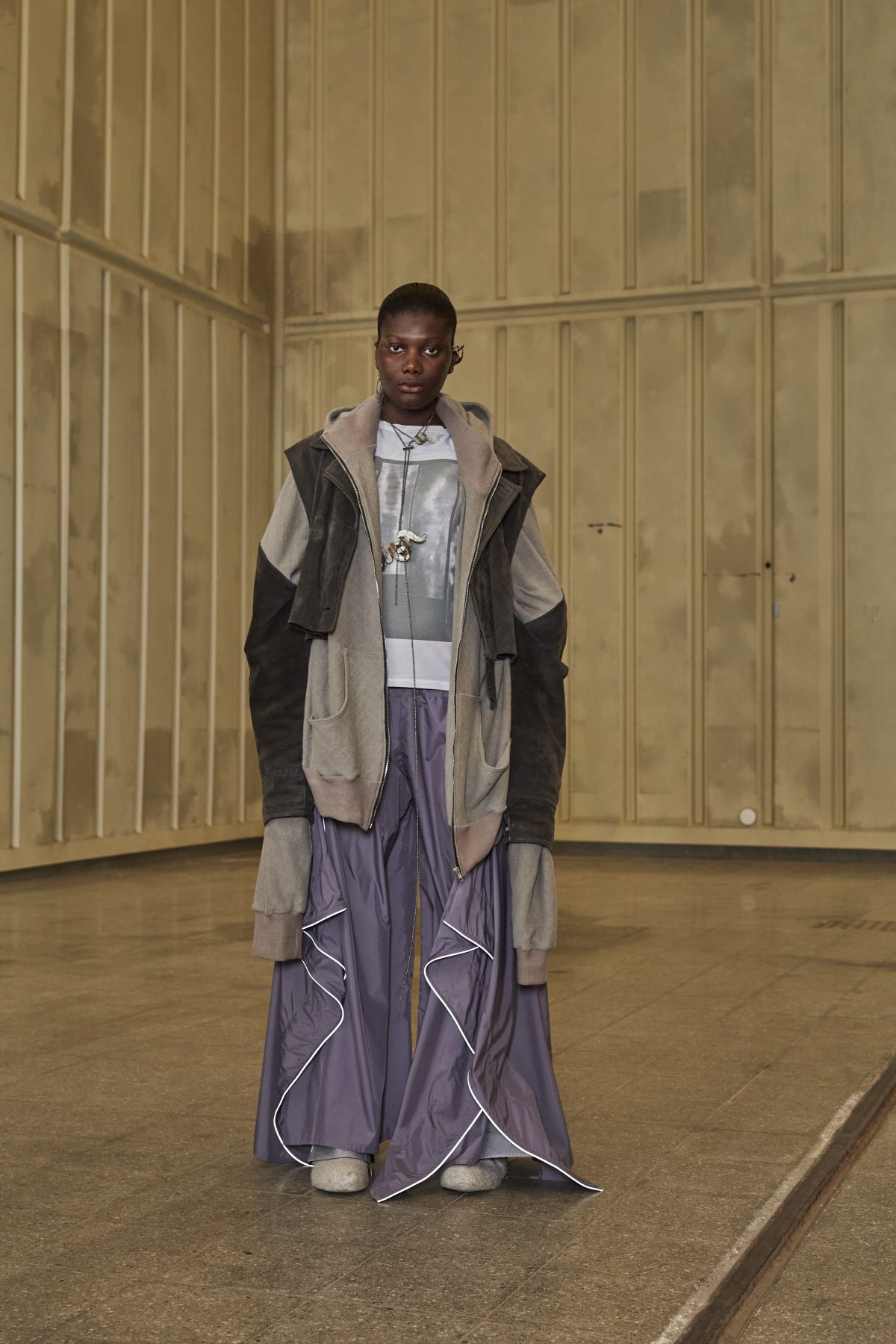 EA_05
EA_05

Erika Airo BA3 Graduate collection Photographer: Sofia Okkonen Model: Adeimi
EA_05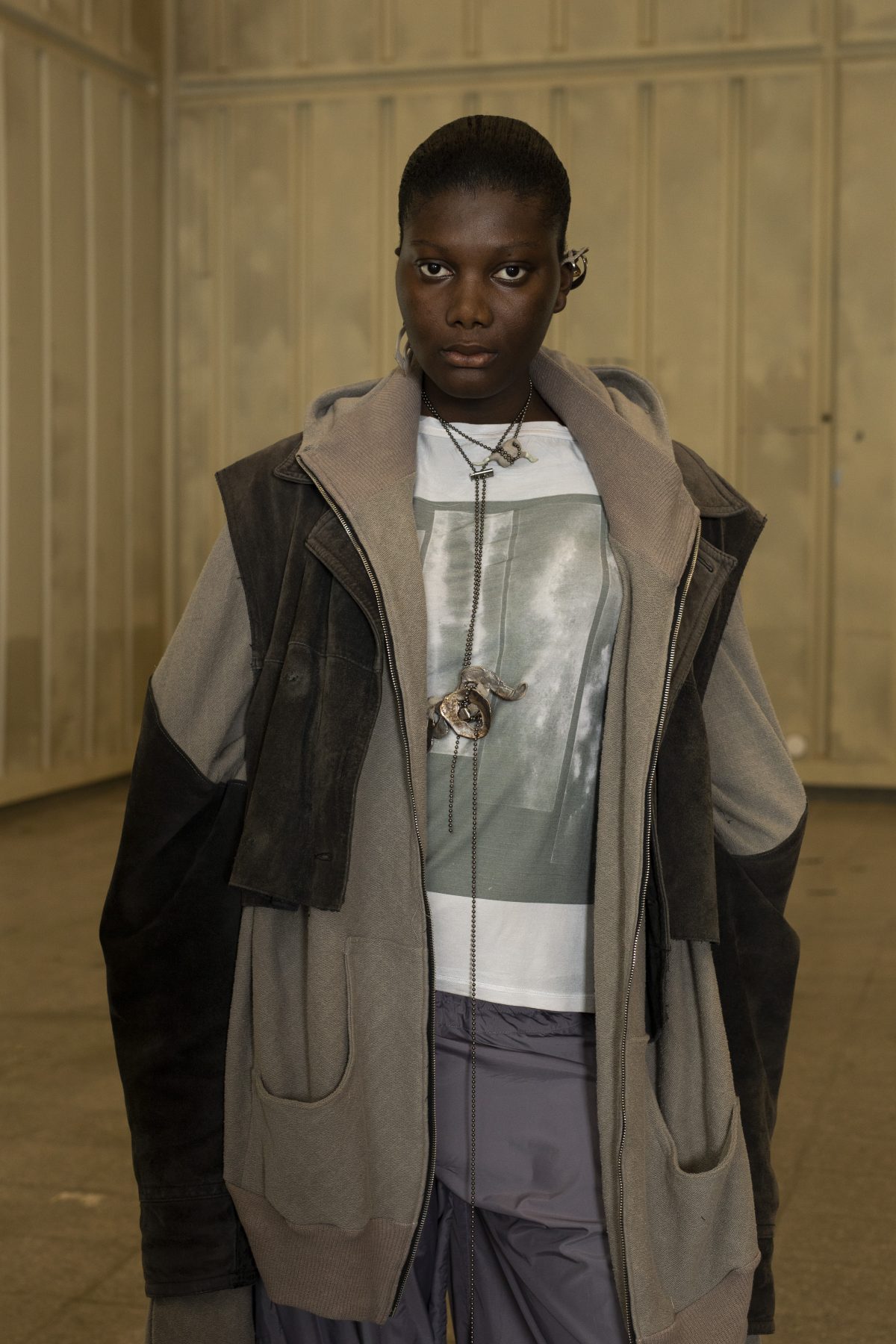 EA_06
EA_06

Erika Airo BA3 Graduate collection Photographer: Sofia Okkonen Model: Adeimi
EA_06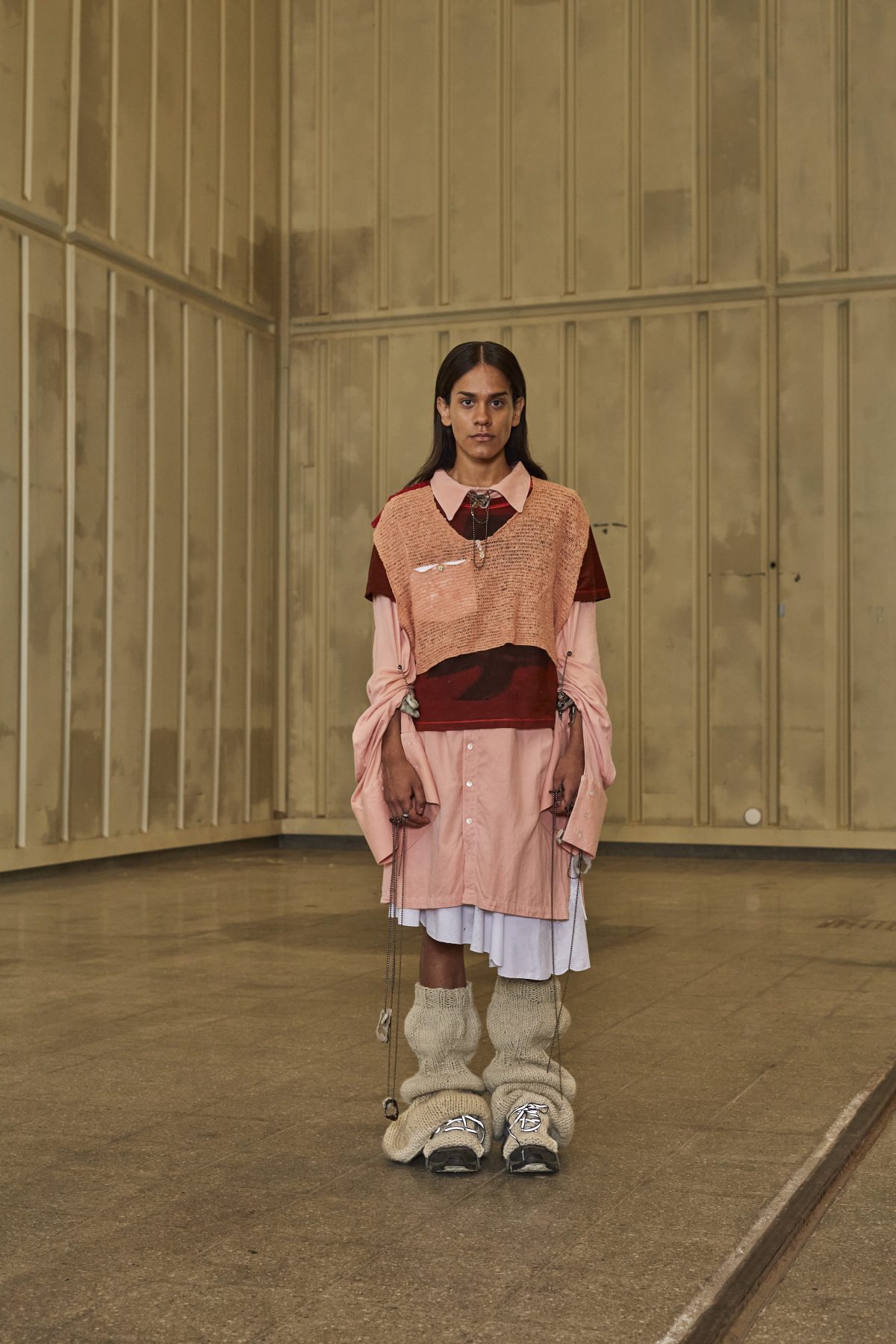 EA_07
EA_07

Erika Airo BA3 Graduate collection Photographer: Sofia Okkonen Model: Santi
EA_07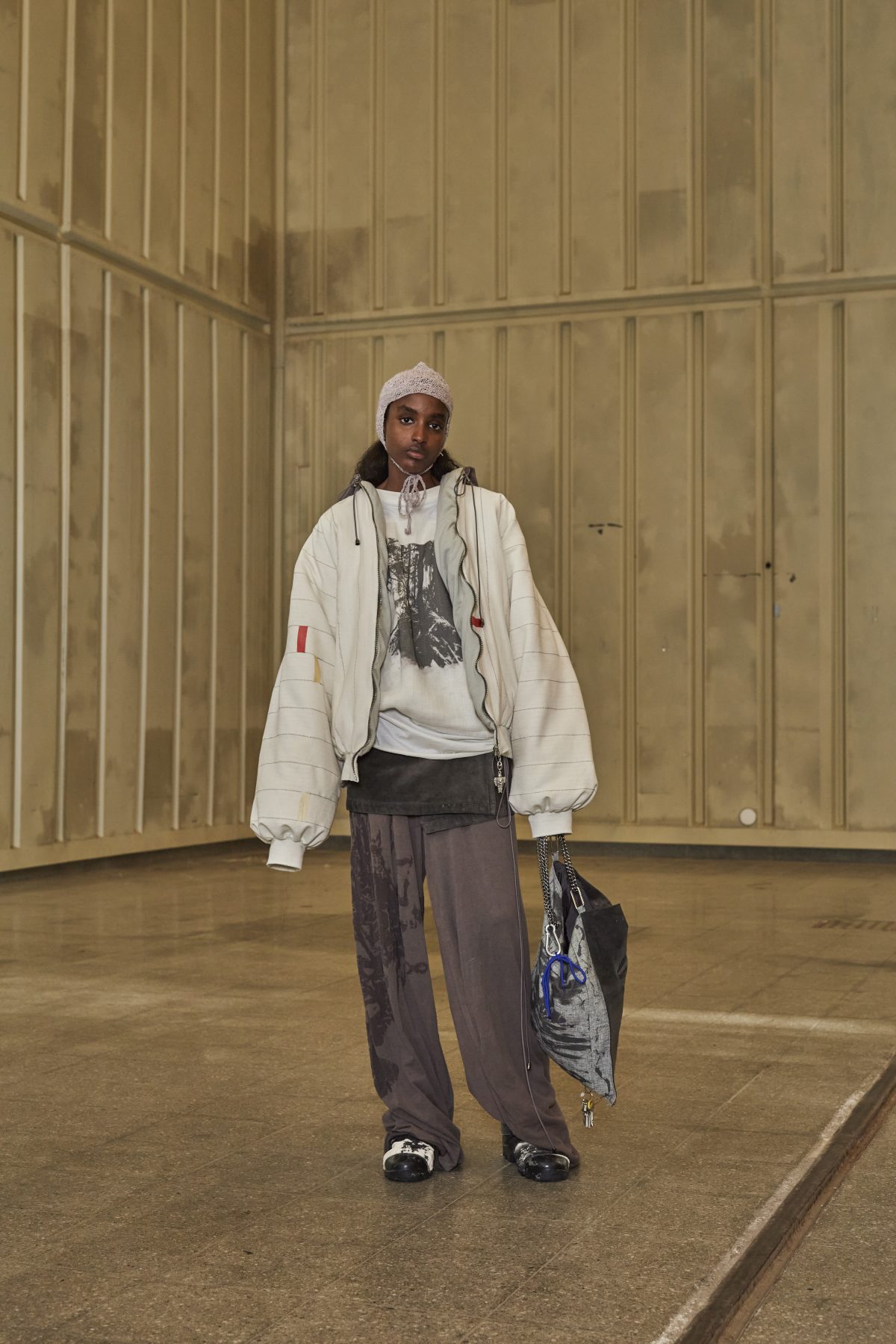 EA_08
EA_08

Erika Airo BA3 Graduate collection Photographer: Sofia Okkonen Model: Zamzam
EA_08In her collection Erika Airo tries to find ways back to an environment that no longer exists the way she once experienced it. Feelings of longing and uncertainty are strongly present as the clothing molds into landmarks and coordinates that she uses to try and attach herself to the passing of time. Many pieces serve as a link to a specific memory or feeling, whether it’s through the material, form or the way of making. Analyzing the way she dresses and uses clothing to build herself up has been an important tool for research as have the hundreds of photos documenting her surroundings, mostly from walks with the family cat.
Airo remembers through materials. The memory of how something feels on the skin has very intuitively driven the process of choosing fabrics and brought forward a personal logic clear to the designer, of why everything is how it is in her collection. Also creating material like knits and weaves by hand has been a patient yet rewarding exploration of trying very tangibly to build around the pieces of Airo’s past surroundings.
– The collection reflects my relationship to my personal history and the environment where I grew up. My thoughts have focused mainly on the forests and fields of Viikki which feel like my own though they are public spaces I have only passed through.
Shell fabrics and nightgowns nods to Airo’s tattoo practice in the form of hand knit and woven textiles. They aim to create a both visual and sensory experience as she figures out her own visual language. Mirroring the process of tattooing to making of clothes has been a continuous effort to bring ease and trust for the process itself while embracing the shifts in the changes of formats, from paper to ink to skin to clothing.
– Making of the collection has felt very dream-like. It’s me trying to materialize for myself a version of time or a fading feeling I’d like to hold closer. I’m trying to pull back pieces of me. Trying to find some steady ground with myself.
Idalina Friman
(ma)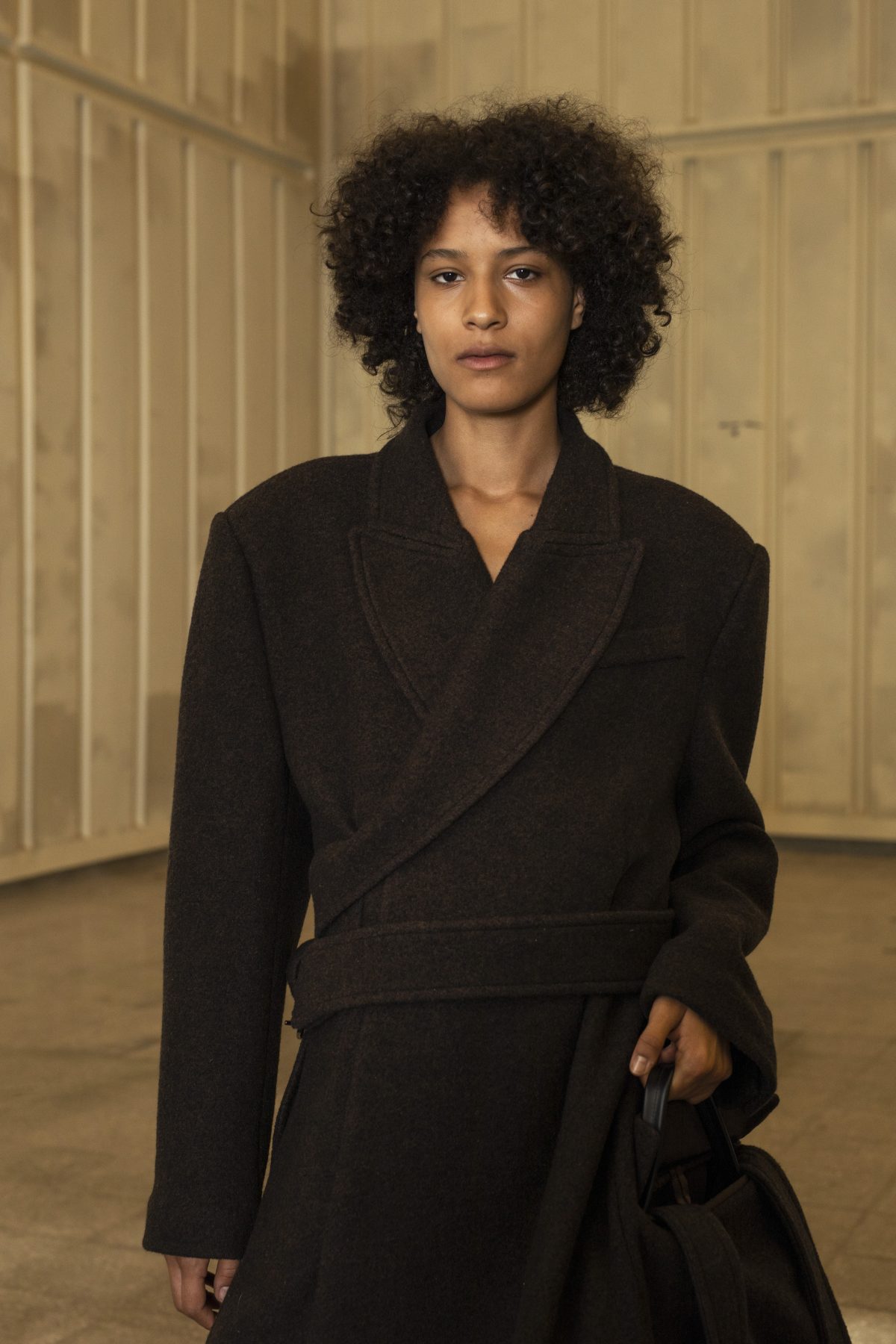 IF_01
IF_01

Idalina Friman MA2 Graduate collection Photographer: Sofia Okkonen Model: Leila
IF_01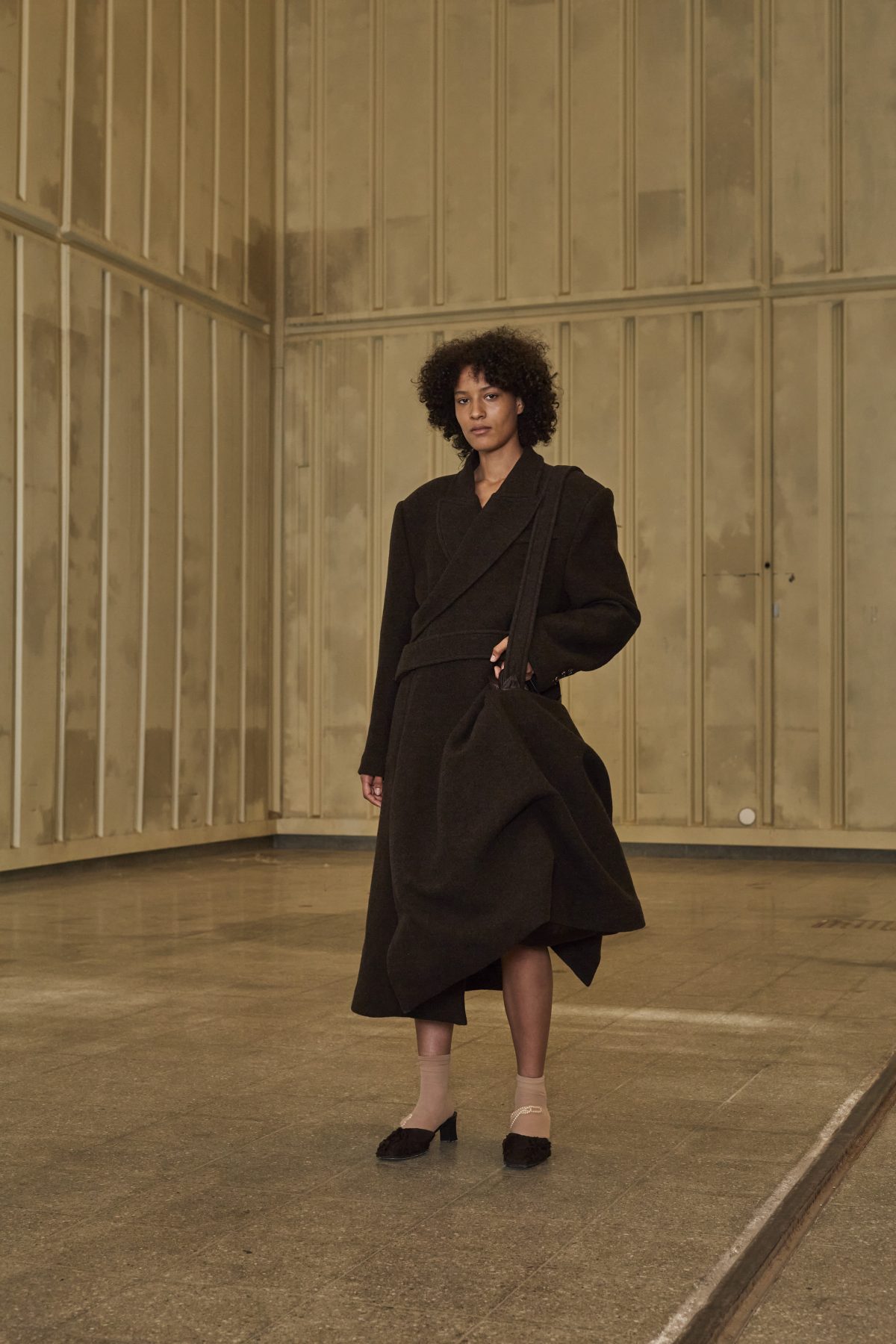 IF_02
IF_02

Idalina Friman MA2 Graduate collection Photographer: Sofia Okkonen Model: Leila
IF_02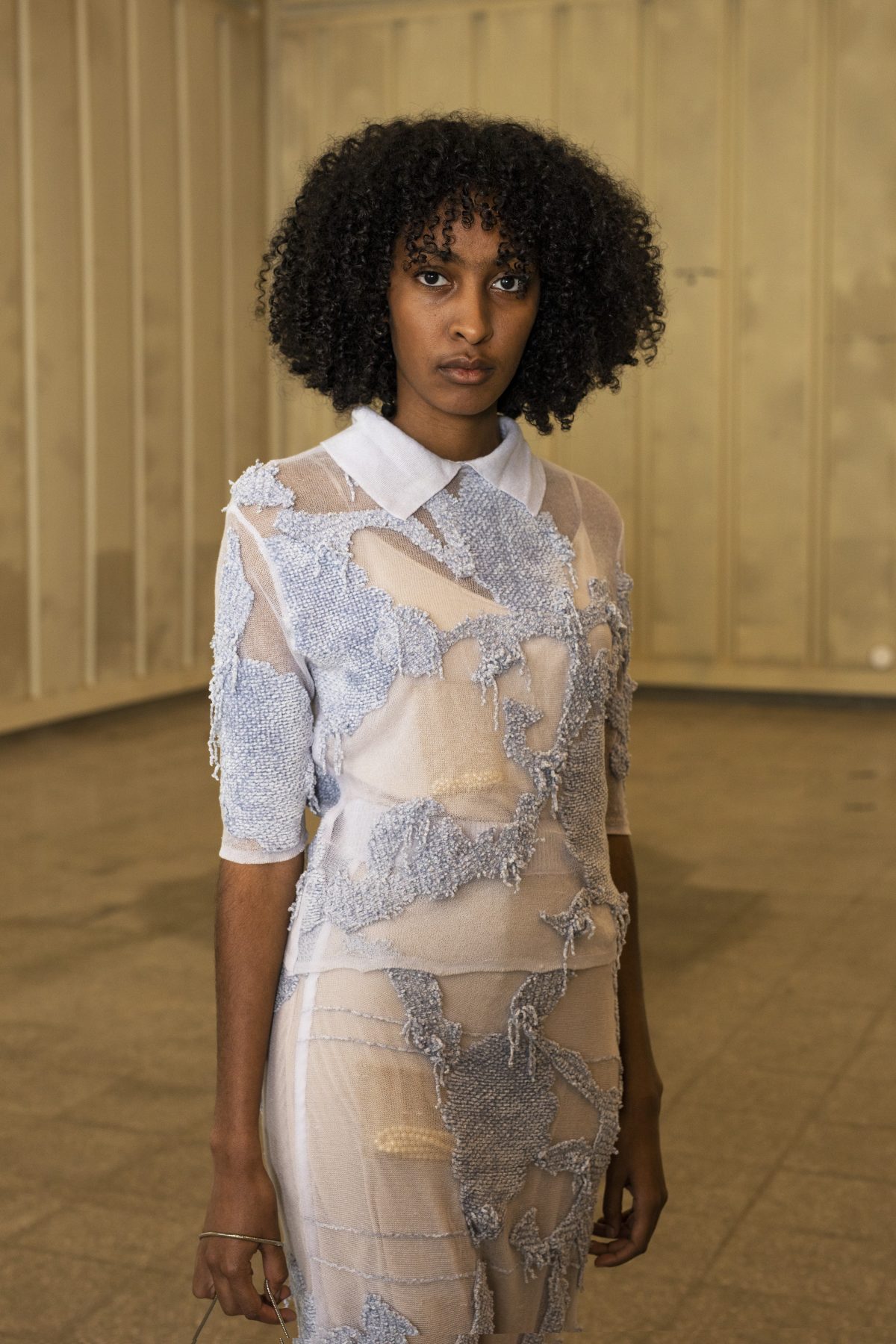 IF_03
IF_03

Idalina Friman MA2 Graduate collection Photographer: Sofia Okkonen Model: Makda
IF_03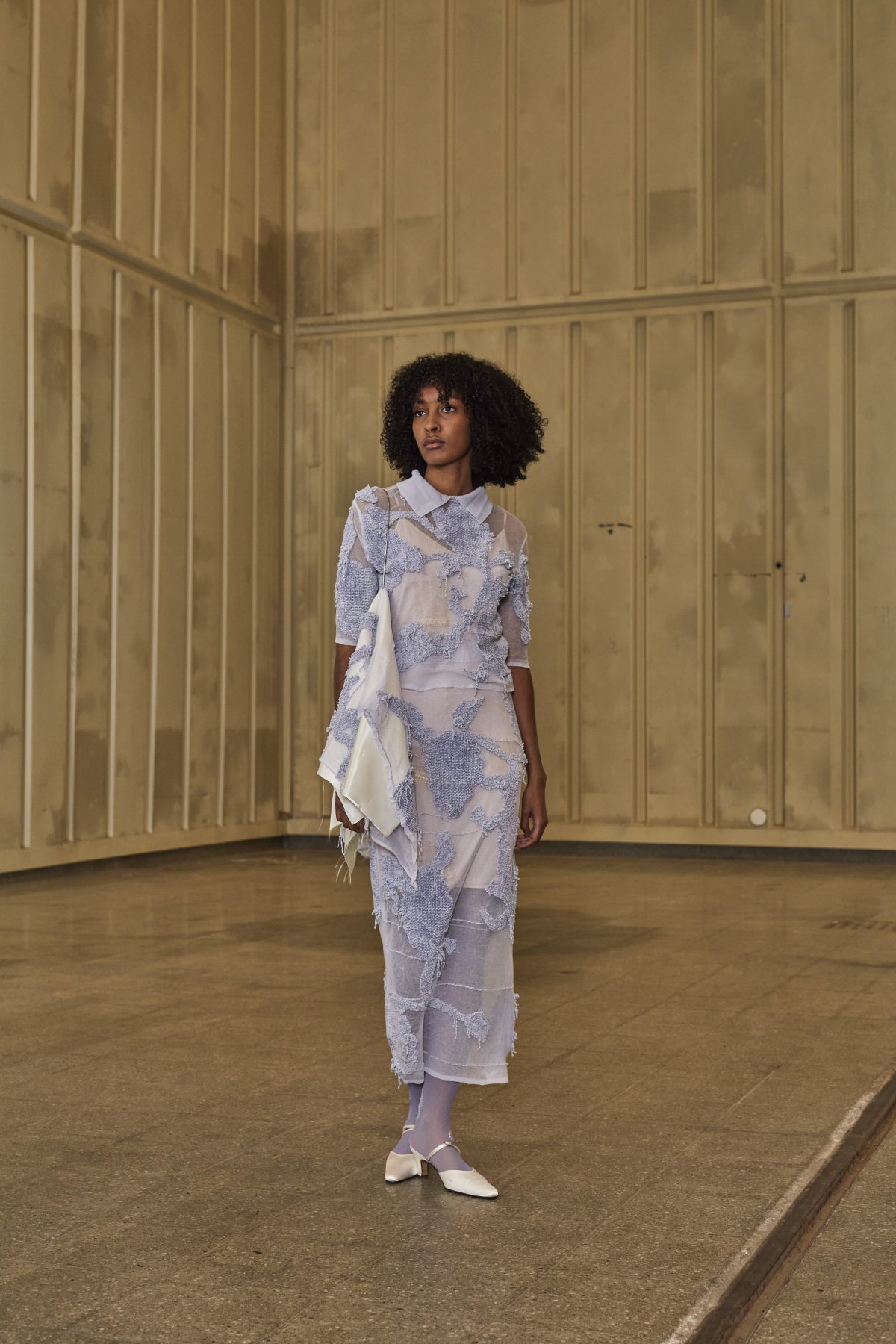 IF_04
IF_04

Idalina Friman MA2 Graduate collection Photographer: Sofia Okkonen Model: Makda
IF_04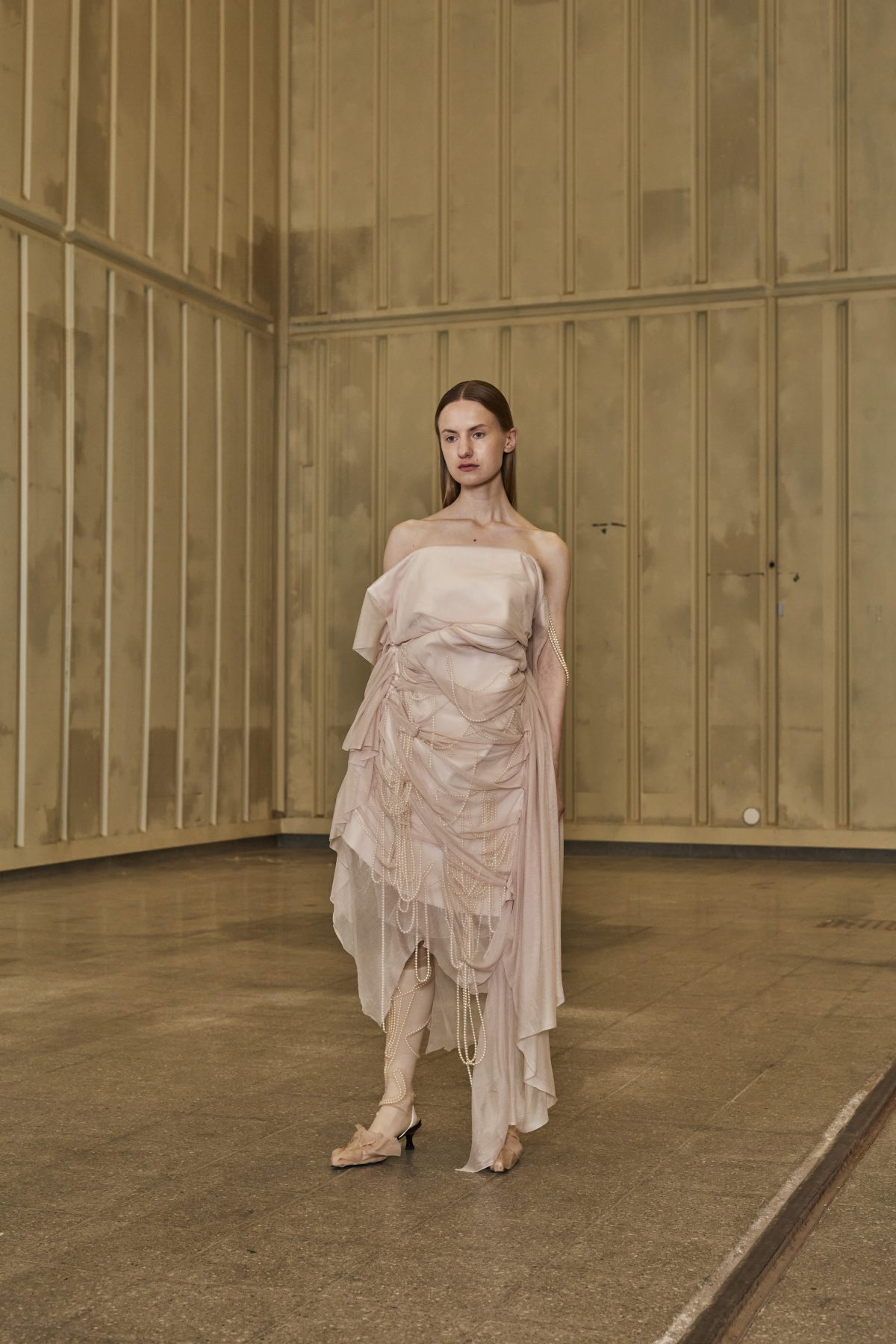 IF_05
IF_05

Idalina Friman MA2 Graduate collection Photographer: Sofia Okkonen Model: Annu
IF_05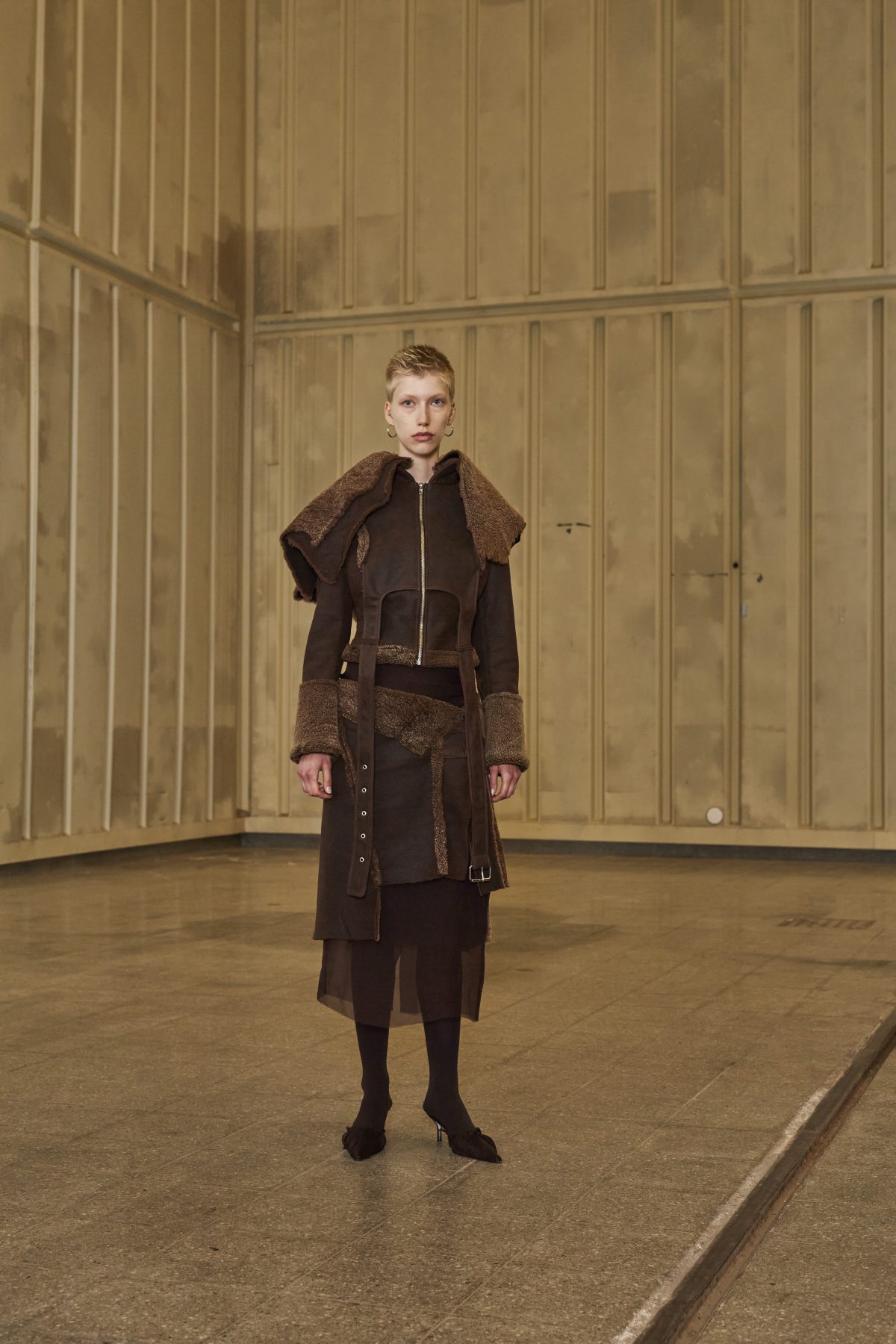 IF_06
IF_06

Idalina Friman MA2 Graduate collection Photographer: Sofia Okkonen Model: Anni
IF_06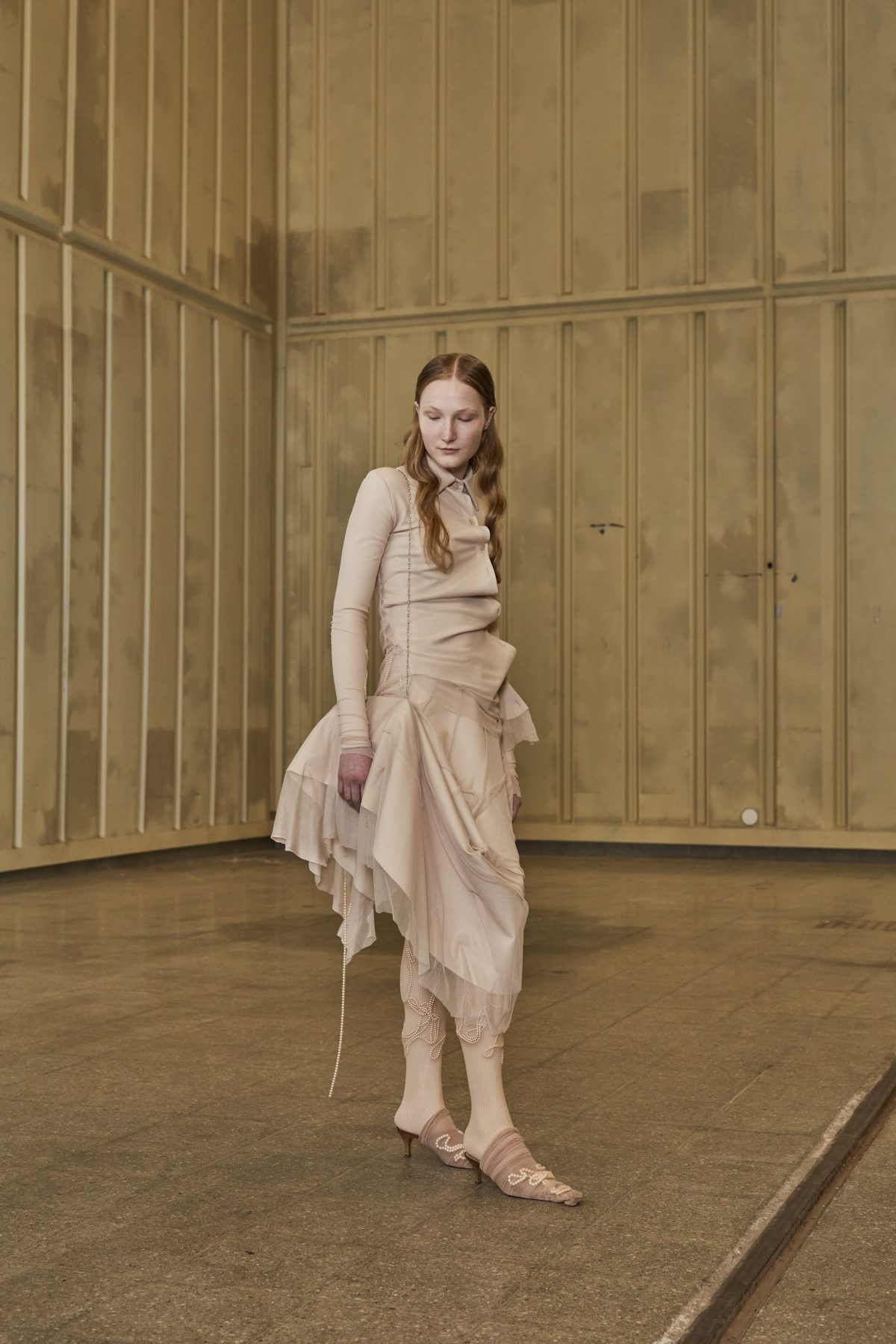 IF_07
IF_07

Idalina Friman MA2 Graduate collection Photographer: Sofia Okkonen Model: Aada
IF_07Idaliina Friman’s master thesis collection is inspired by her family’s migration history during the second world war, when parts of Finland were surrendered to Russia. She approached the theme of fleeing by examining what kind of items and clothing her grandparents took with them while having to leave their homes abruptly.
– I was especially inspired by the study of symbolic meanings and emotions related to the objects chosen for this journey and the way they were carried, stitched and hid inside the clothing, Friman explains.
The practice of hiding served as an inspiration for pattern making experimentation throughout the process. By attaching pearls, jewelry and accessories into the clothing, the weight of these objects transform the silhouettes unexpectedly. With the selected material she aimed to combine old and new, finding ways to use second hand and surplus materials whenever possible, but combining them with new and more modern materials. Second hand shearlings and surplus wools were accompanied with pearls made from recycled glass and hand knitted embroidered knits and silk tulles hand dyed to catch the faded colors of worn out clothing.
– I chose materials which portray my own personal memories, emotions and also represent the emotional bond to certain materials and objects. In this way, drawing my own connection and interpretation of my grandparents’ experiences and examining how these themes still, after generations, are shown in my own identity through the feelings of rootlessness and emotional attachment to objects and material.
Kaius Viljanen
(ba)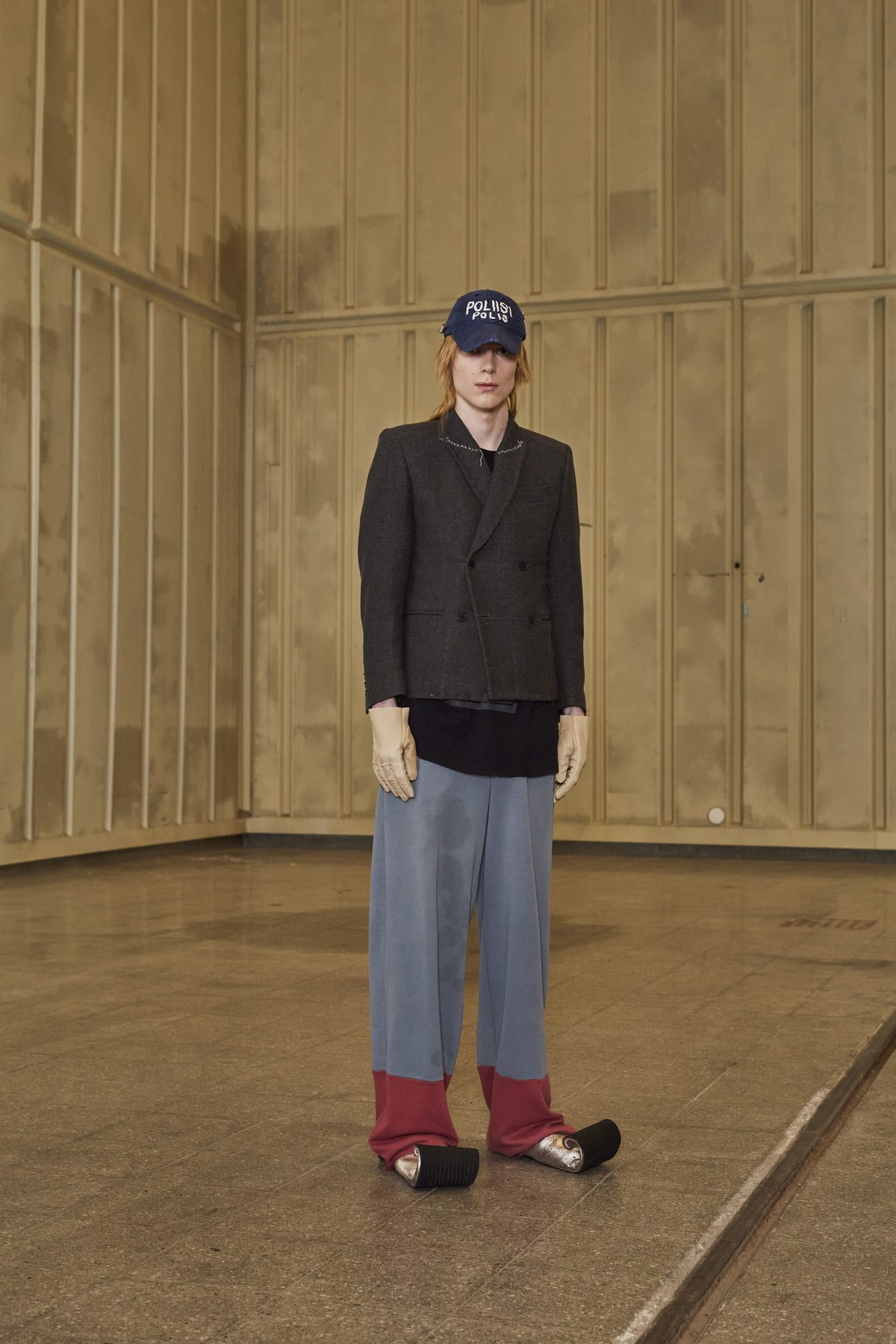 KV_01
KV_01

Kaius Viljanen BA3 Graduate collection Photographer: Sofia Okkonen Model: Eemil
KV_01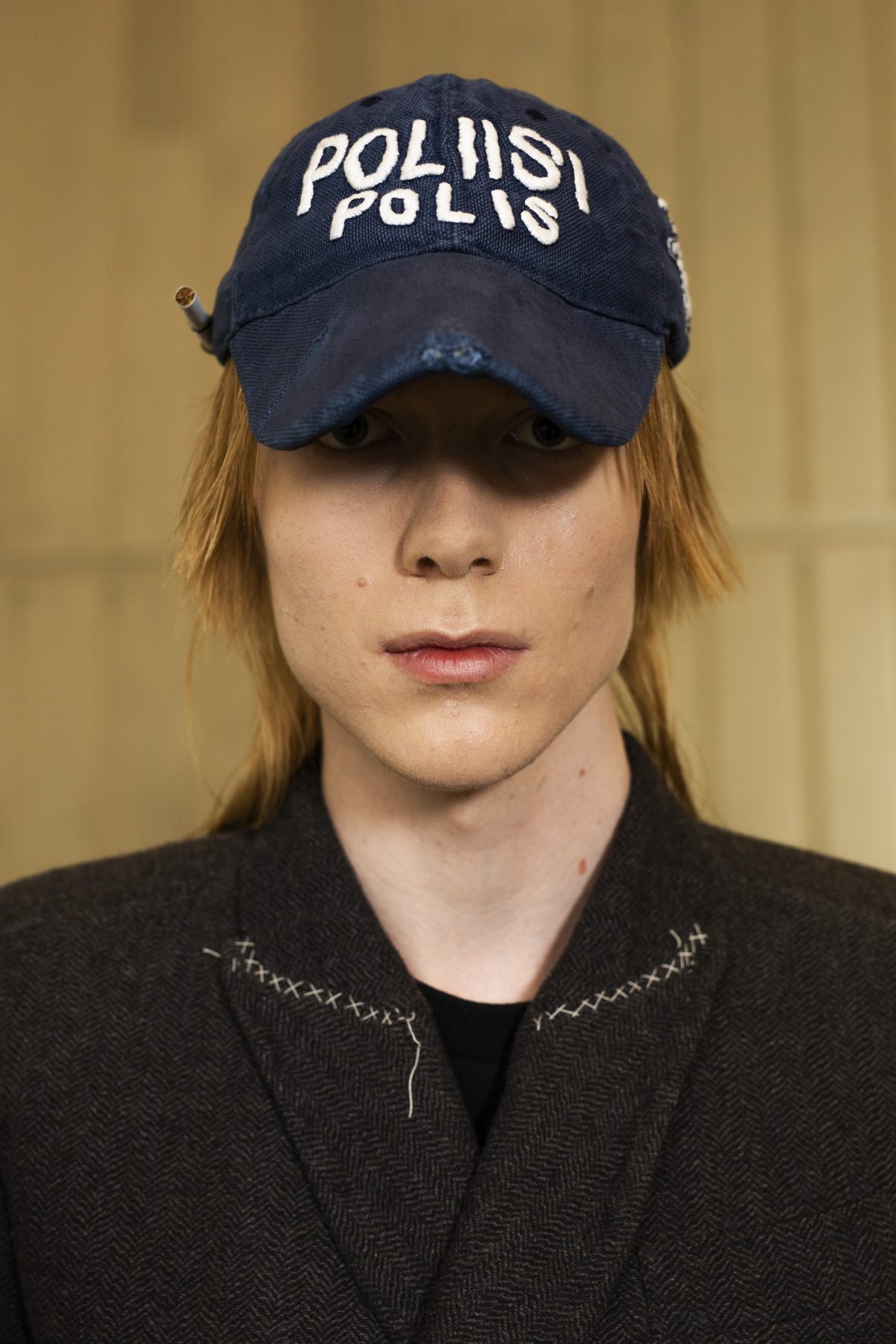 KV_02
KV_02

Kaius Viljanen BA3 Graduate collection Photographer: Sofia Okkonen Model: Eemil
KV_02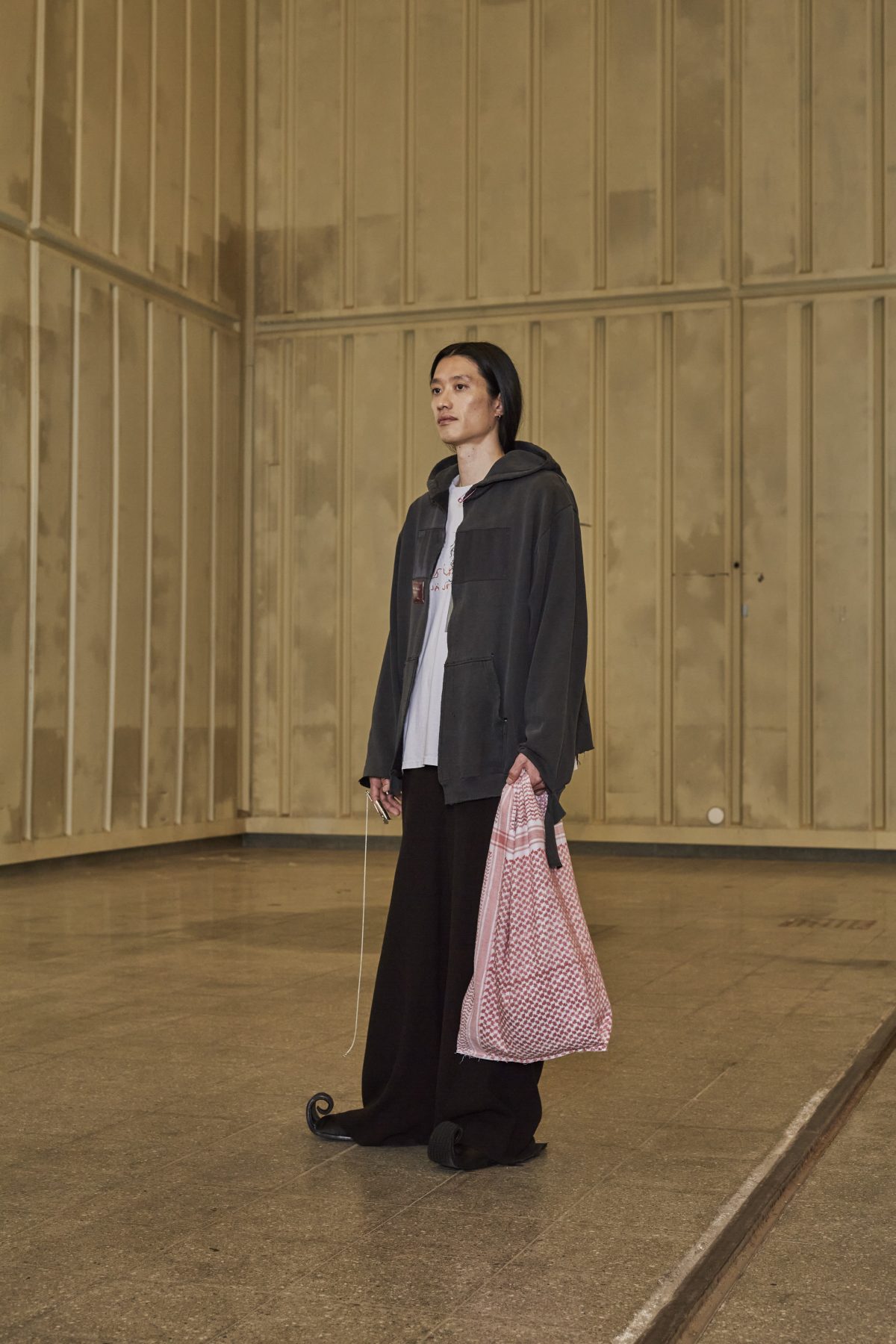 KV_03
KV_03

Kaius Viljanen BA3 Graduate collection Photographer: Sofia Okkonen Model: Sohei
KV_03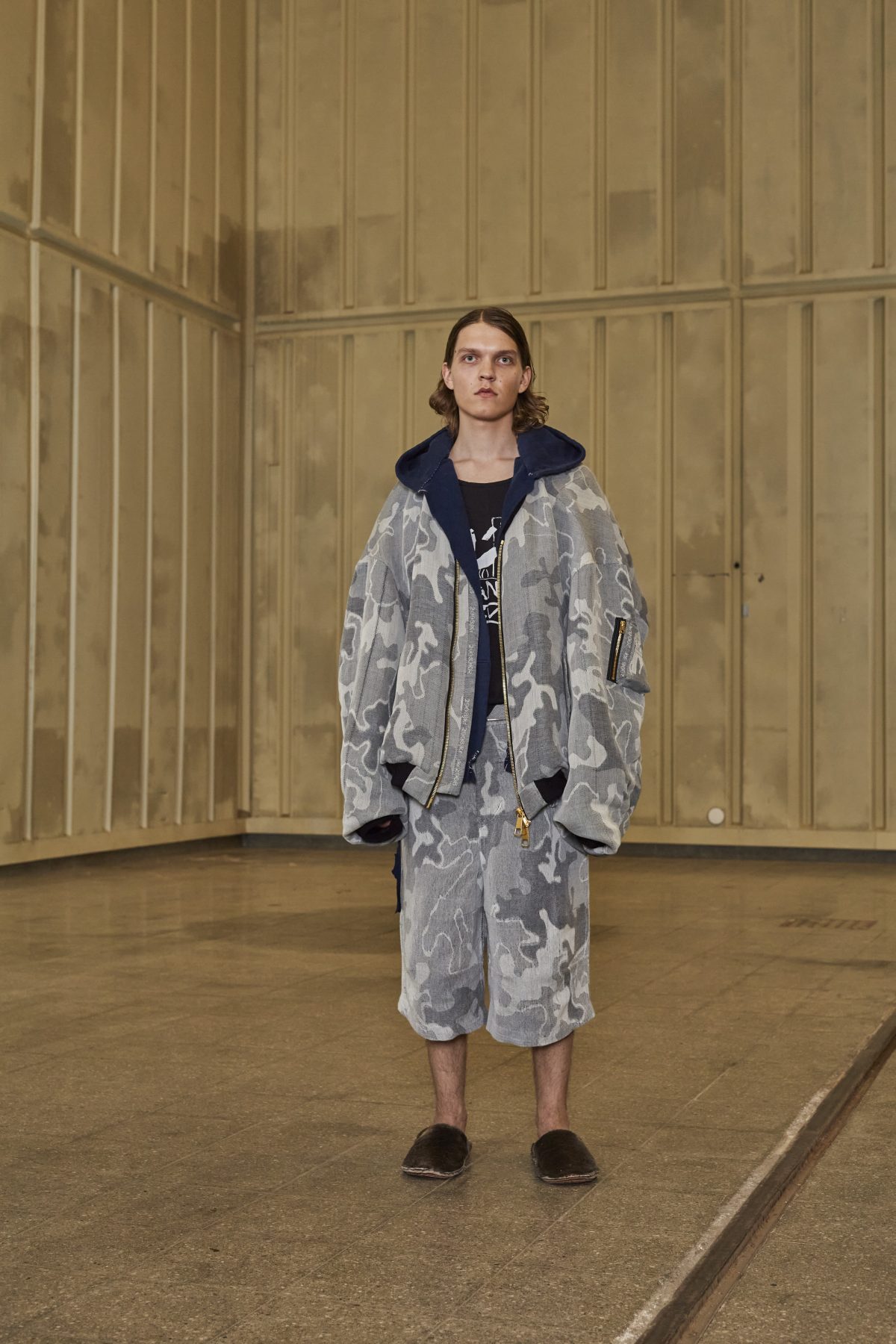 KV_04
KV_04

Kaius Viljanen BA3 Graduate collection Photographer: Sofia Okkonen Model: Elmo
KV_04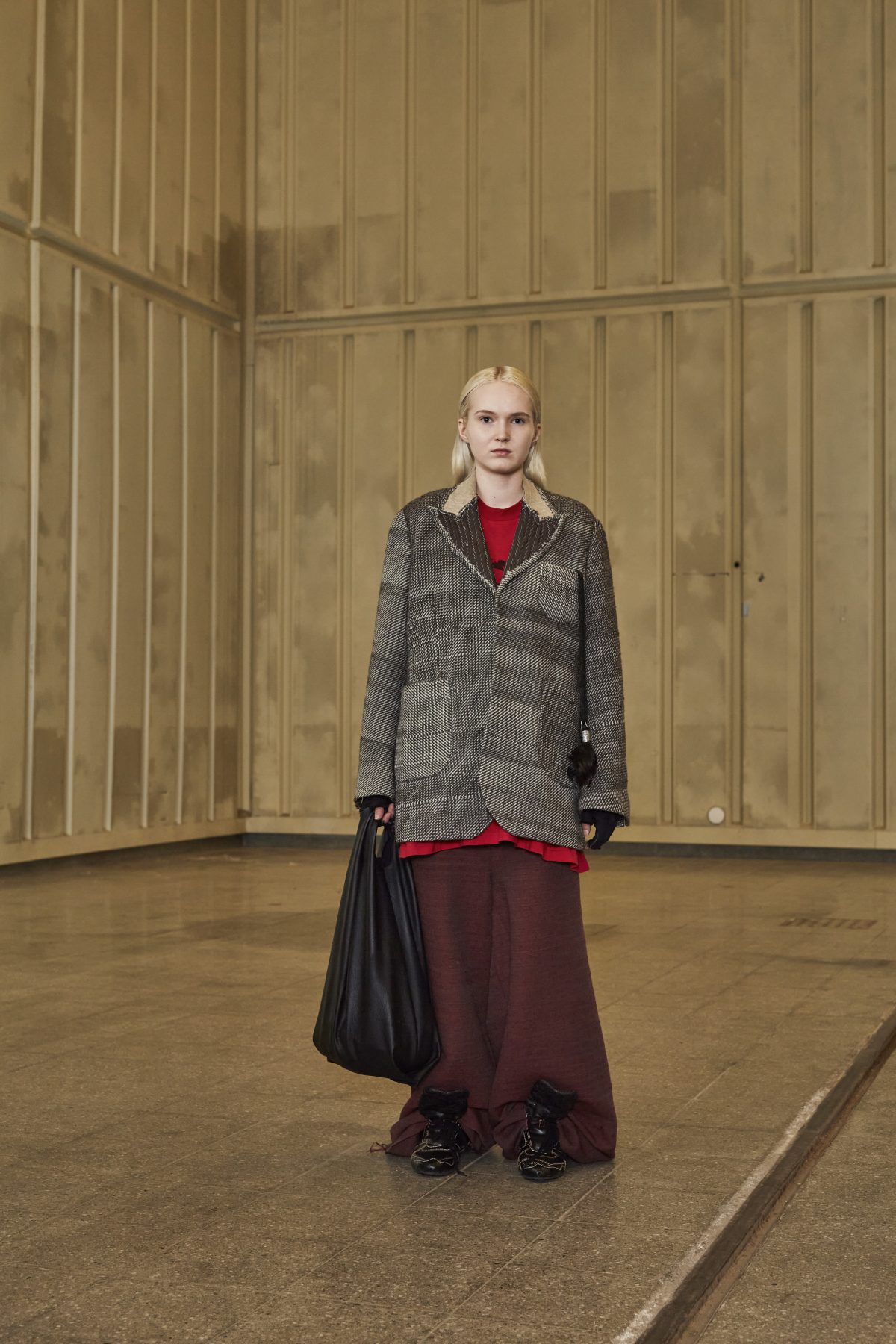 KV_05
KV_05

Kaius Viljanen BA3 Graduate collection Photographer: Sofia Okkonen Model: Erika
KV_05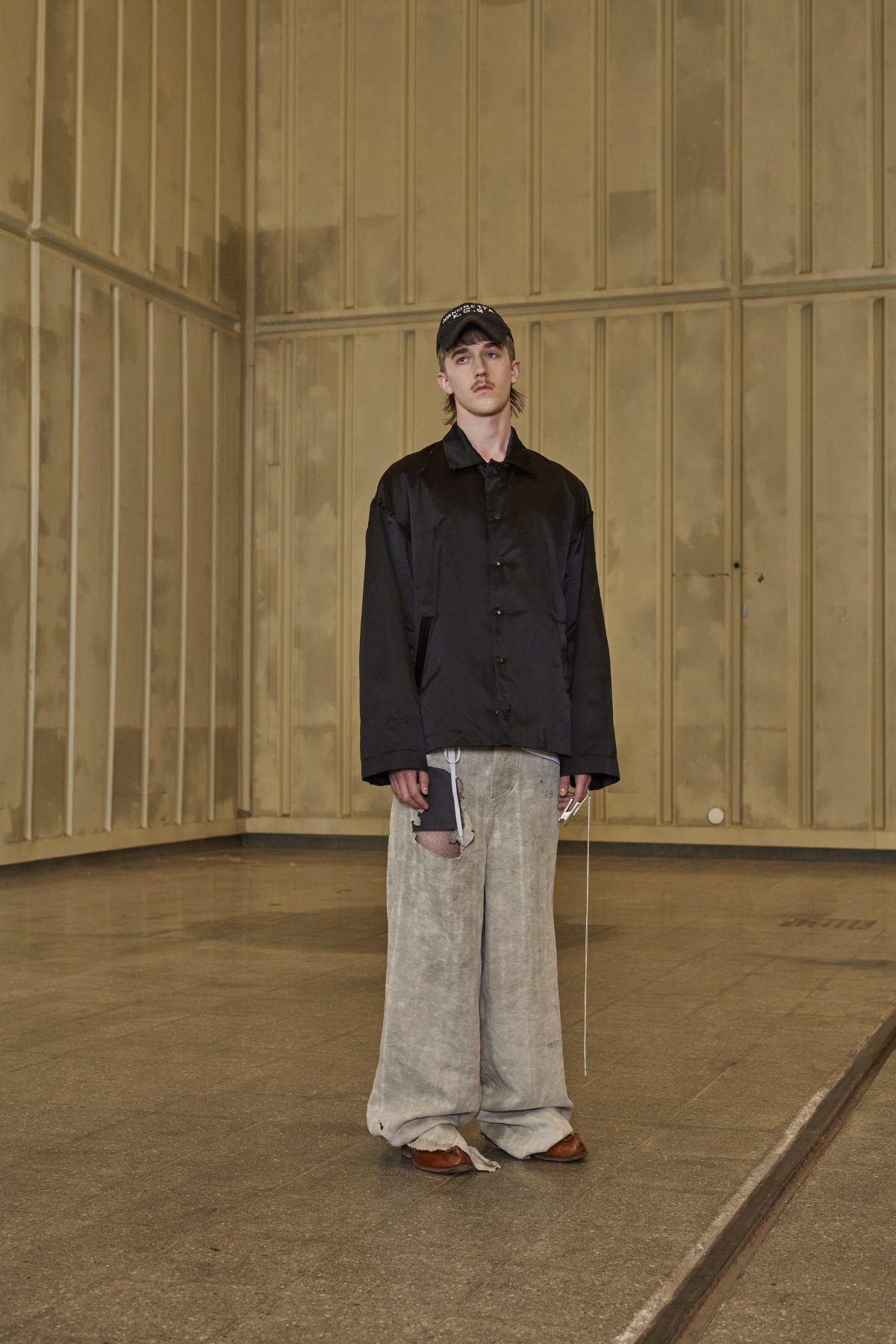 KV_06
KV_06

Kaius Viljanen BA3 Graduate collection Photographer: Sofia Okkonen Model: Bernhard
KV_06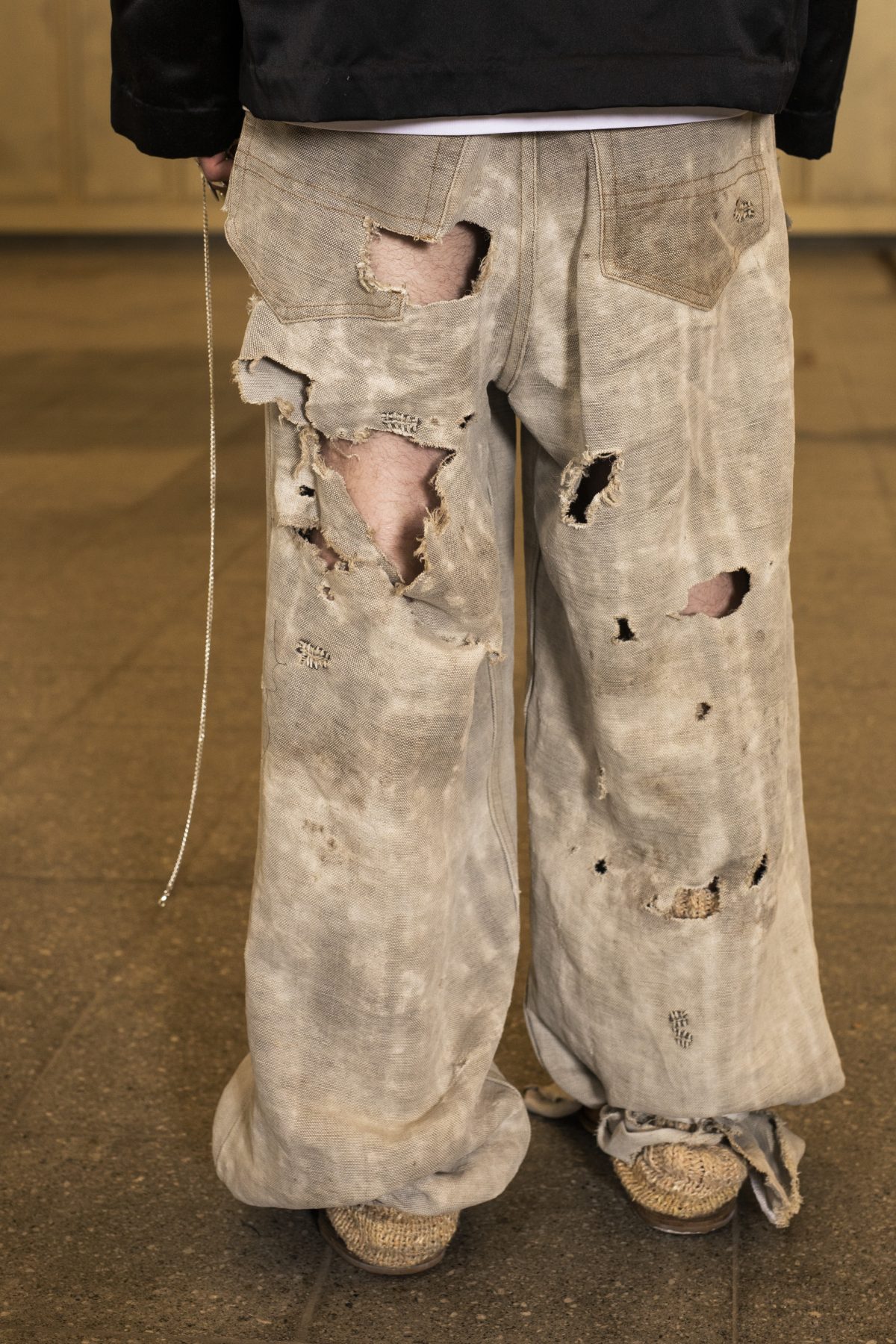 KV_07
KV_07

Kaius Viljanen BA3 Graduate collection Photographer: Sofia Okkonen Model: Bernhard
KV_07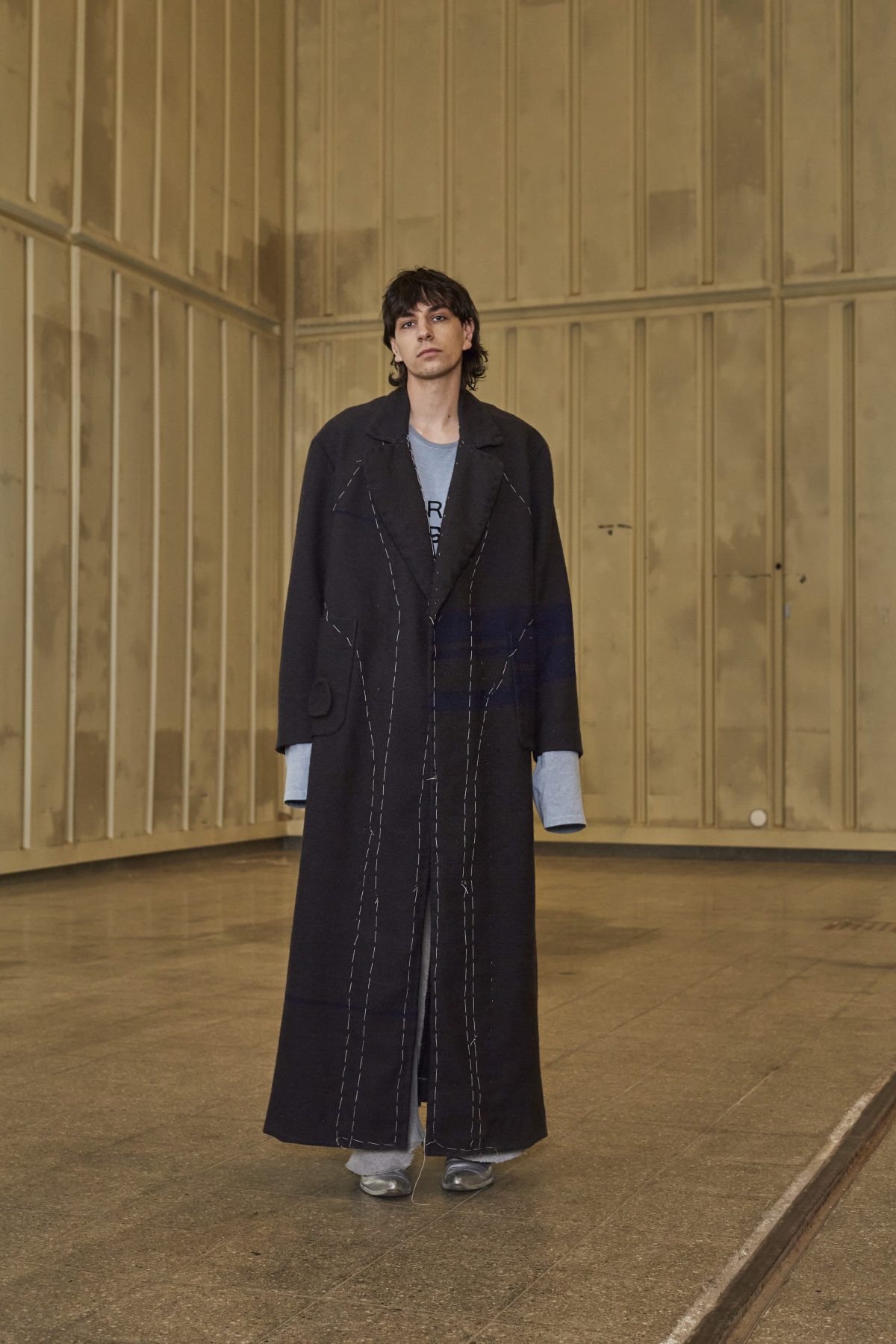 KV_08
KV_08

Kaius Viljanen BA3 Graduate collection Photographer: Sofia Okkonen Model: Rami
KV_08In Kaius Viljanen’s BA Fashion graduate collection hip hop meets men’s tailoring. The collection features hip hop clothing that have been made using traditional tailoring methods, including lots of hand sewing and padding.
Viljanen views pieces of clothing as objects that are fun to feel and to look at up close. His collection consists of clothes that can stand well on their own. He thinks that clothes do not only exist as parts of a larger whole but are also objects that can be appreciated on their own right.
– I am also interested in the garment as a whole, as an object that has an inside and an outside. Sometimes the inside of a garment can even be more important than its outside, Viljanen says.
For the collection Viljanen made garments that consist of rare early 2000’s Finnish hip hop merch shirts and pieces that have been beautifully hand sewn from natural fibers. Some of the iconic shirts he had wanted to own ended up in his collection as replicas, giving the shirts extra value.
– I also collaborated with a few legendary Finnish hip hop artists for some of the prints of the collection as well as with some other designers with shoes and jewelry, he contends.
Kuutti Lemmetyinen
(ba)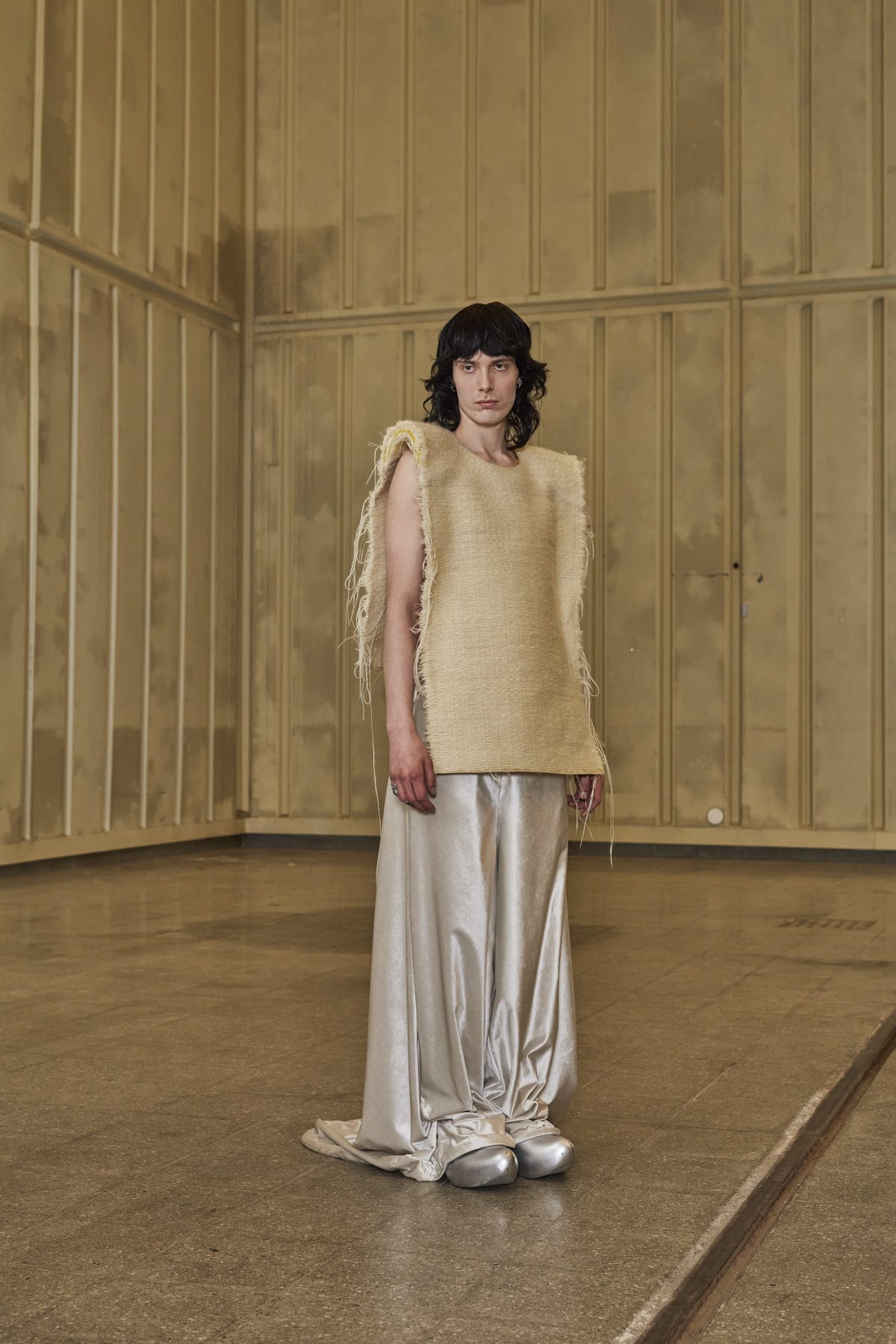 KL_01
KL_01

Kuutti Lemmetyinen BA3 Graduate collection Photographer: Sofia Okkonen Model: Siim
KL_01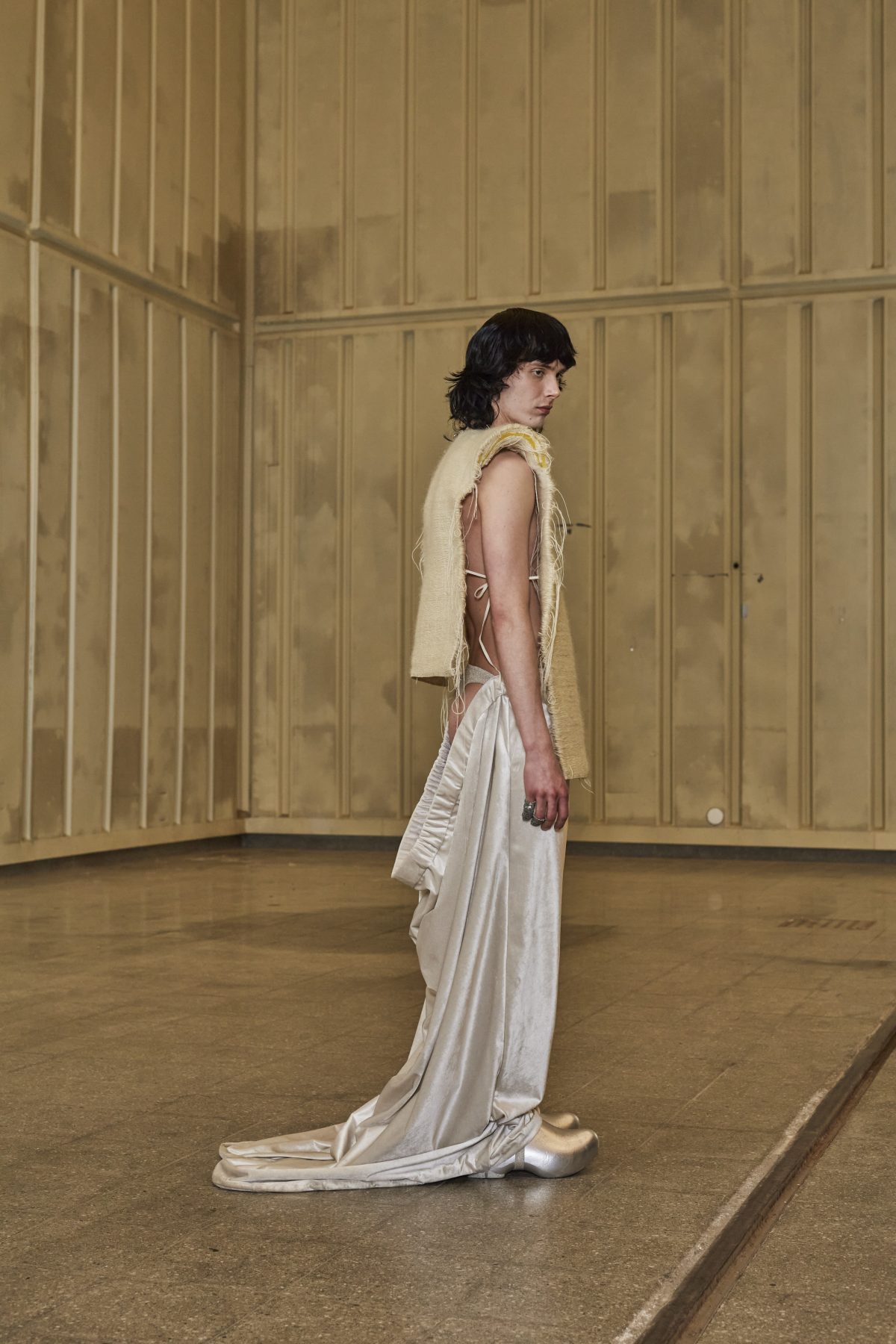 KL_02
KL_02

Kuutti Lemmetyinen BA3 Graduate collection Photographer: Sofia Okkonen Model: Siim
KL_02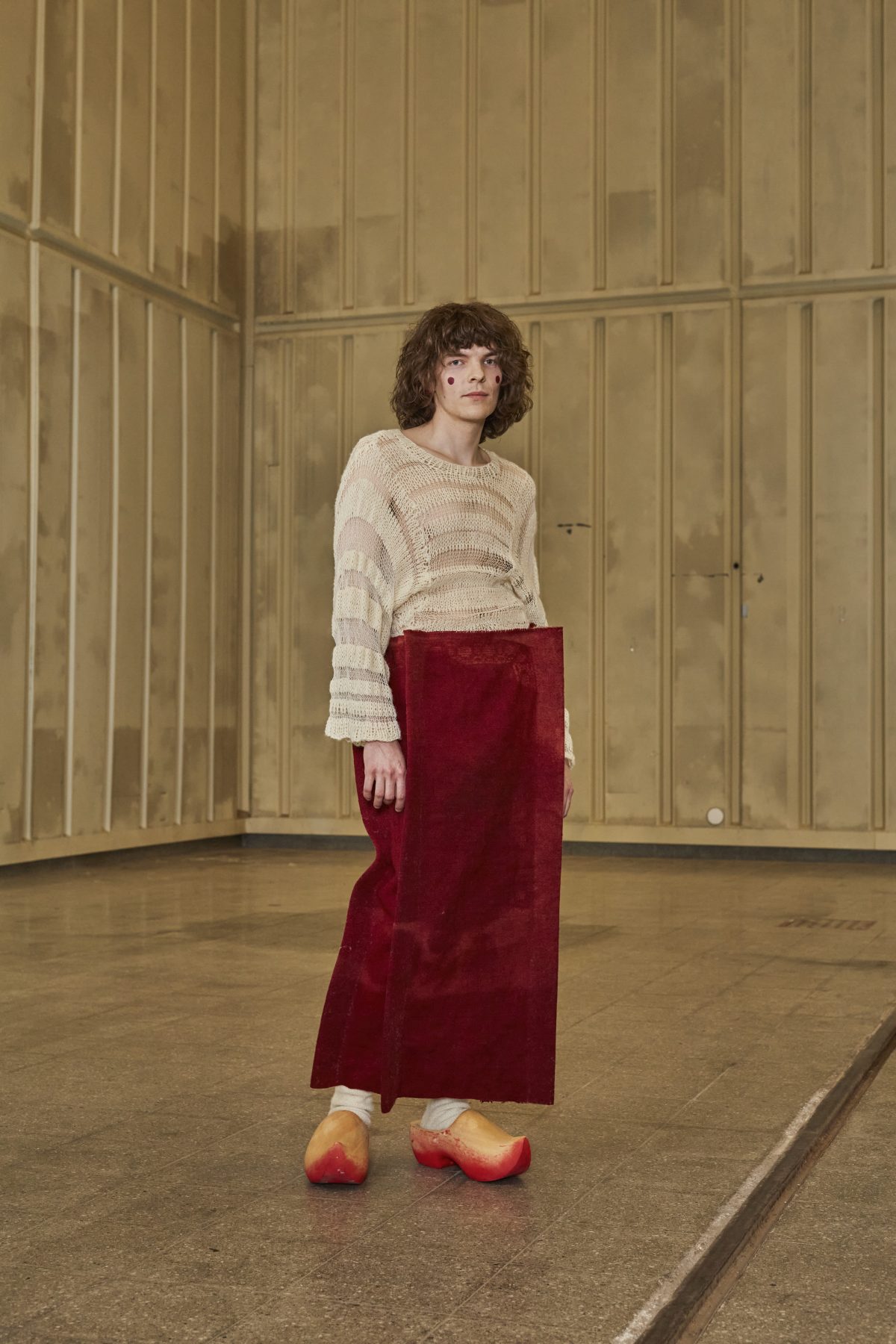 KL_03
KL_03

Kuutti Lemmetyinen BA3 Graduate collection Photographer: Sofia Okkonen Model: Niko
KL_03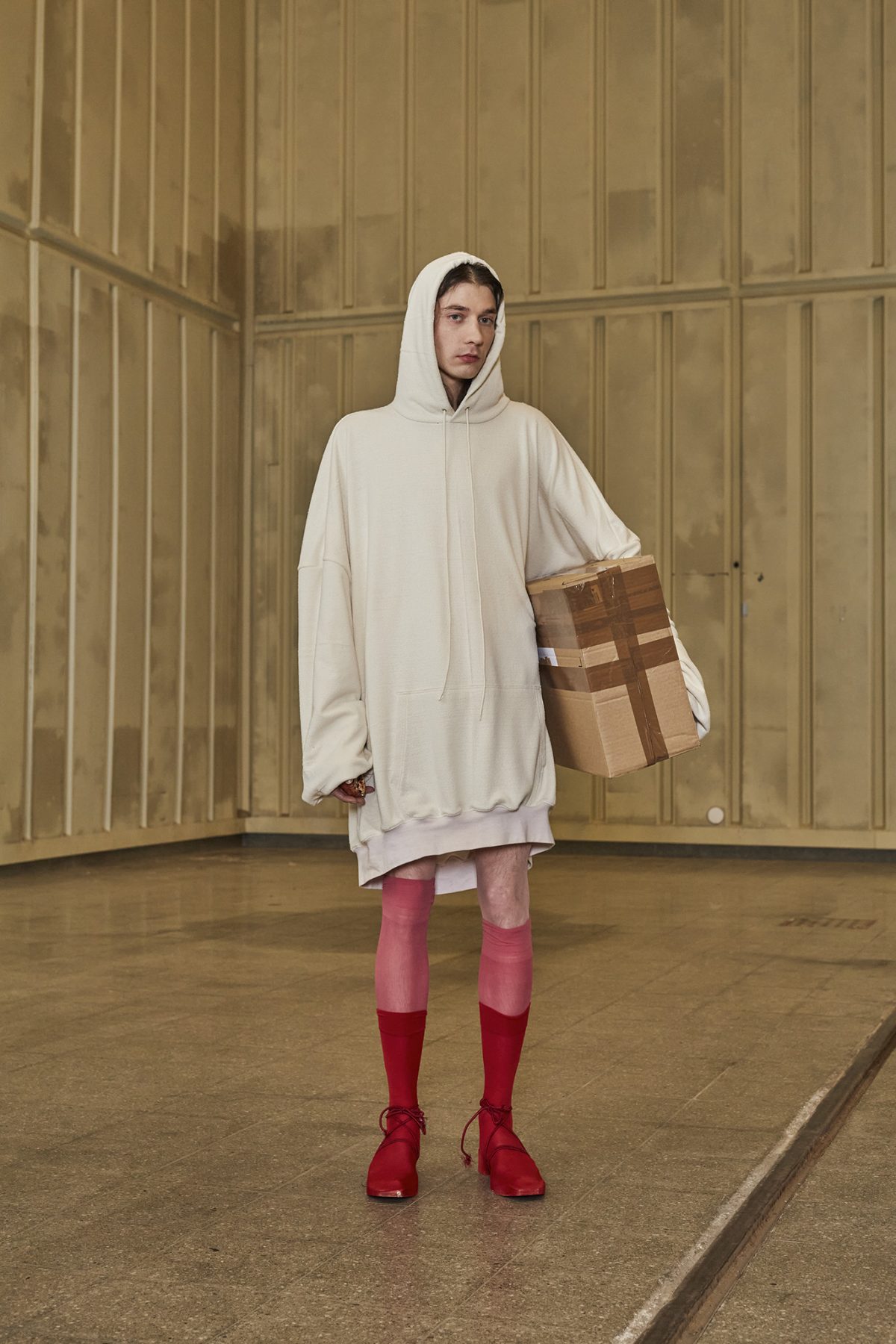 KL_04
KL_04

Kuutti Lemmetyinen BA3 Graduate collection Photographer: Sofia Okkonen Model: Verner
KL_04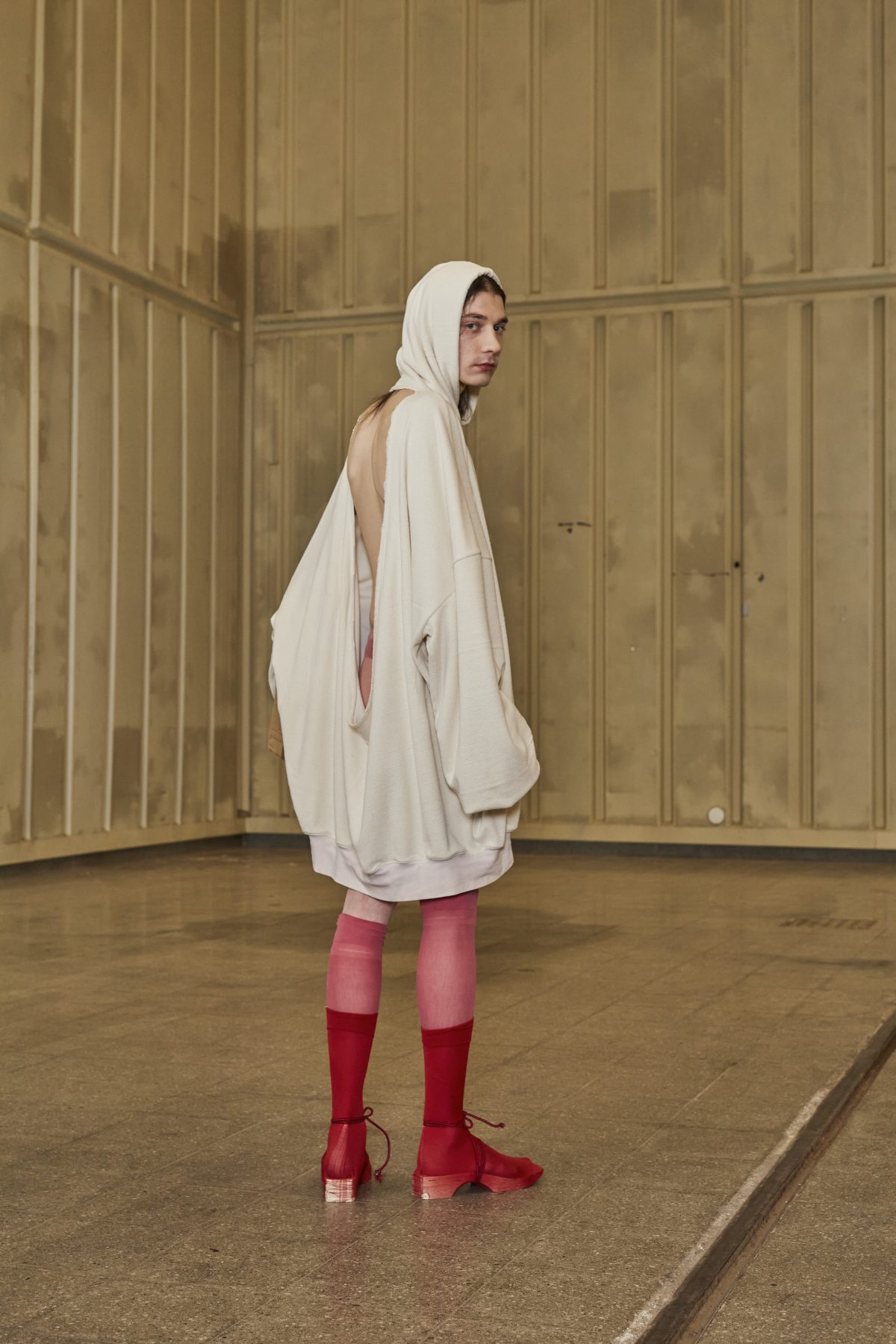 KL_05
KL_05

Kuutti Lemmetyinen BA3 Graduate collection Photographer: Sofia Okkonen Model: Verner
KL_05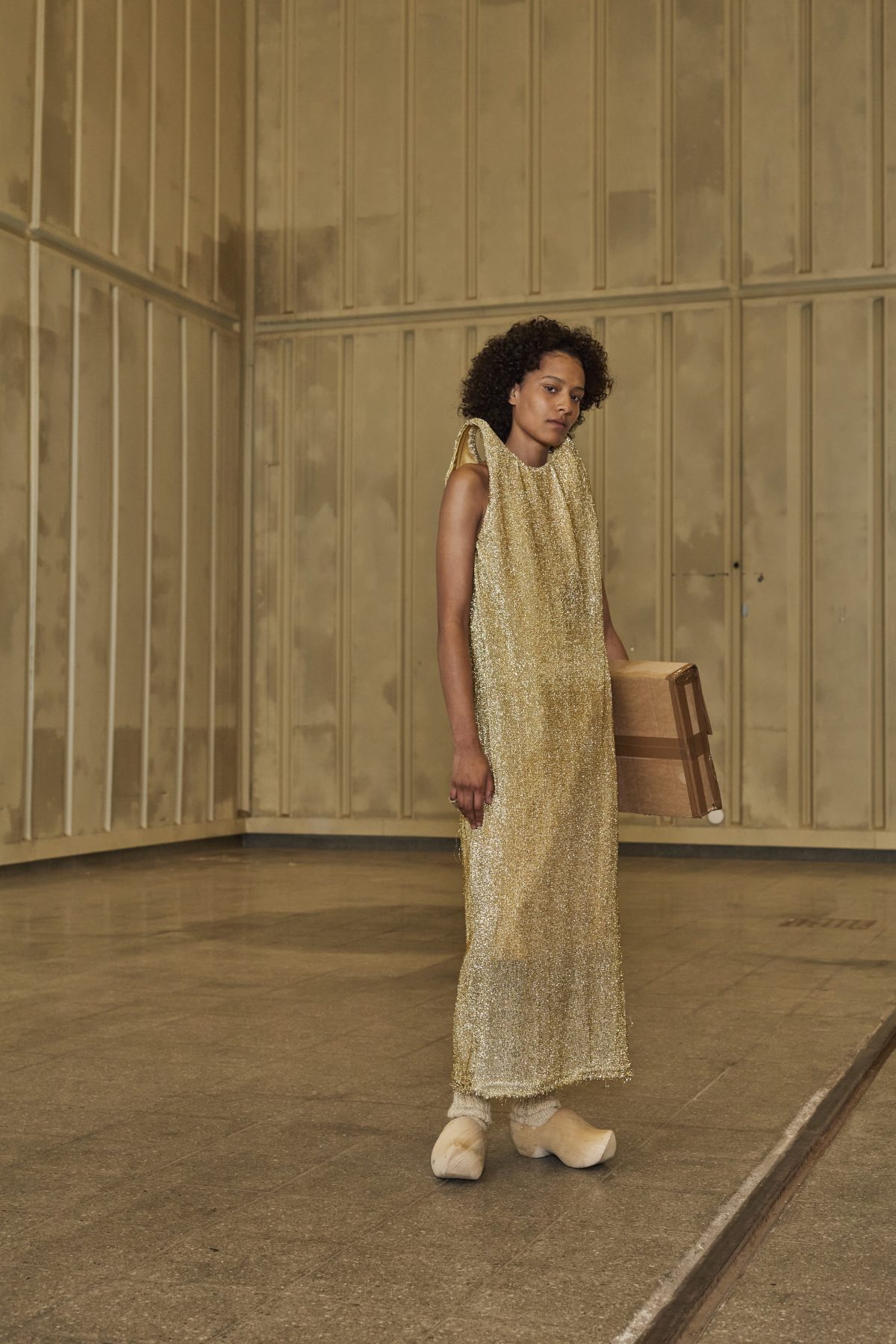 KL_06
KL_06

Kuutti Lemmetyinen BA3 Graduate collection Photographer: Sofia Okkonen Model: Leila
KL_06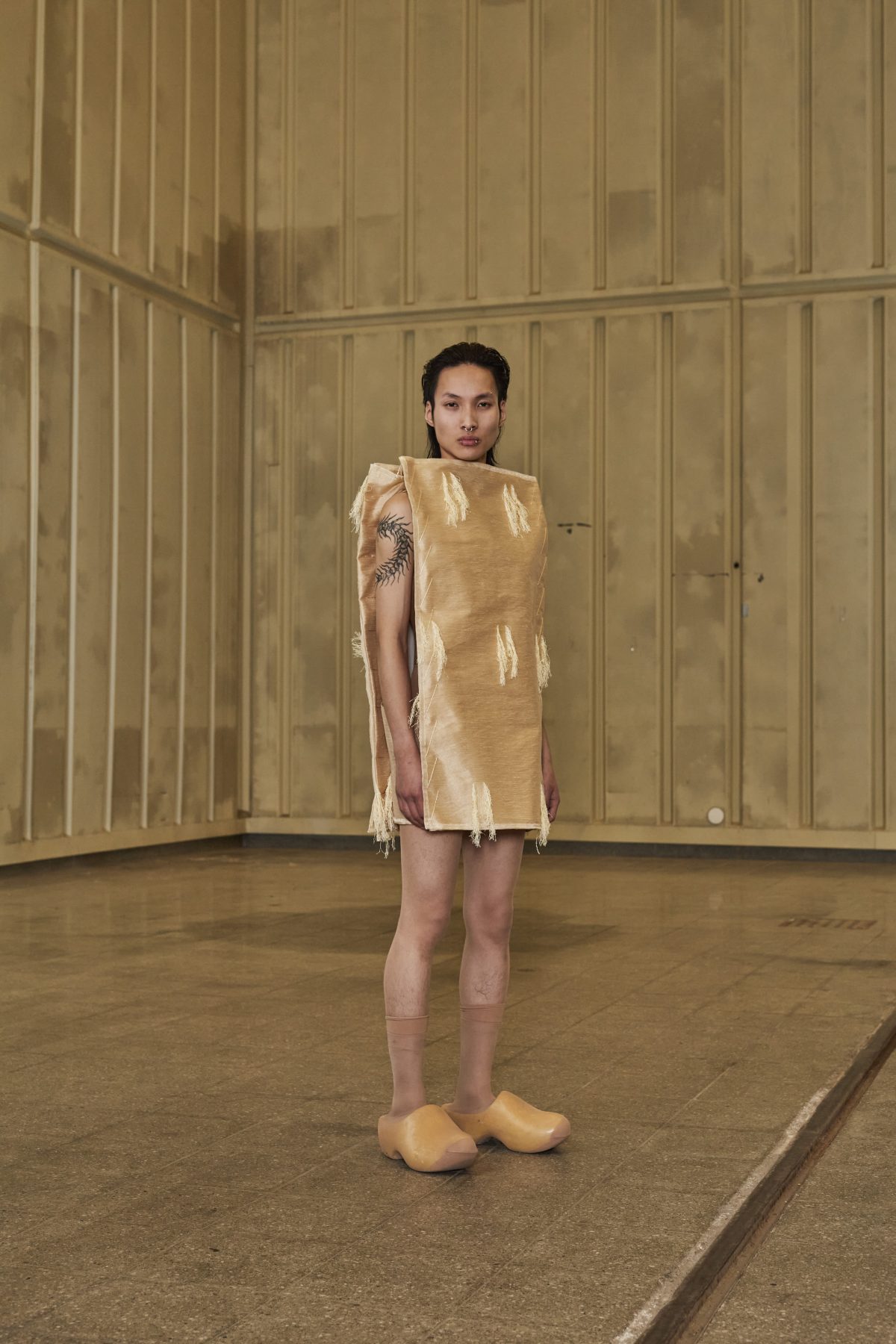 KL_07
KL_07

Kuutti Lemmetyinen BA3 Graduate collection Photographer: Sofia Okkonen Model: Kimi
KL_07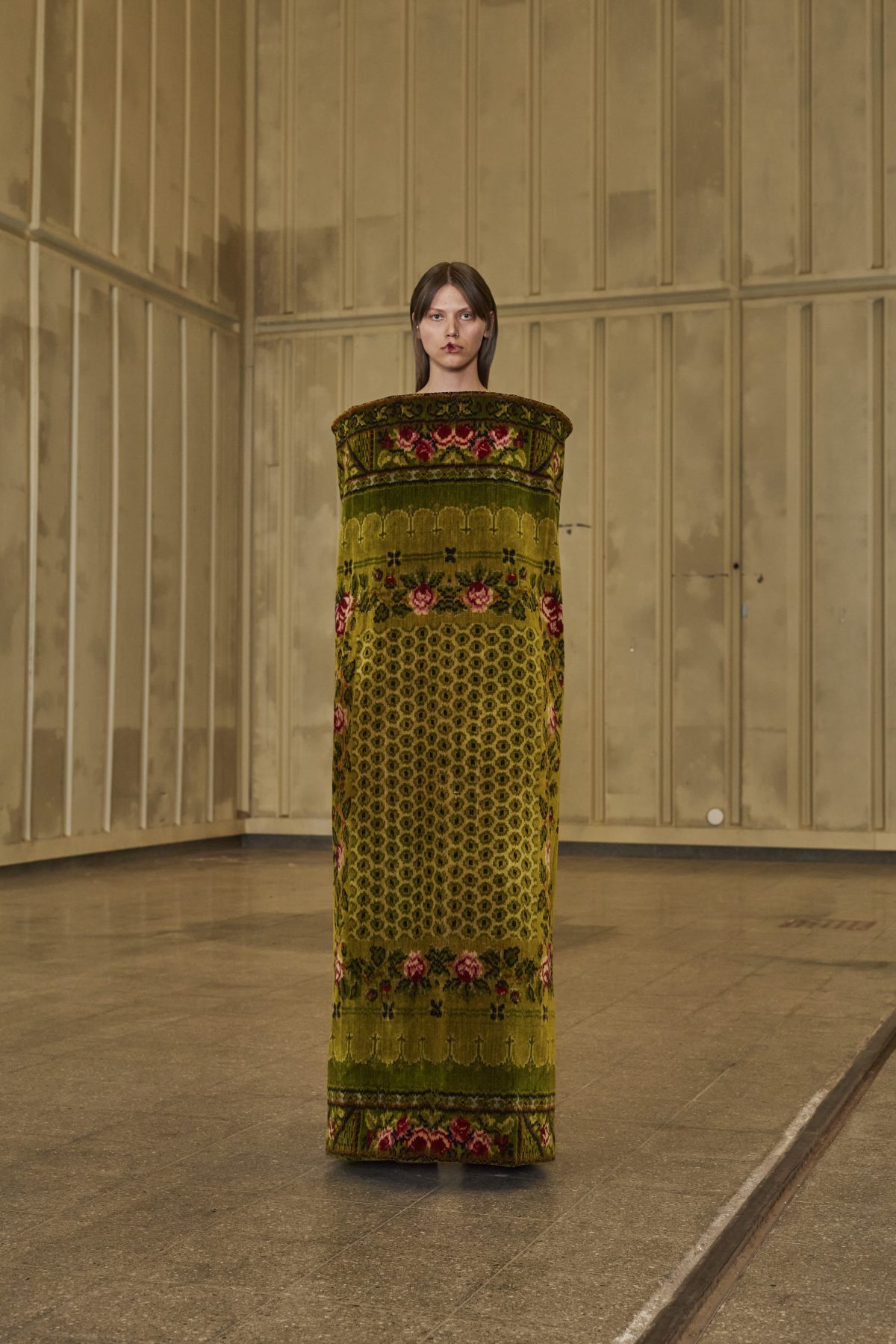 KL_08
KL_08

Kuutti Lemmetyinen BA3 Graduate collection Photographer: Sofia Okkonen Model: Viivi
KL_08It is not a dog by watching the fur
(ei ole koiraa karvoihin katsominen)
Kuutti Lemmetyinen
BA Fashion graduate collection
“Is it a piece of garment if it’s just fabric wrapped around the body?”
– Kuutti Lemmetyinen
Kuutti Lemmetyinen has worked on his BA collection by researching the idea of the garment, what it hides and how it makes different surfaces and layers. The core question has been the study of the boundaries of a garment, what it is and what it is not. What makes garment a garment?
– I have tried to get into the structures and shapes to reveal and also cover what lies underneath the garment, so pretty much just the main point of making clothing, like peeling a fruit, Lemmetyinen explains.
The contrast between materials – glamorous or crummy, antique or brand-new – is also one of the cornerstones of the collection. Each material lives in a world of its own.
Most common working method is to mislead, work on the garment’s inside to make a shell for the body. Creating shapes with different supporting structures and draping. Using techniques such as felting and folding instead of sewing and having hidden corsets to hang the curtain over the body. Studying the garment from different visual angles and playing hide and seek with it.
Niilo Tervevuori
(ba)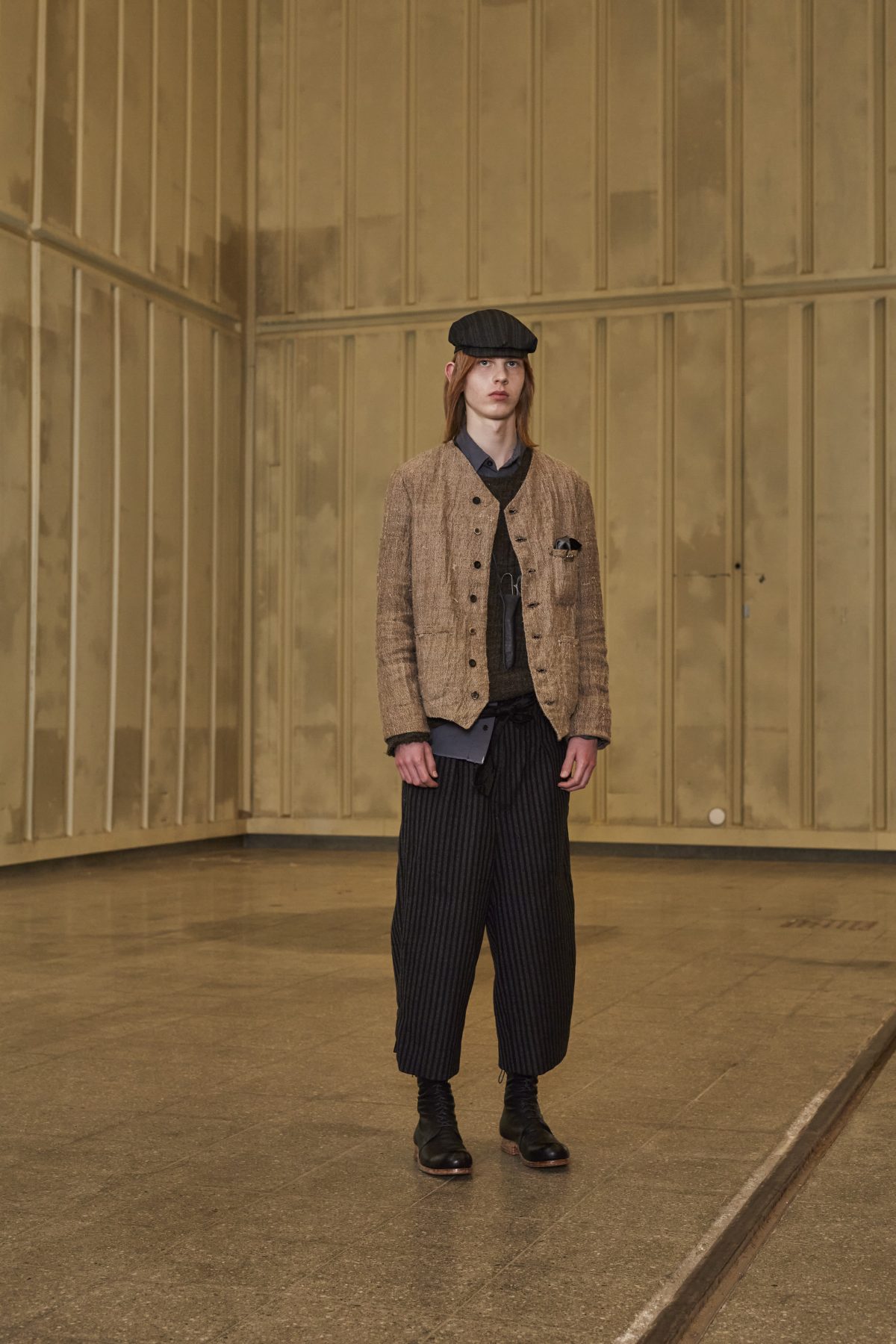 NT_01
NT_01

Niilo Tervevuori BA3 Graduate collection Photographer: Sofia Okkonen Model: Luukas
NT_01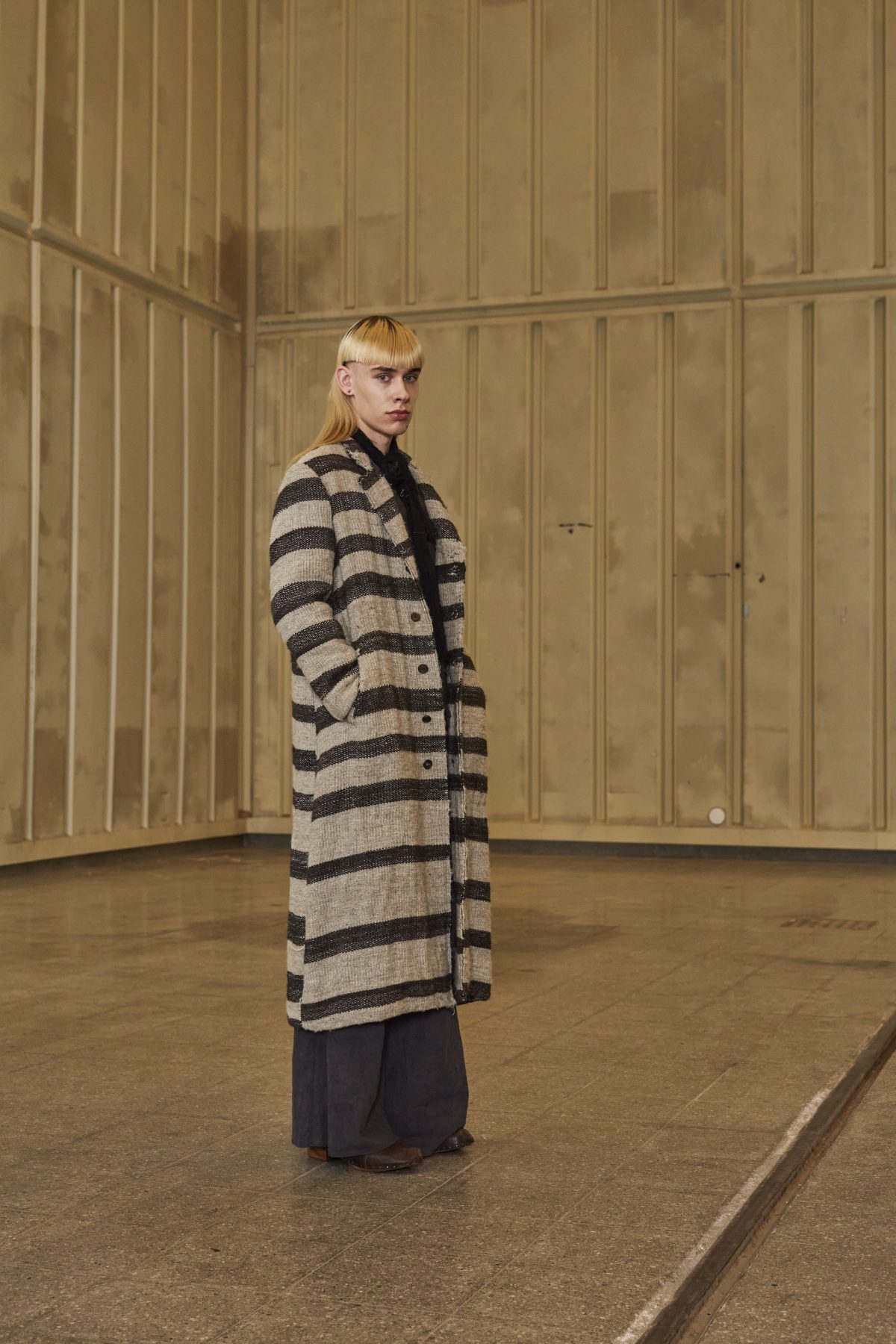 NT_02
NT_02

Niilo Tervevuori BA3 Graduate collection Photographer: Sofia Okkonen Model: Reko
NT_02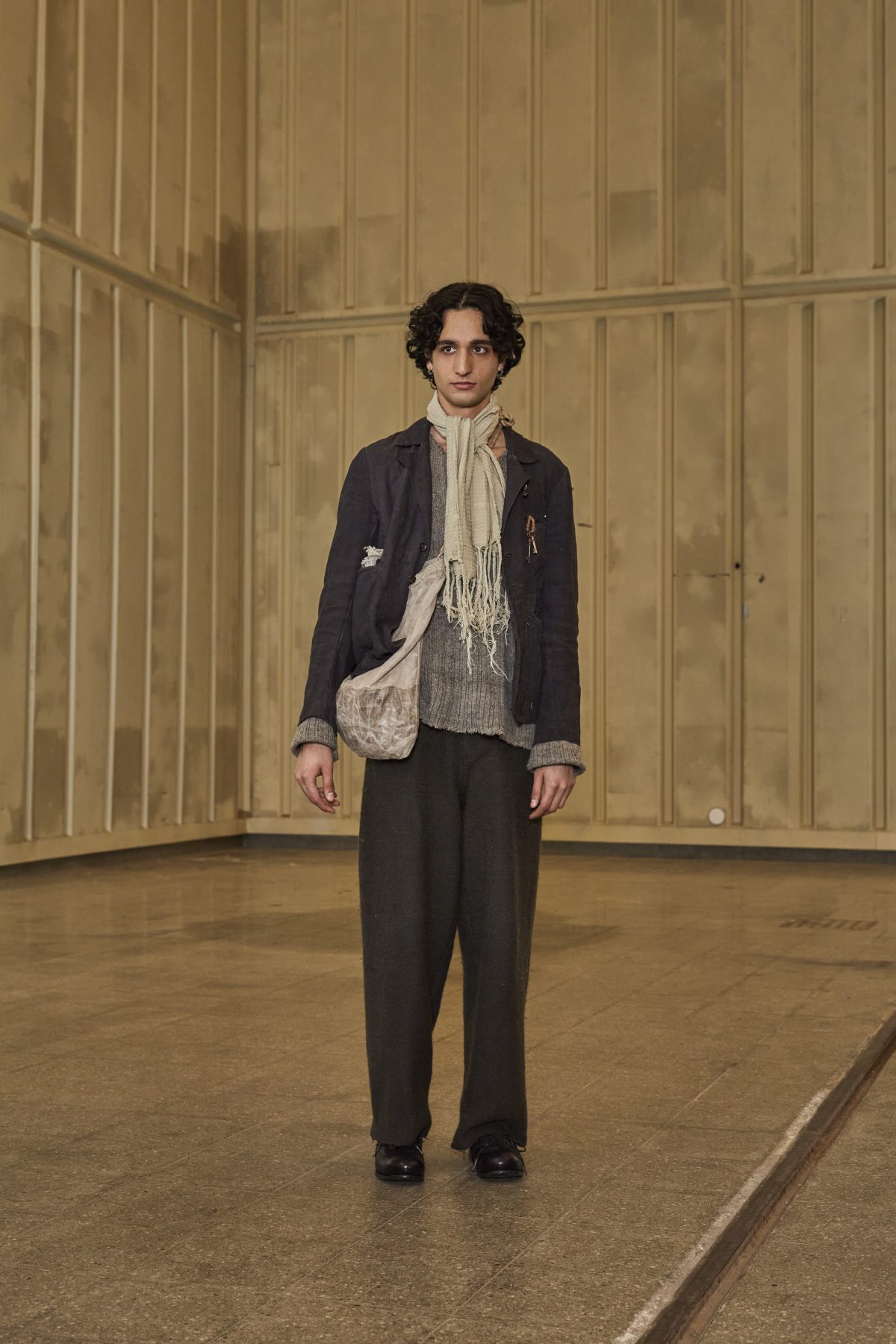 NT_03
NT_03

Niilo Tervevuori BA3 Graduate collection Photographer: Sofia Okkonen Model: Mahan
NT_03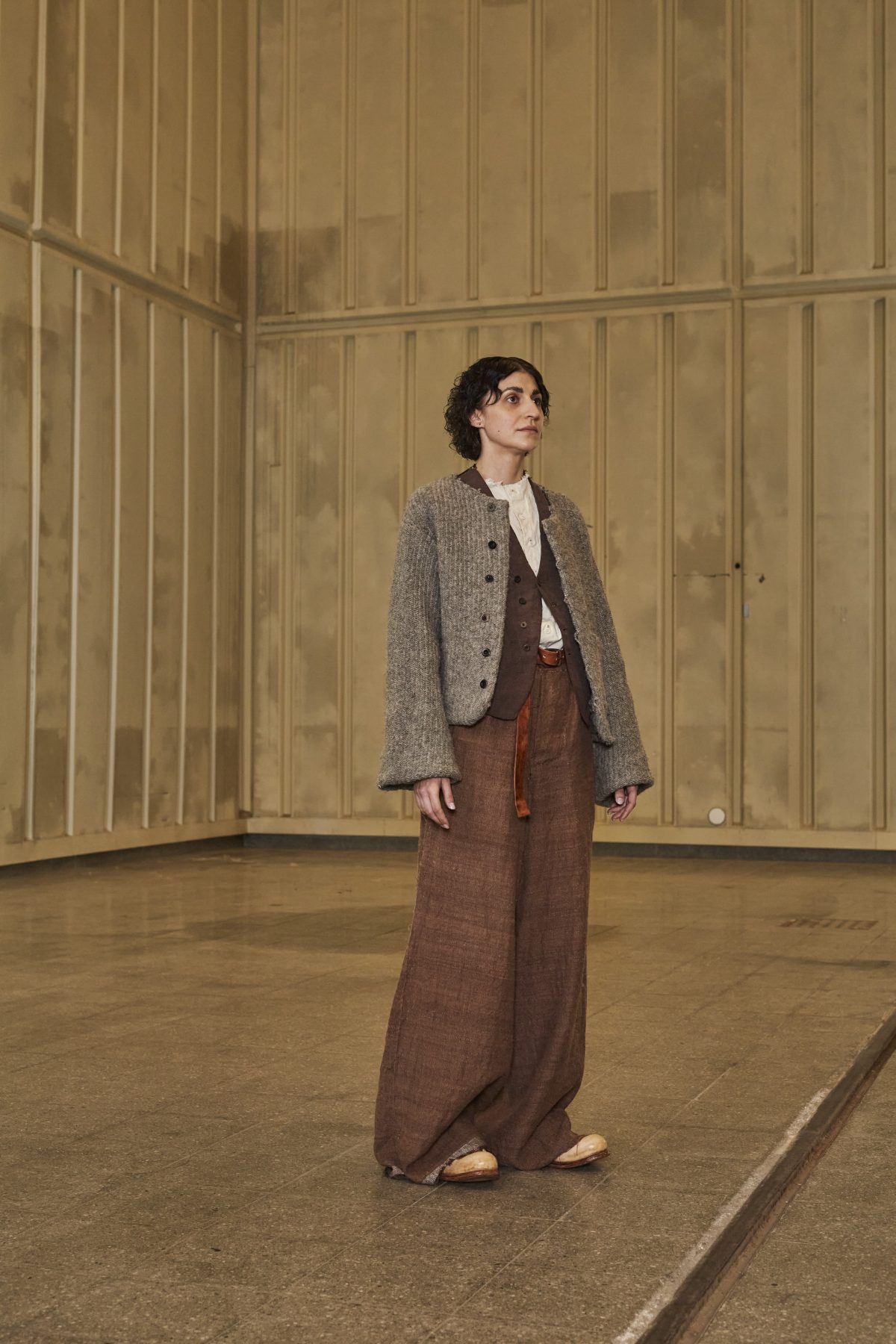 NT_04
NT_04

Niilo Tervevuori BA3 Graduate collection Photographer: Sofia Okkonen Model: Jenna
NT_04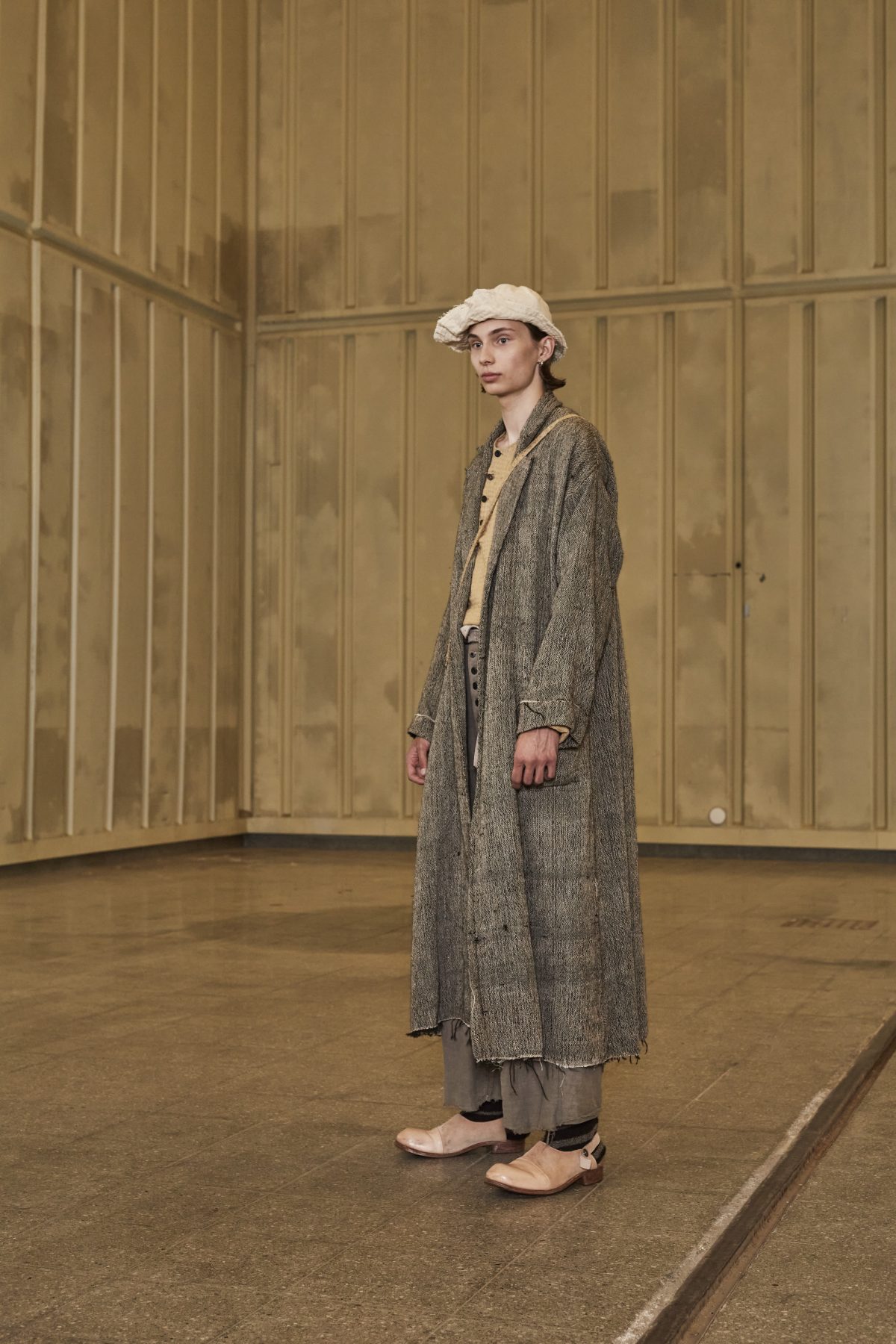 NT_05
NT_05

Niilo Tervevuori BA3 Graduate collection Photographer: Sofia Okkonen Model: Viljami
NT_05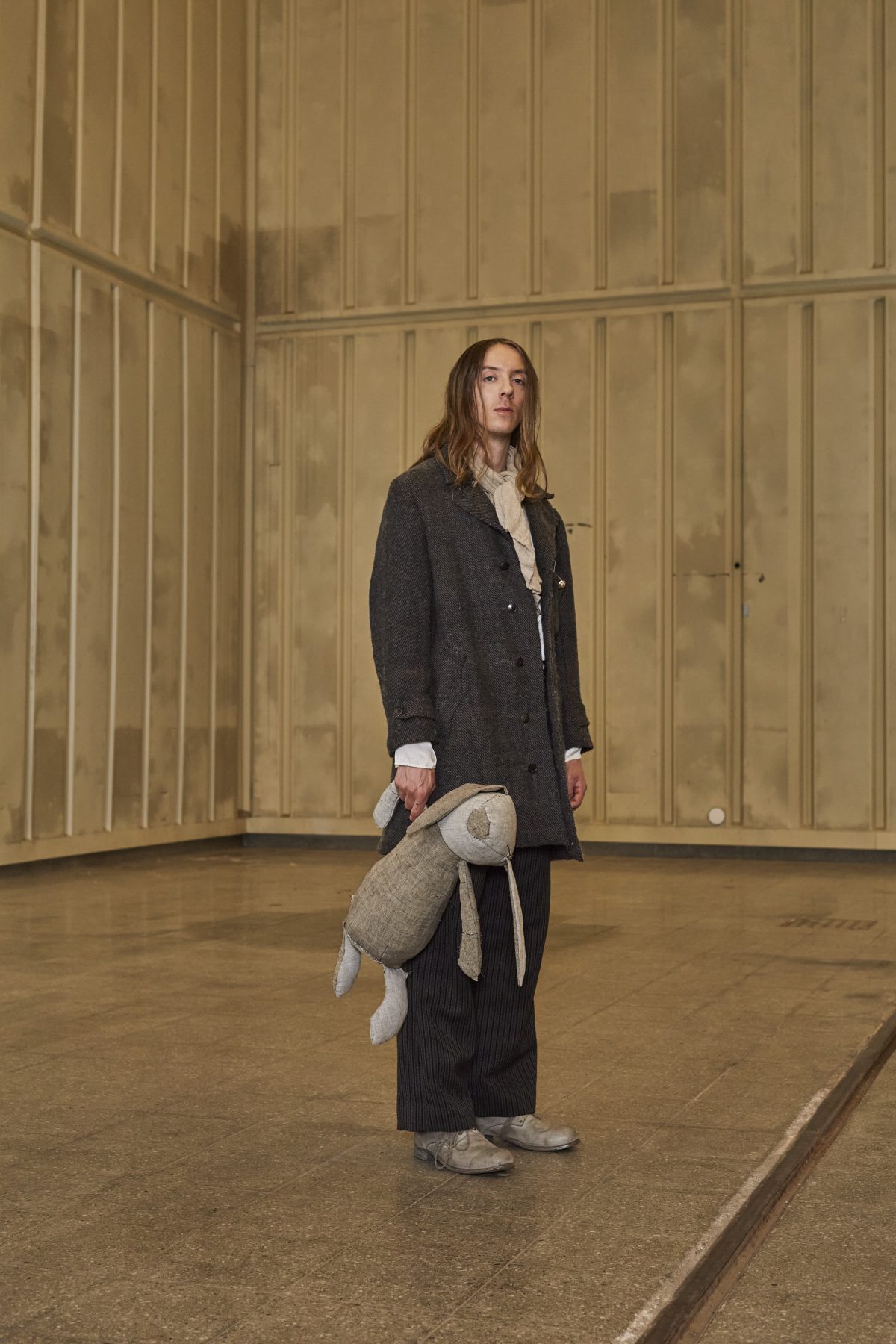 NT_06
NT_06

Niilo Tervevuori BA3 Graduate collection Photographer: Sofia Okkonen Model: Nikita
NT_06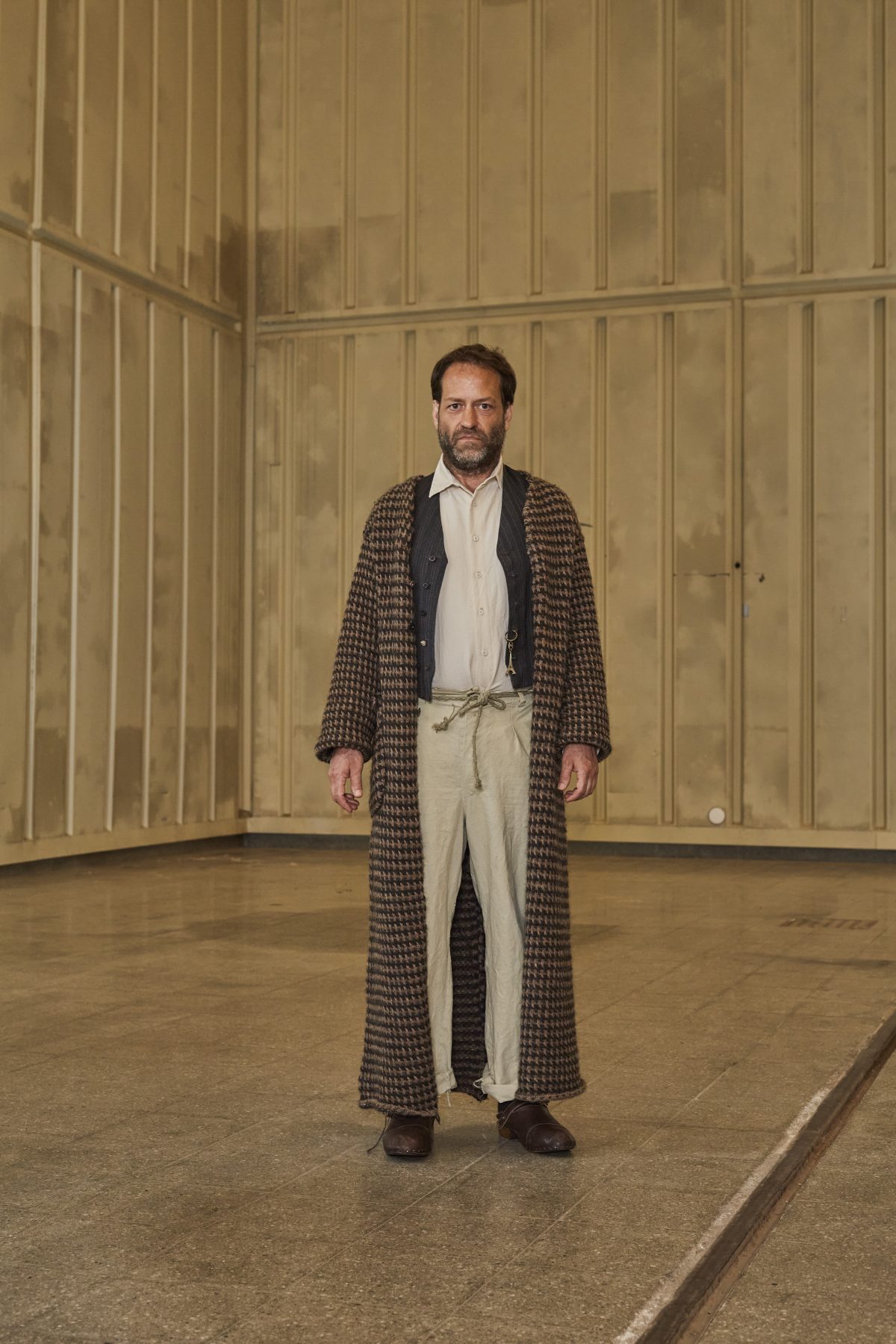 NT_07
NT_07

Niilo Tervevuori BA3 Graduate collection Photographer: Sofia Okkonen Model: Brian
NT_07From handmade and hand dyed materials to hand sewn pieces, Niilo Tervevuori’s collection displays the touch of the human hand in its rawest form. Tervevuori has not used any industrial clothing making methods but instead constructed the garments by applying and developing craft techniques. This has allowed him not to conform to the confines and restrictions of the modern industry.
– A garment’s purpose is to contort to its wearer, leading to its eventual and inevitable destruction. Clothing is meant to be repaired when damaged, which in turn imbues the garment with added value, character, and depth, Tervevuori explains.
The collection takes a stand to the ubiquitous and unquestioned overconsumption fueled by the availability and omnipresence of fast fashion. This collection seeks to inspire people to embrace the beauty of artisanship and craftsmanship.
– Each handmade garment and its details provide a visual narrative which reflects the mind of the maker; vulnerability, passion, and a total surrender to the craft: these tell the story of the craftsman.
Shoes of the collection are handmade by Niklas Järvi.